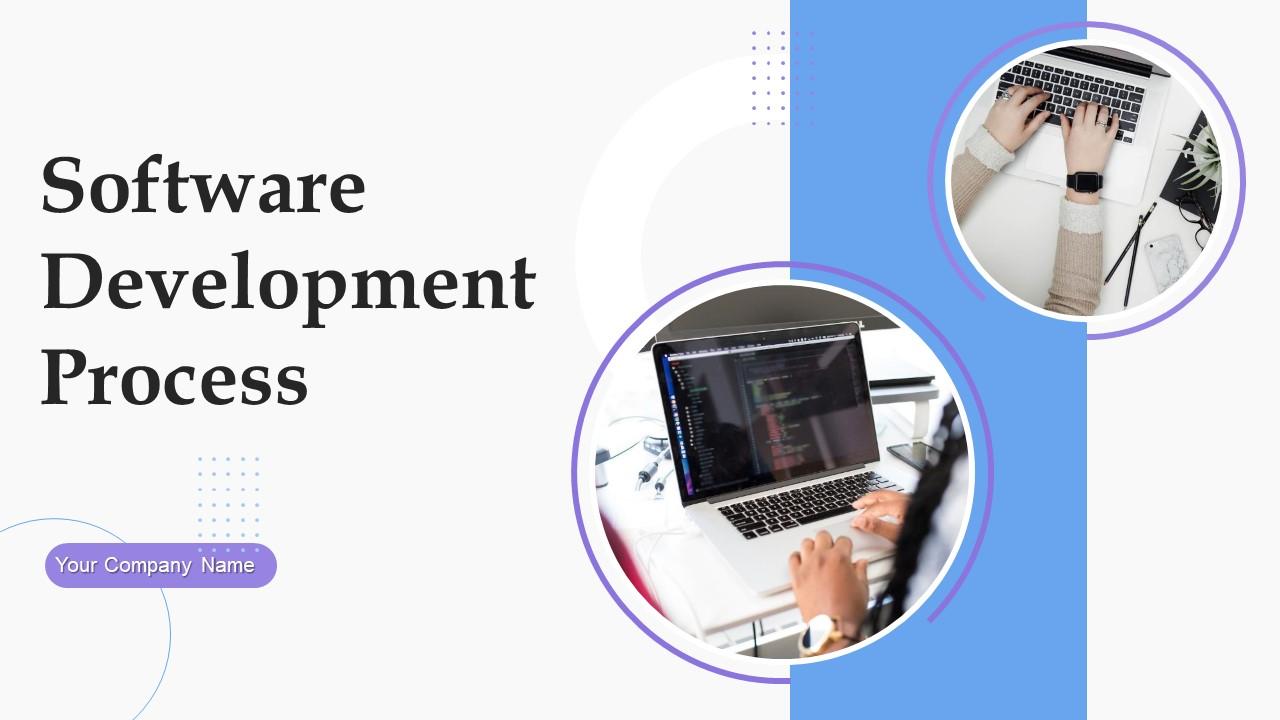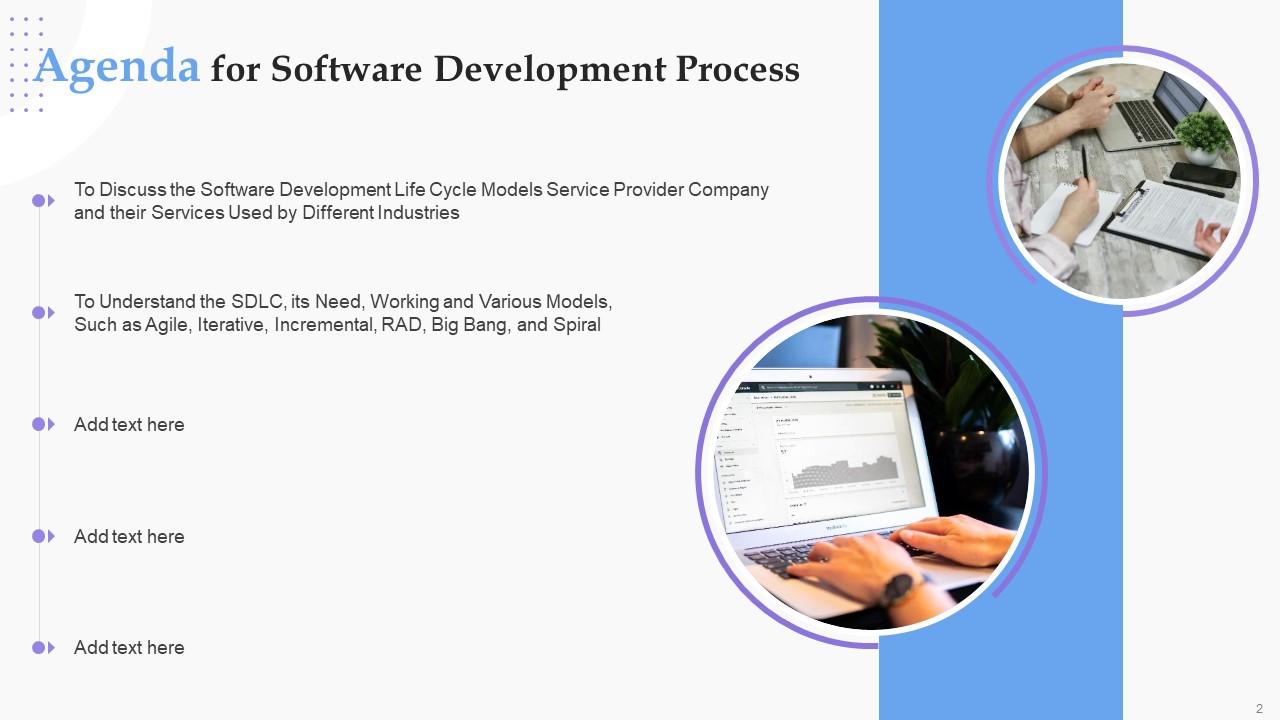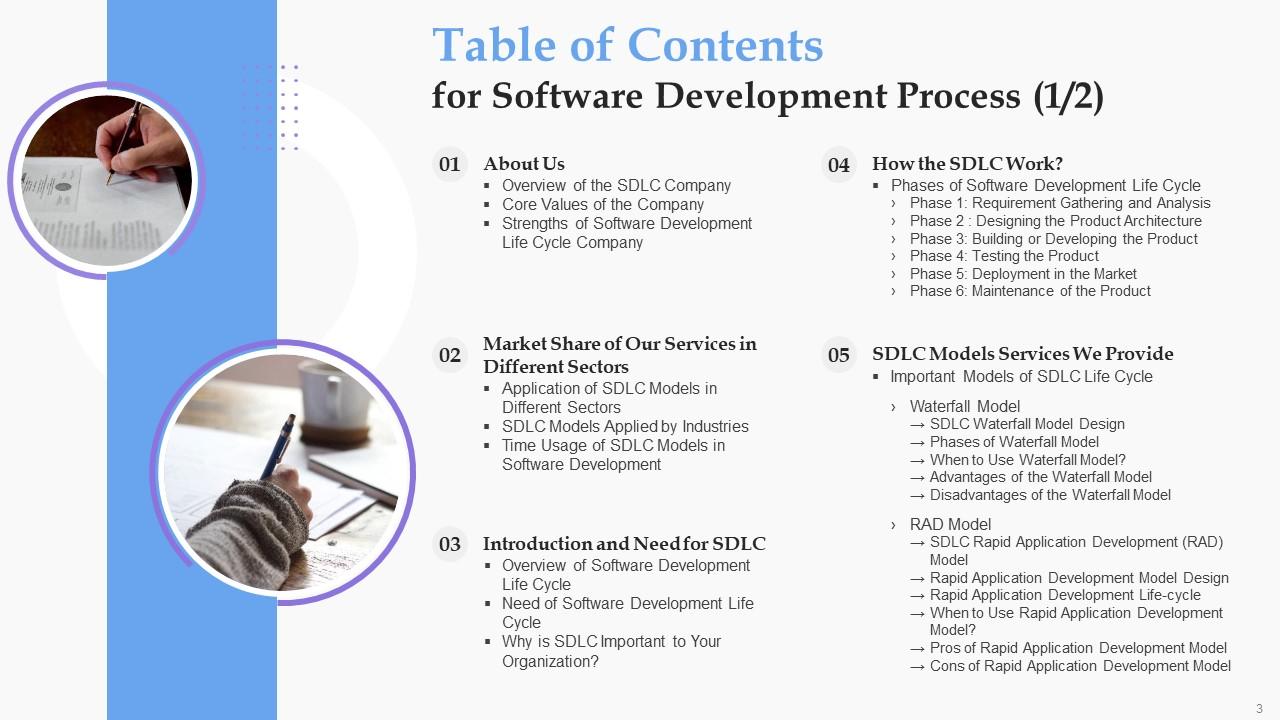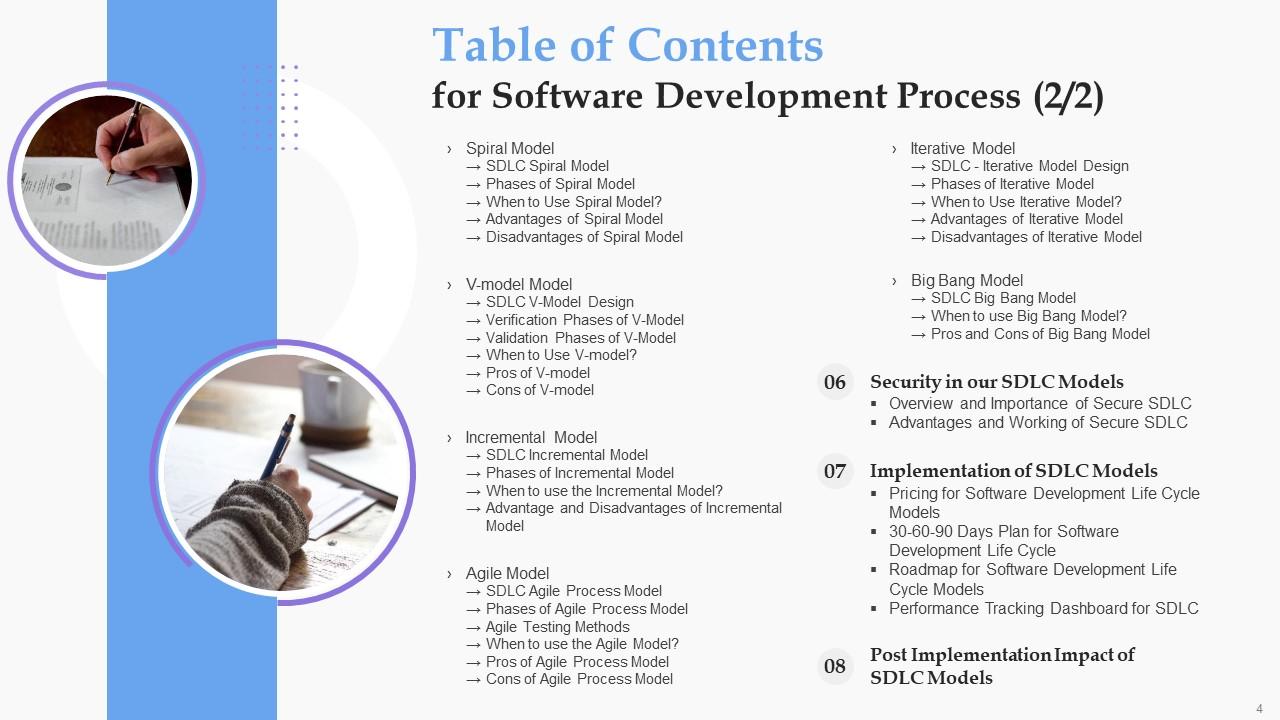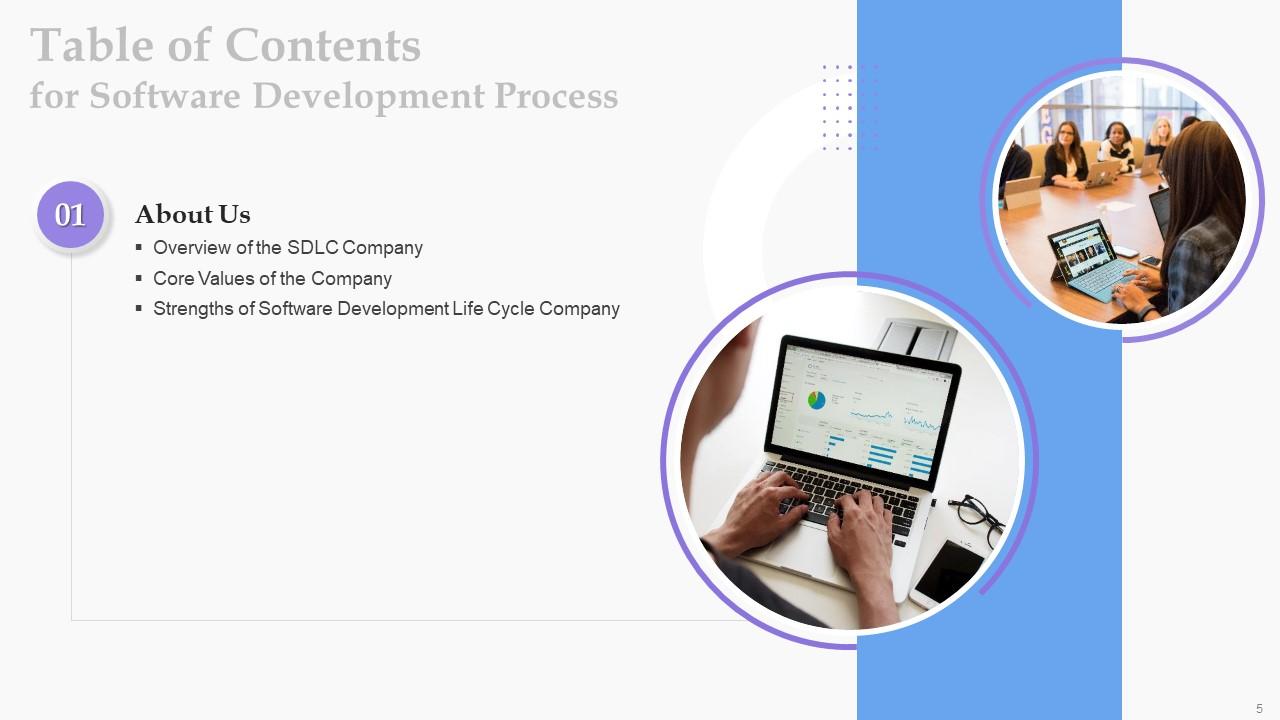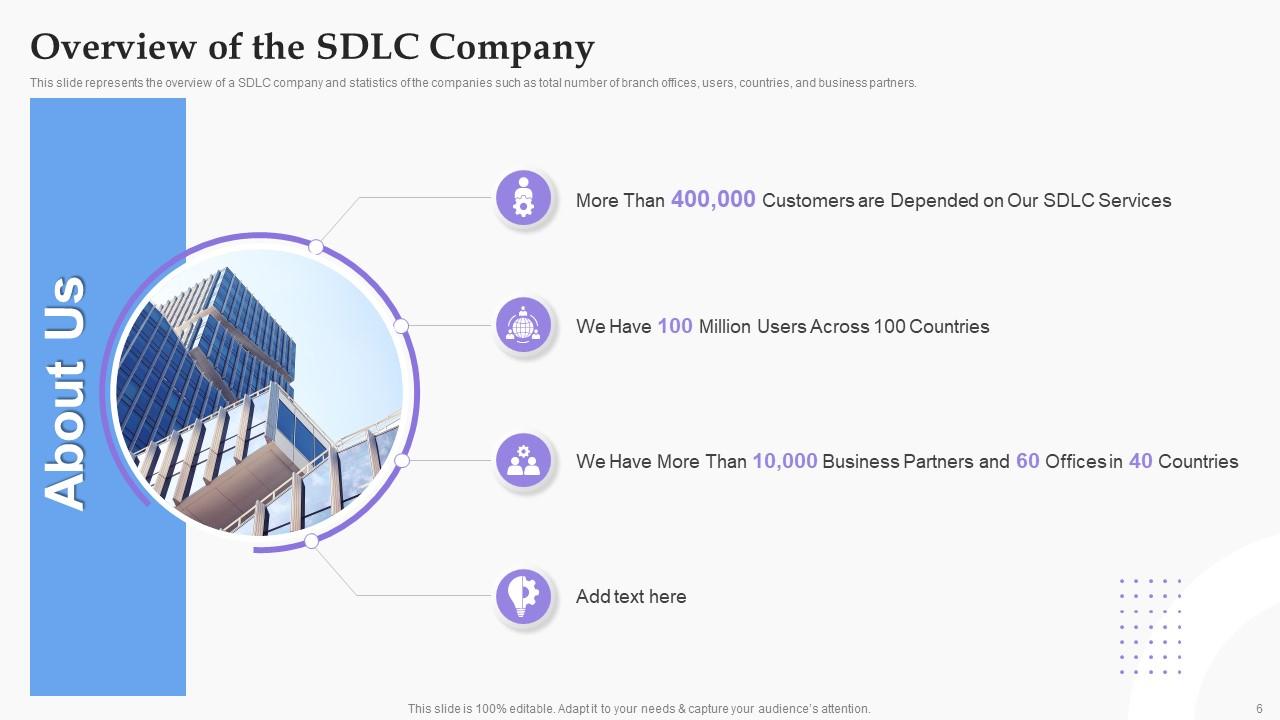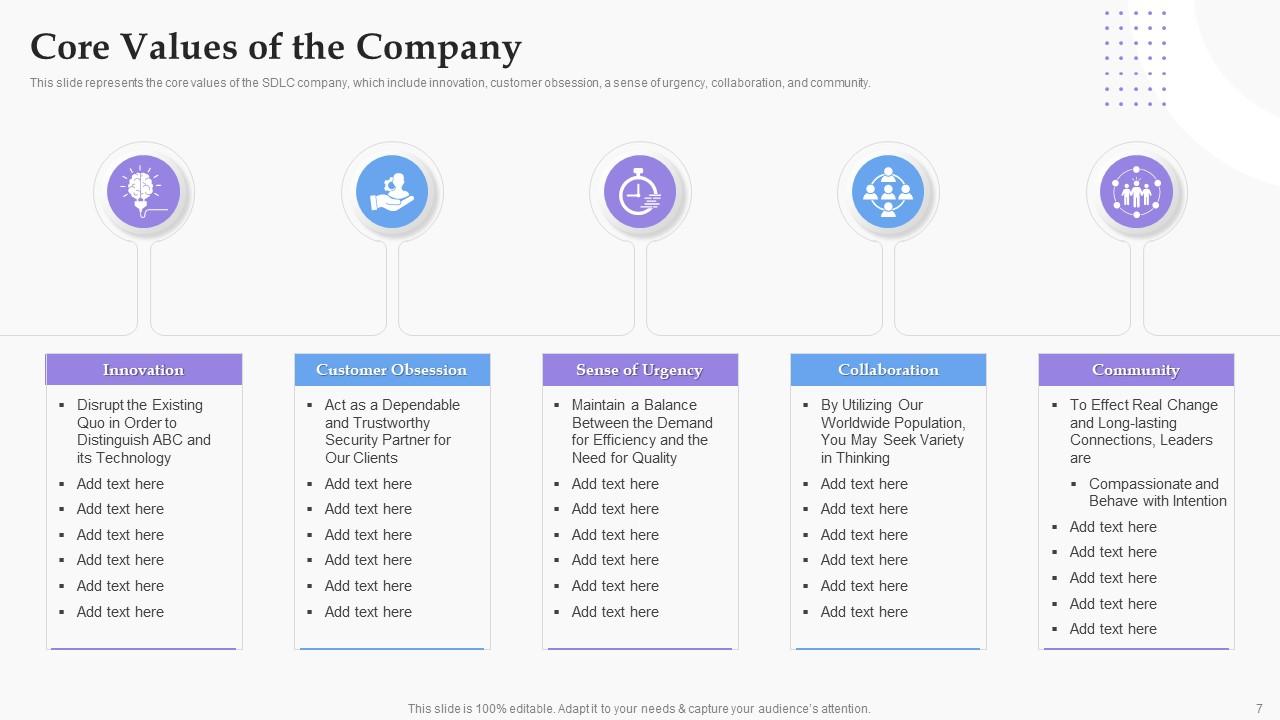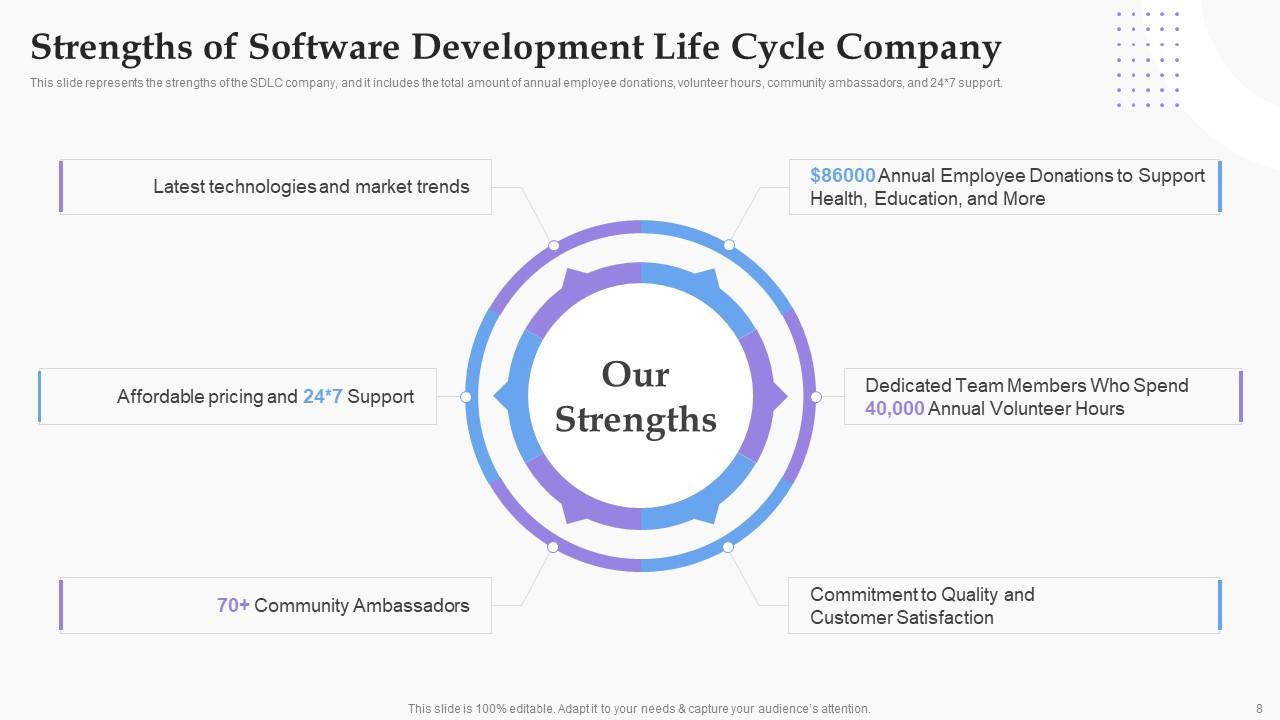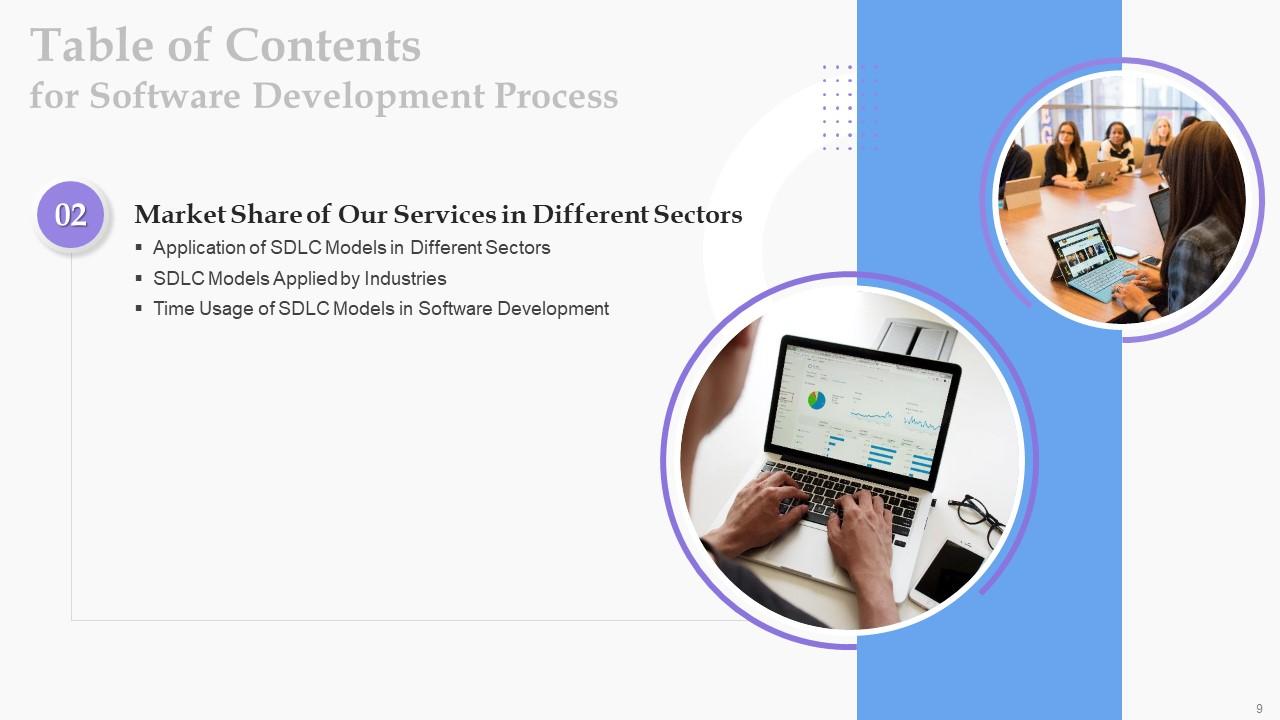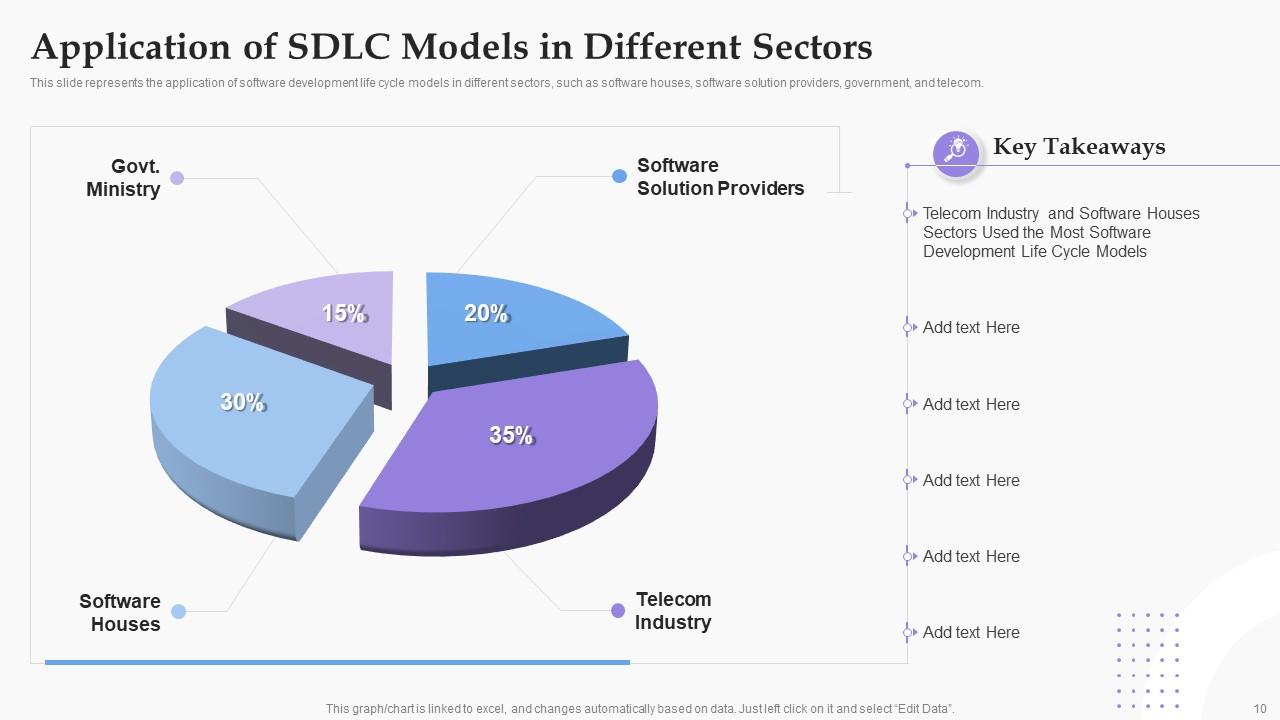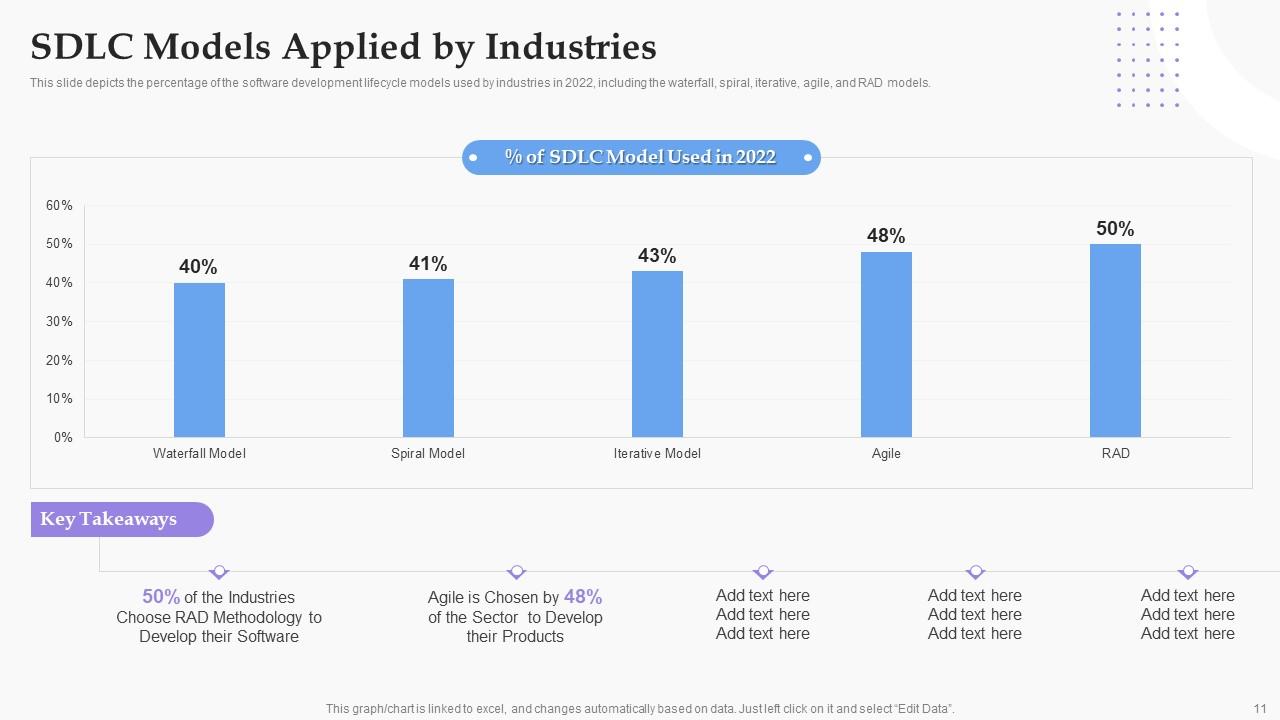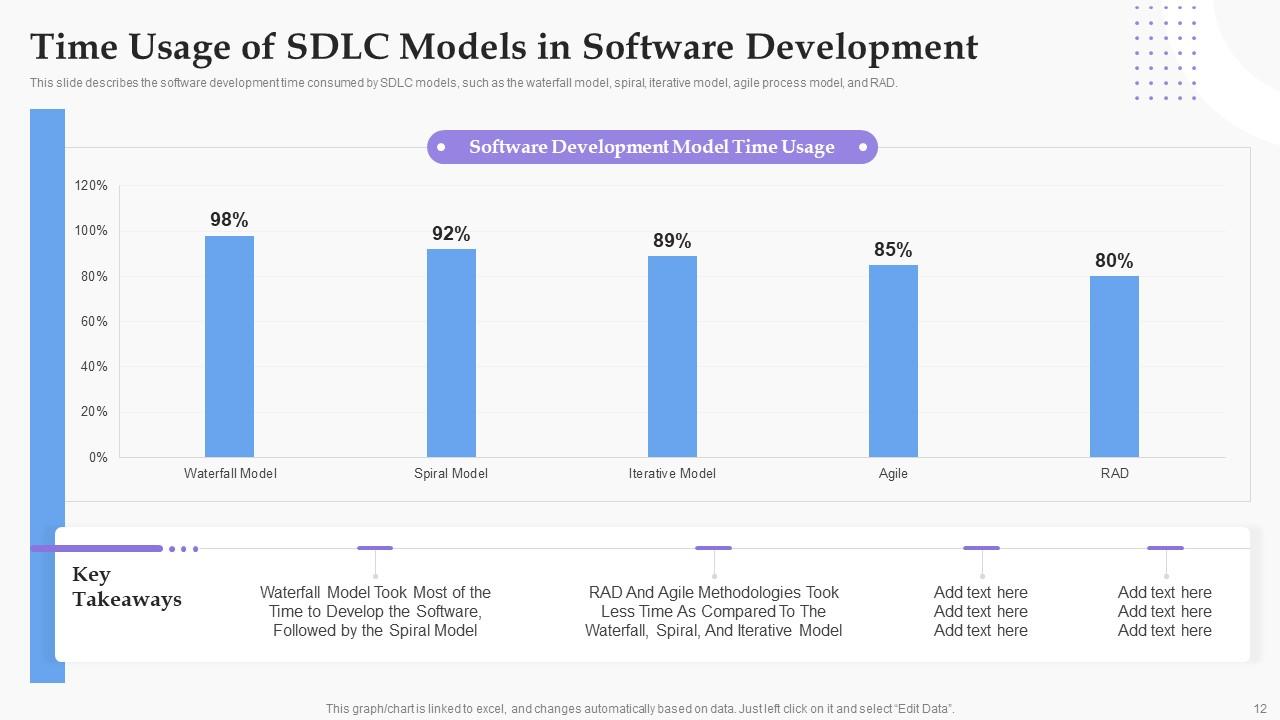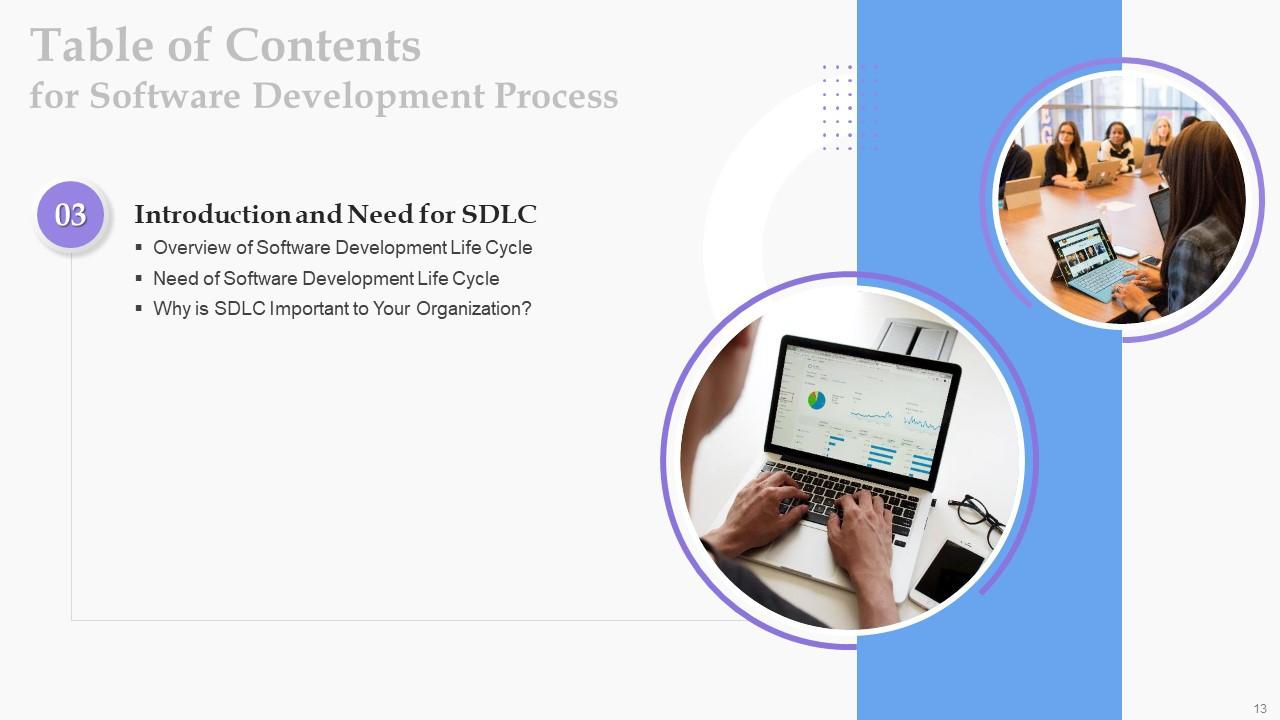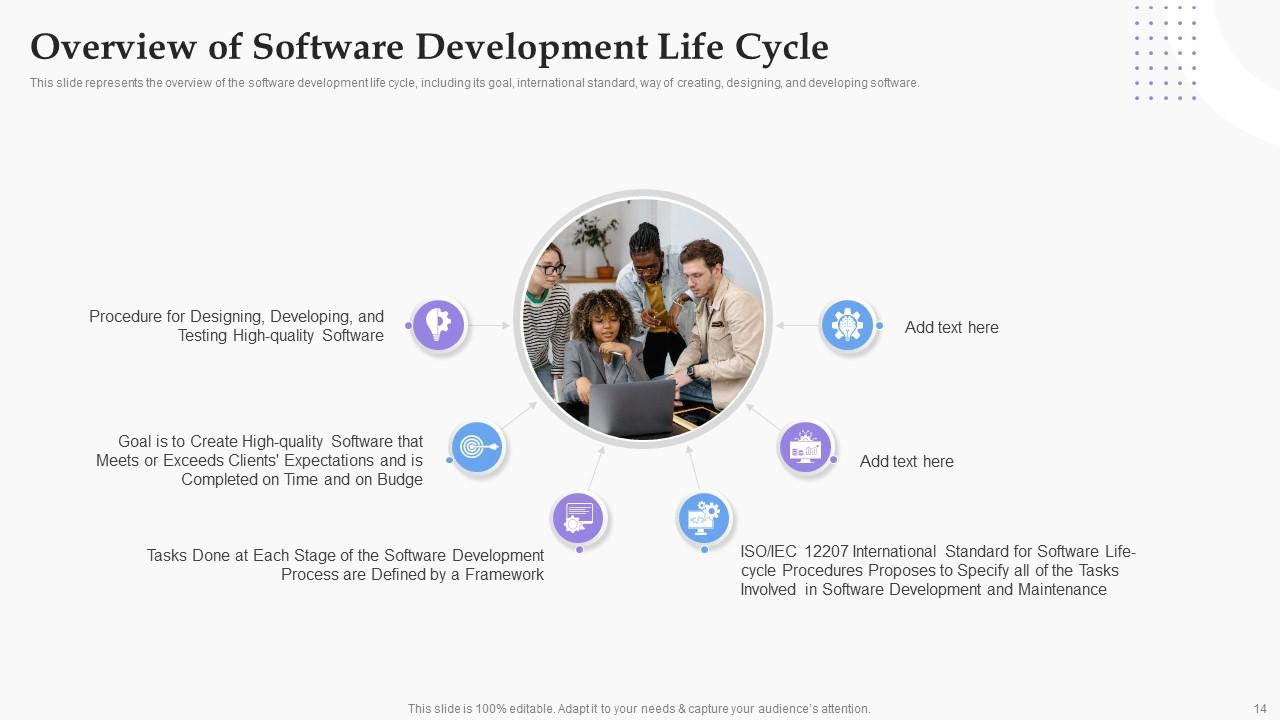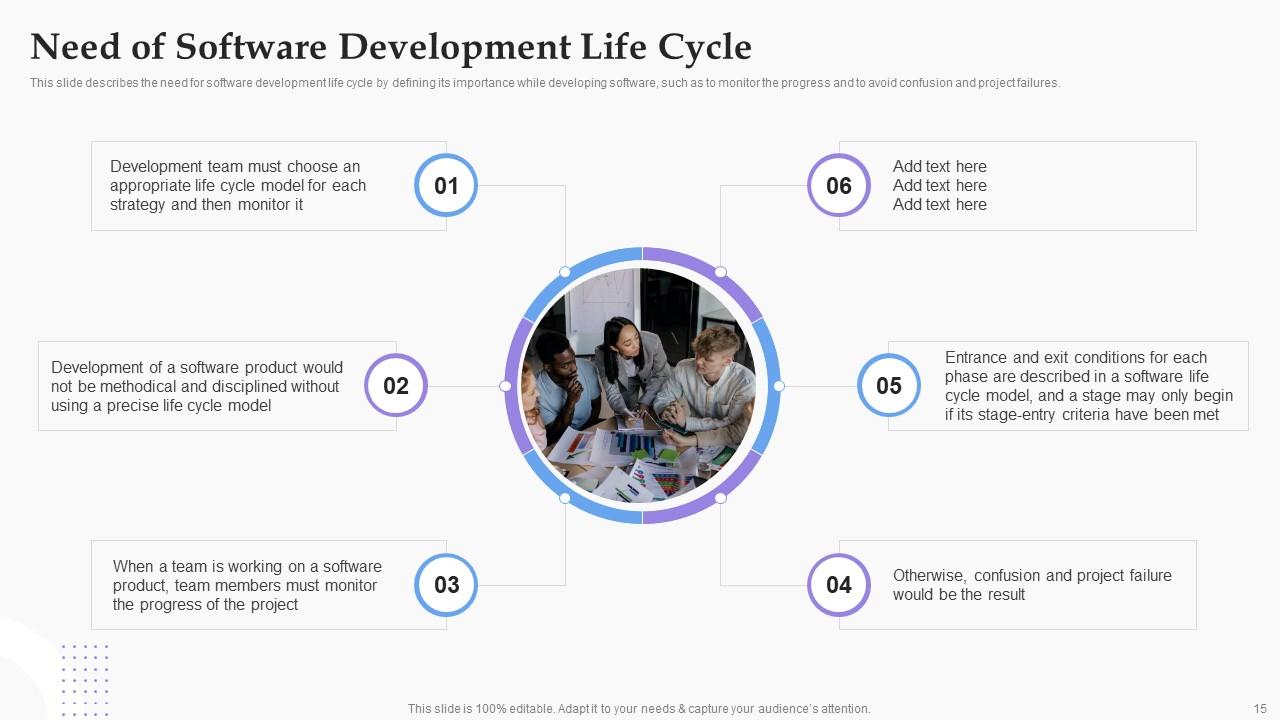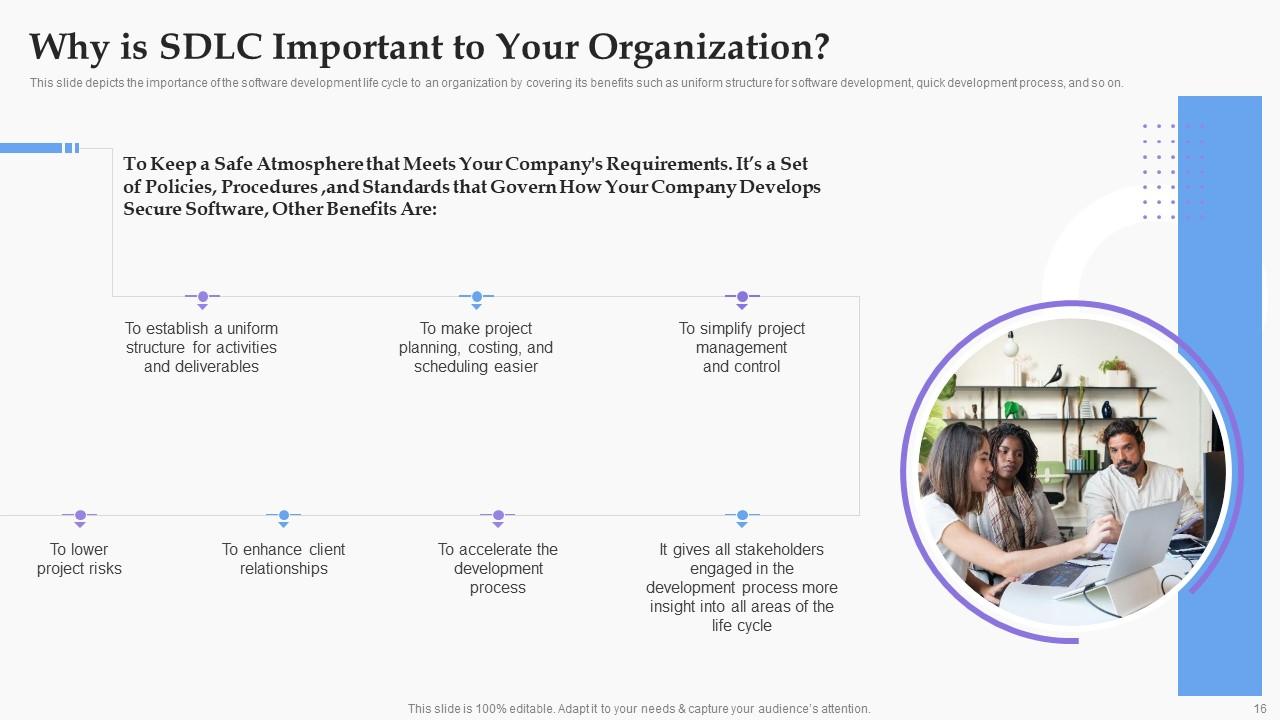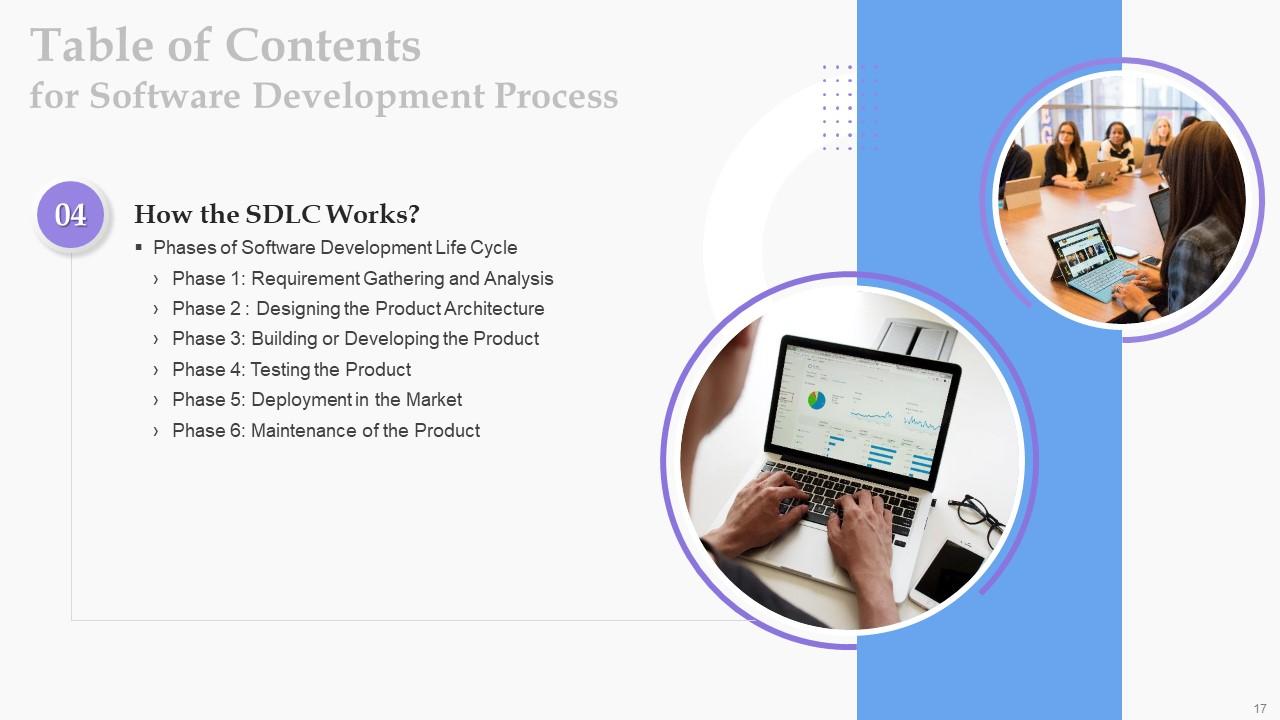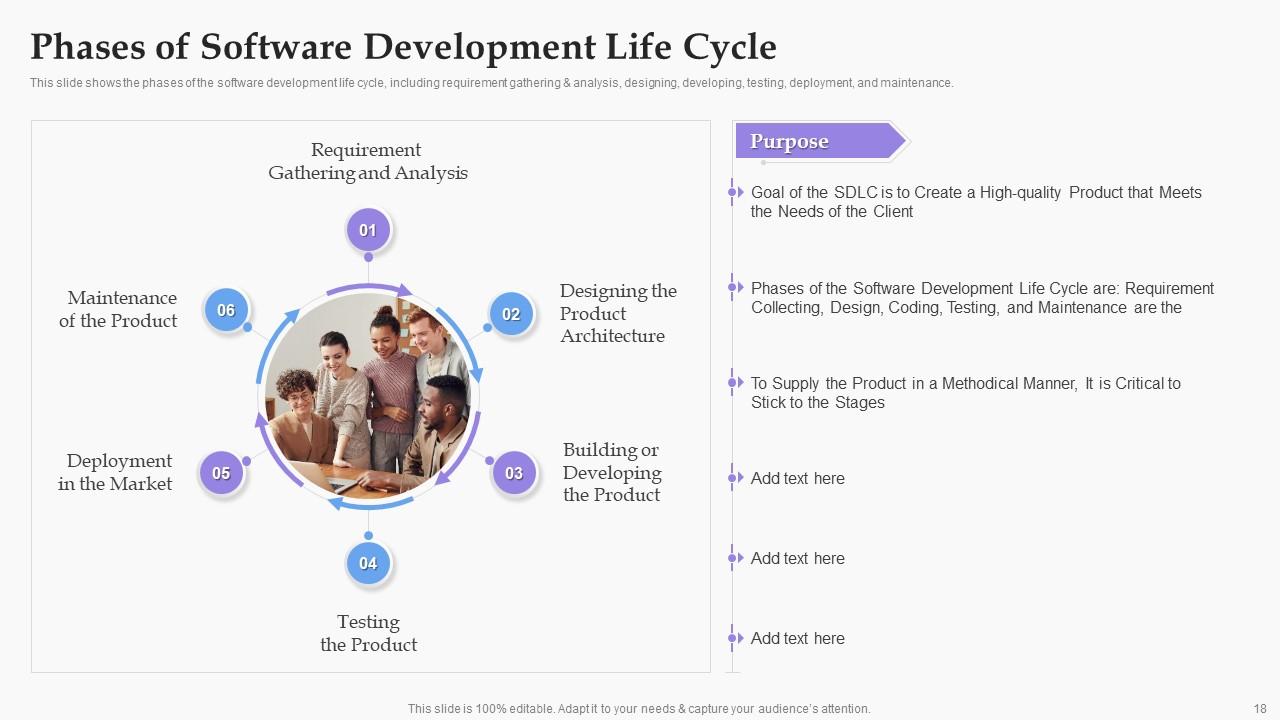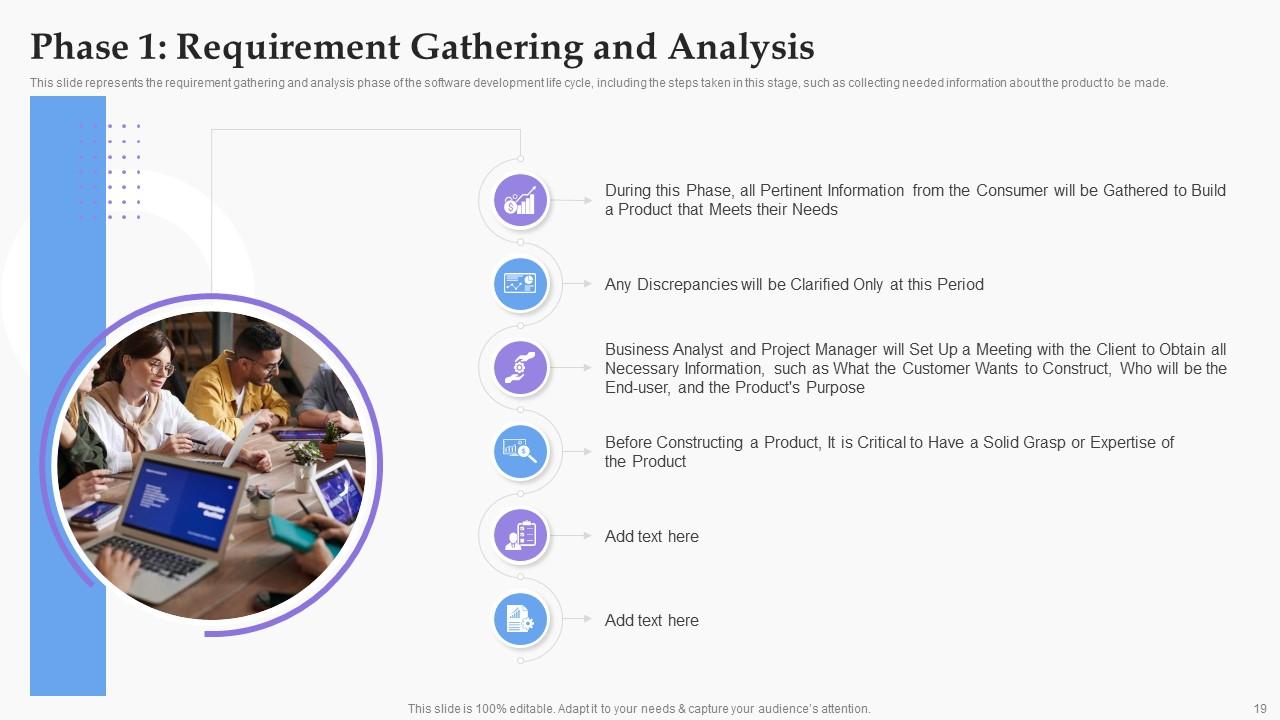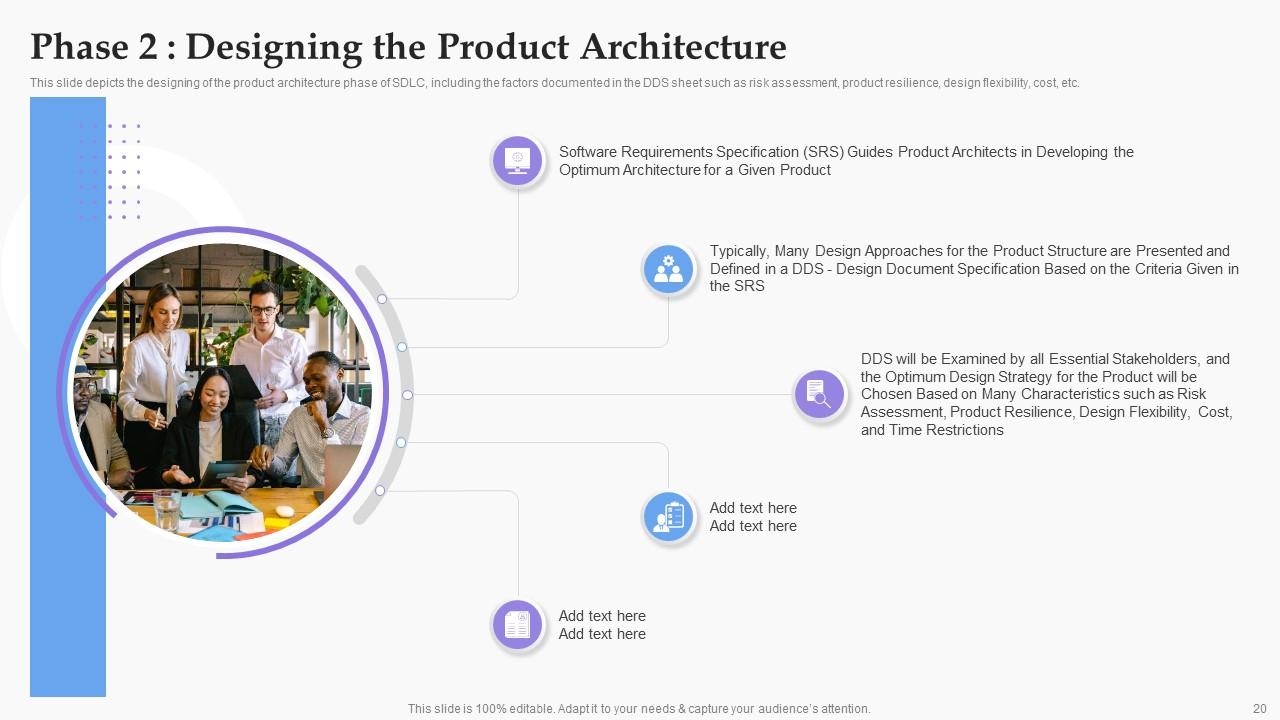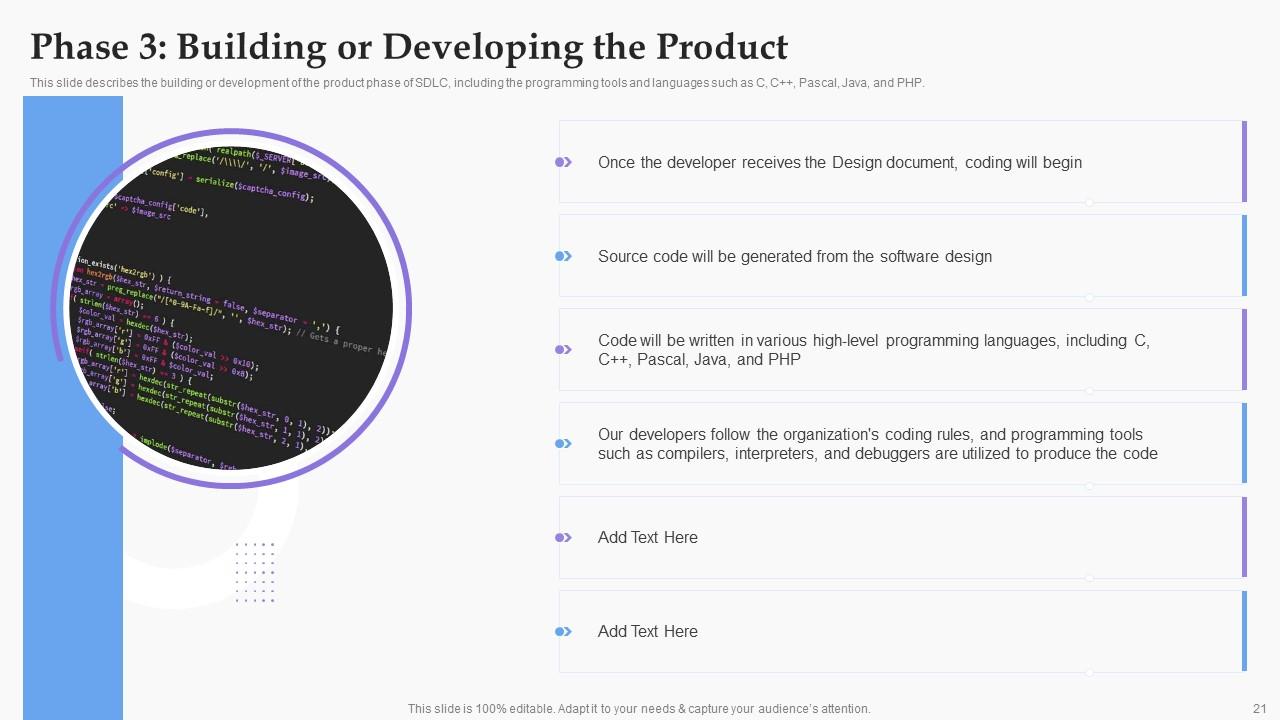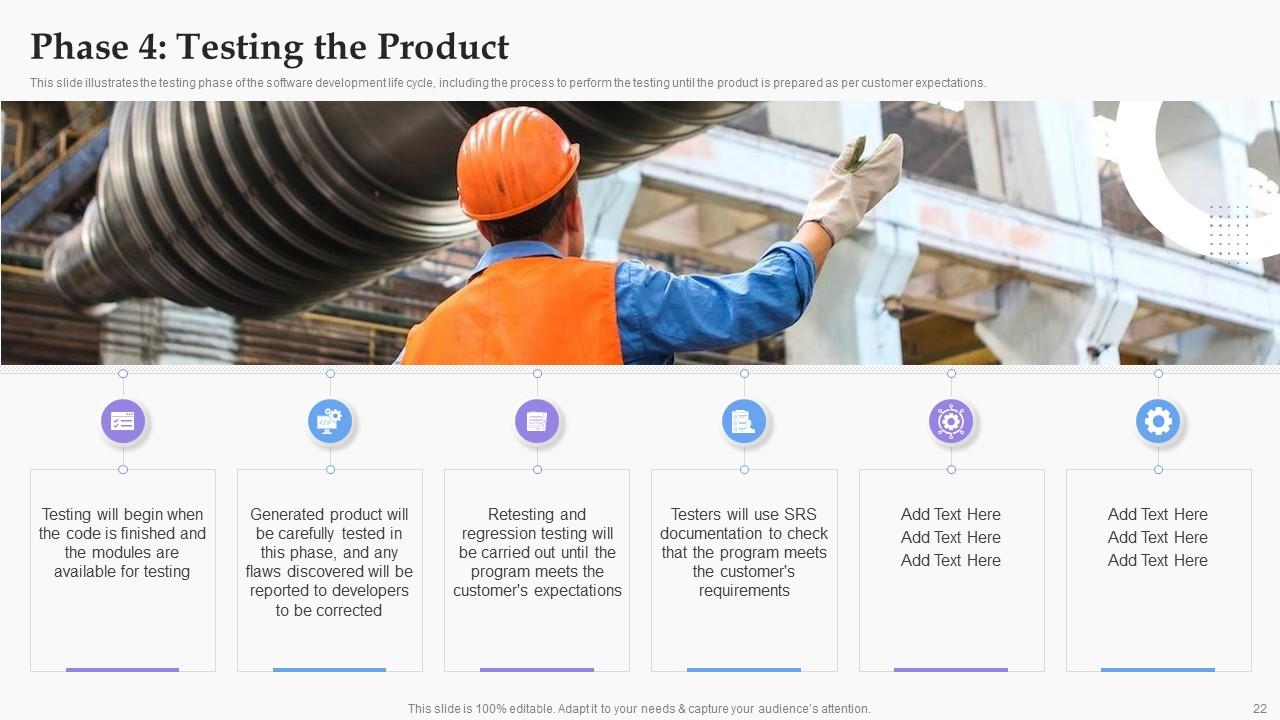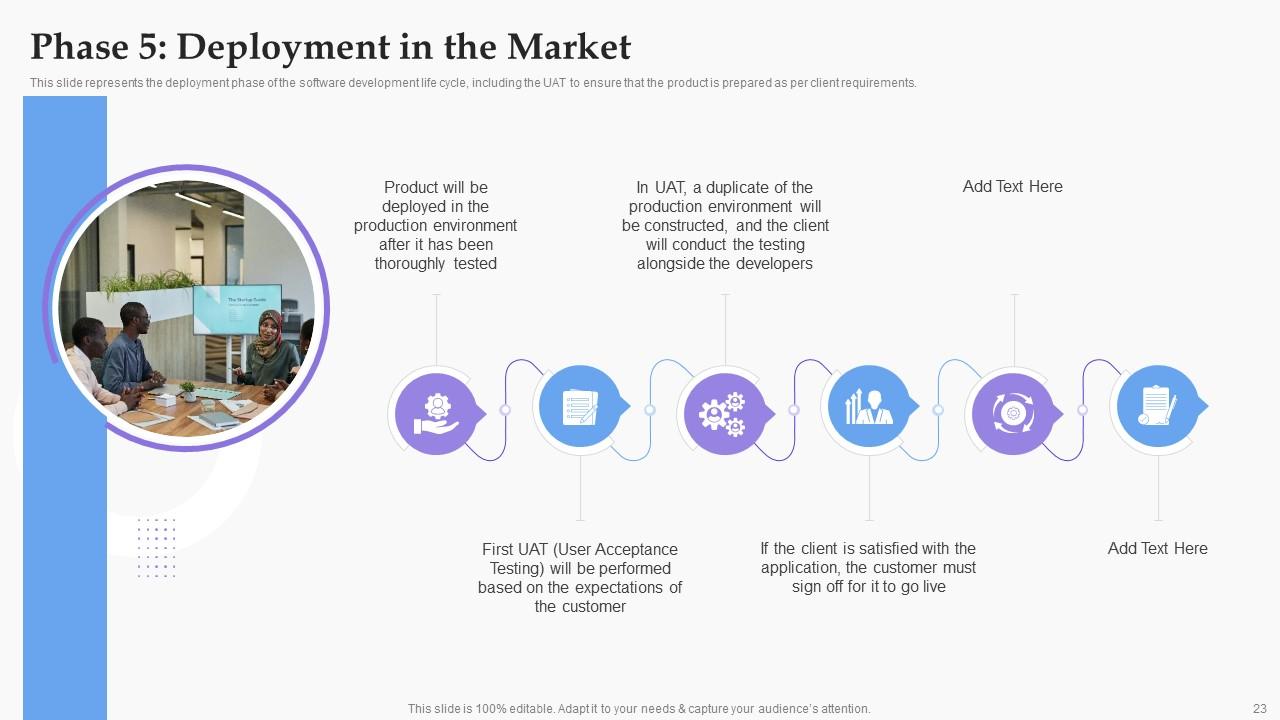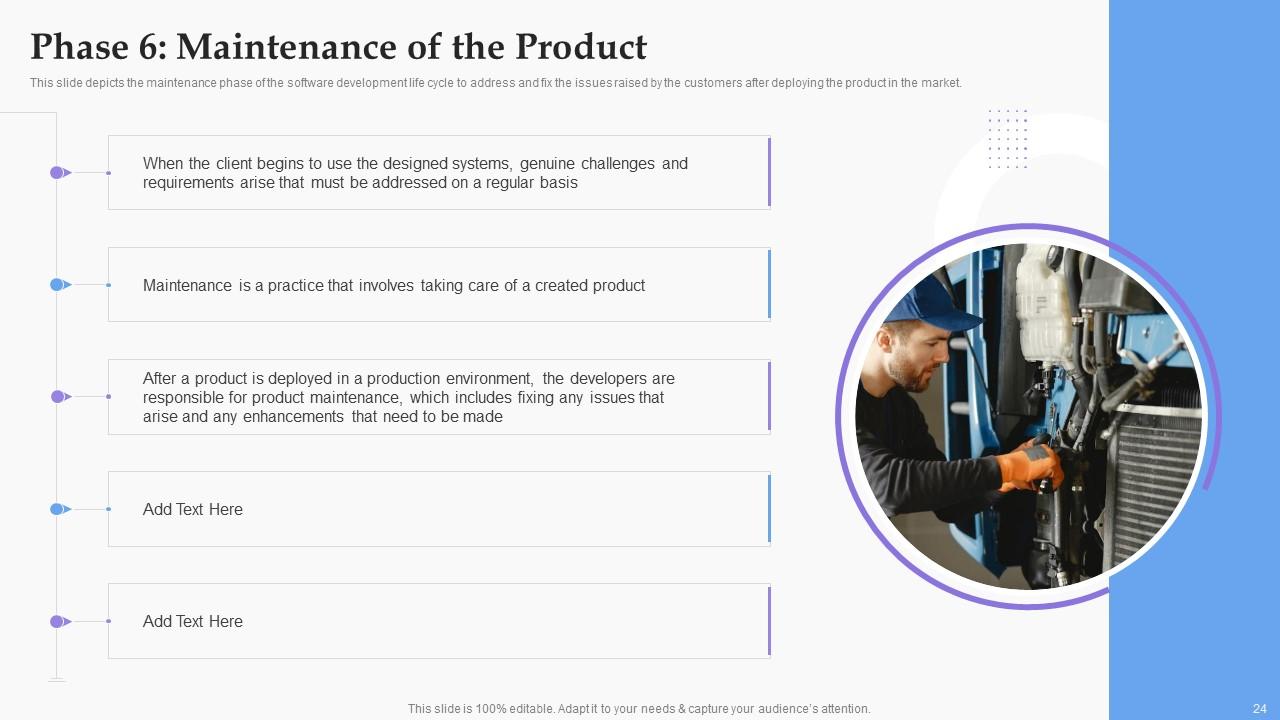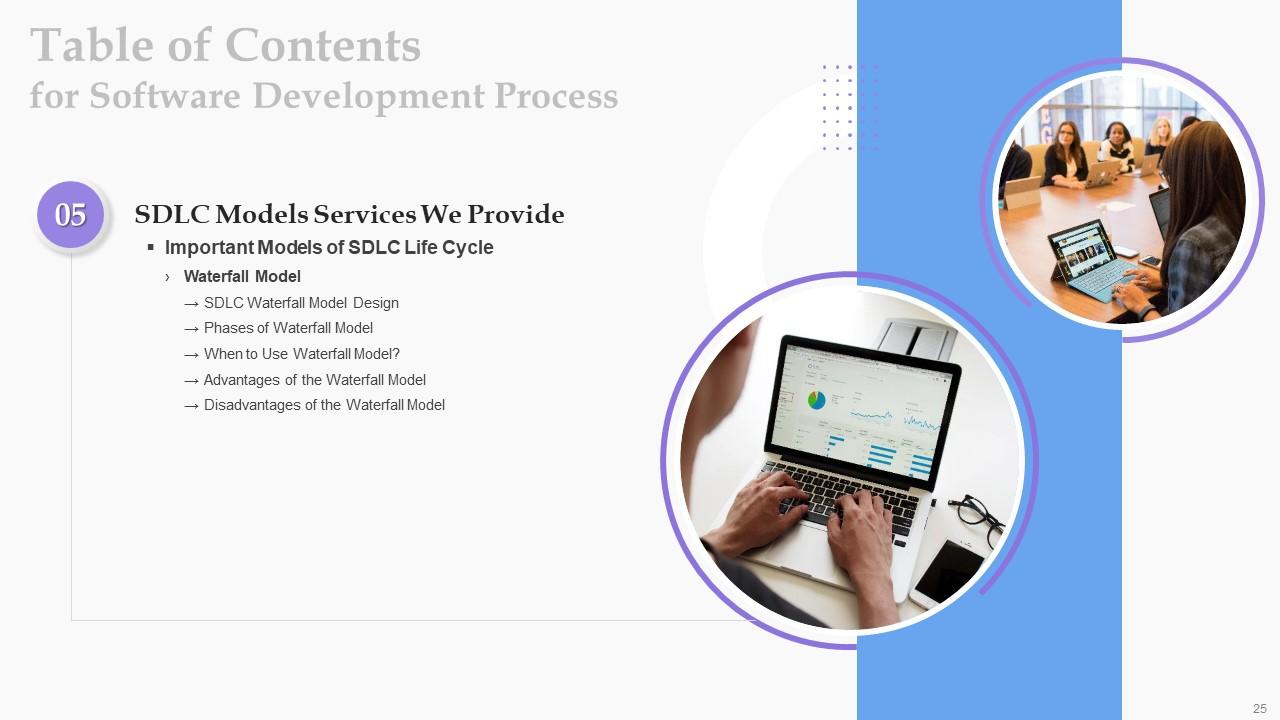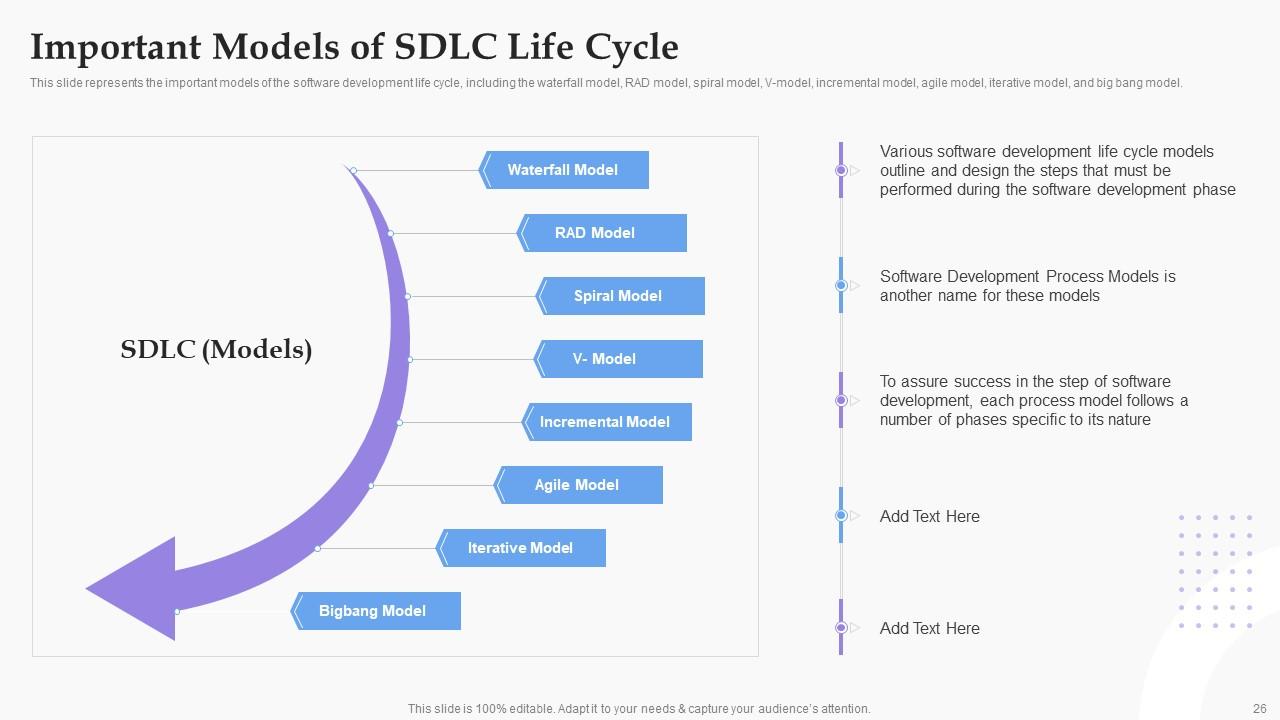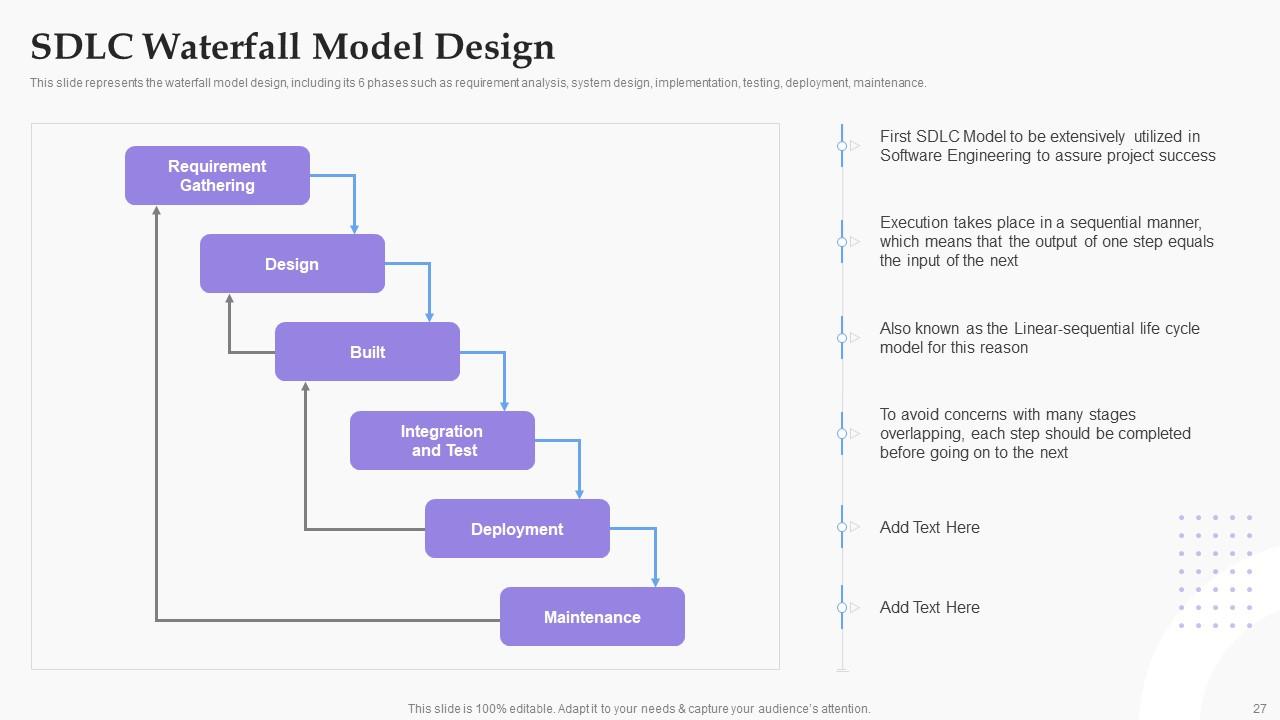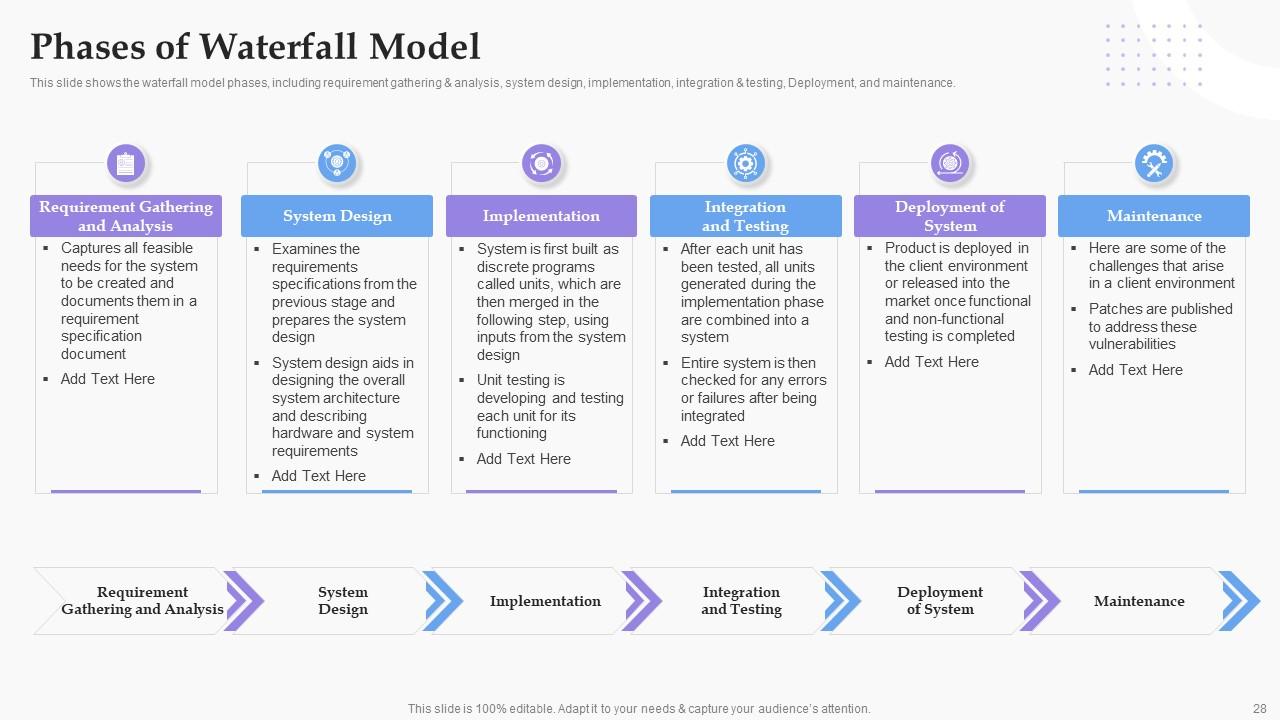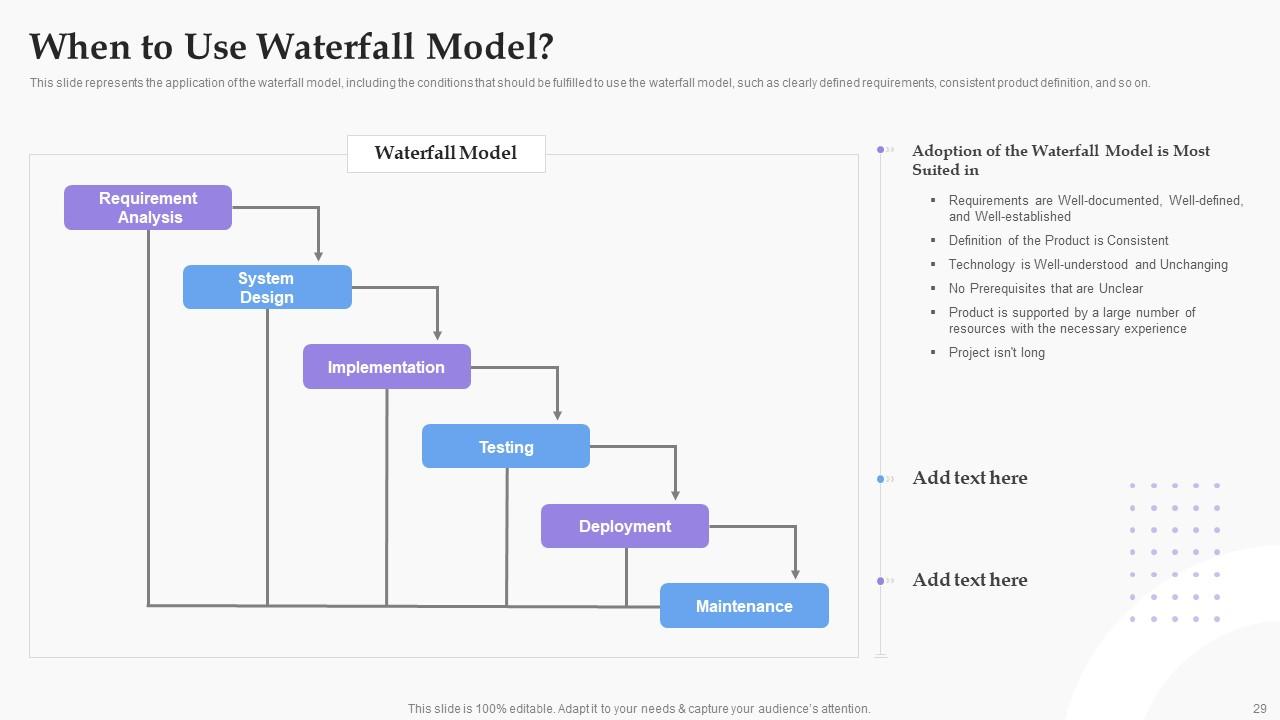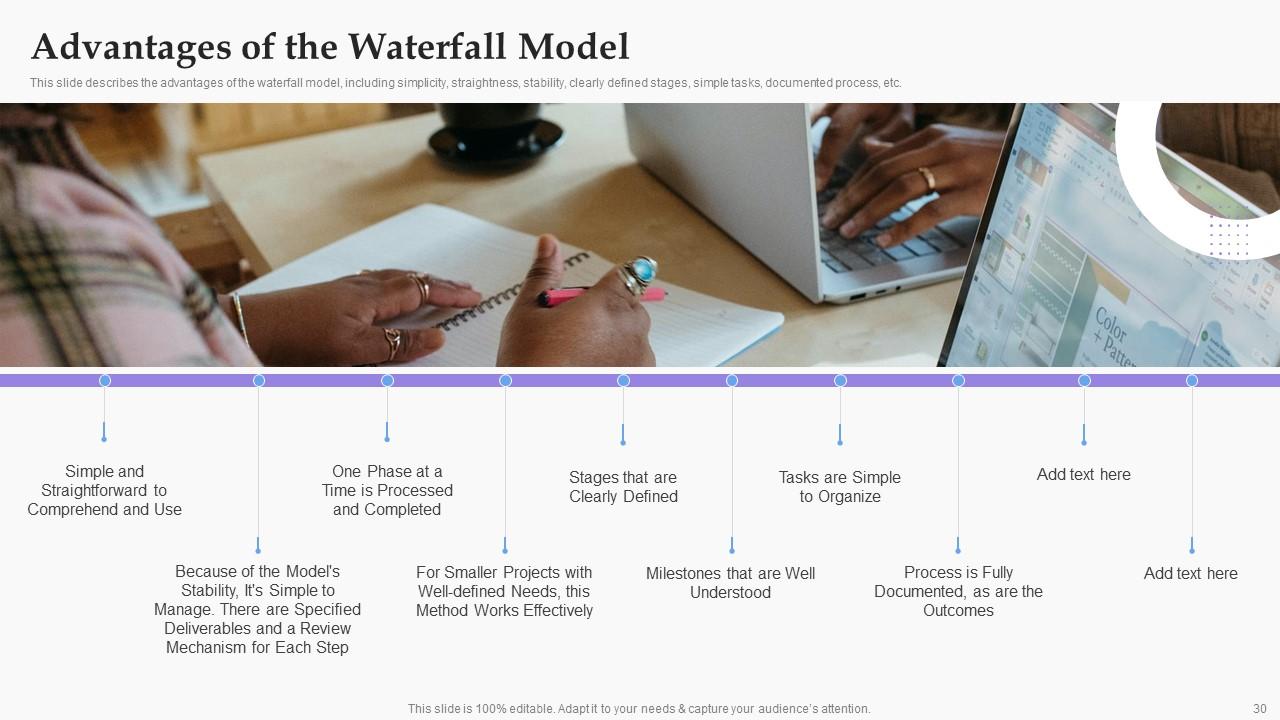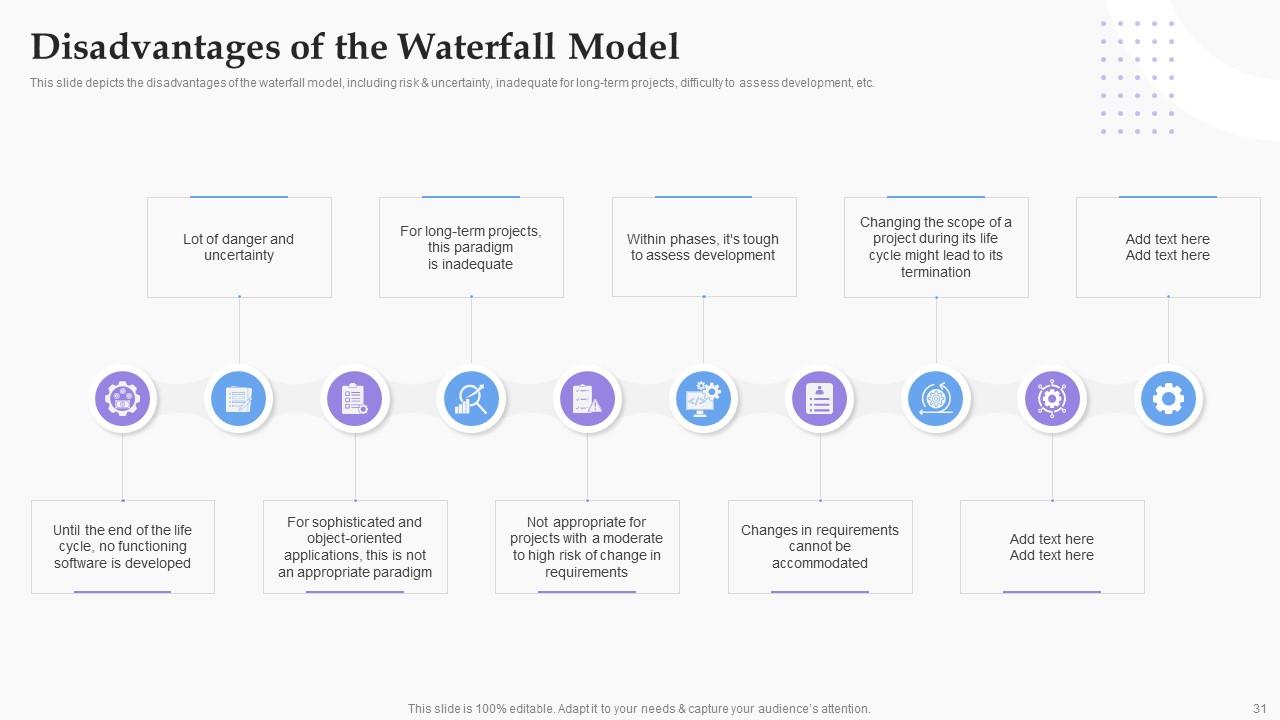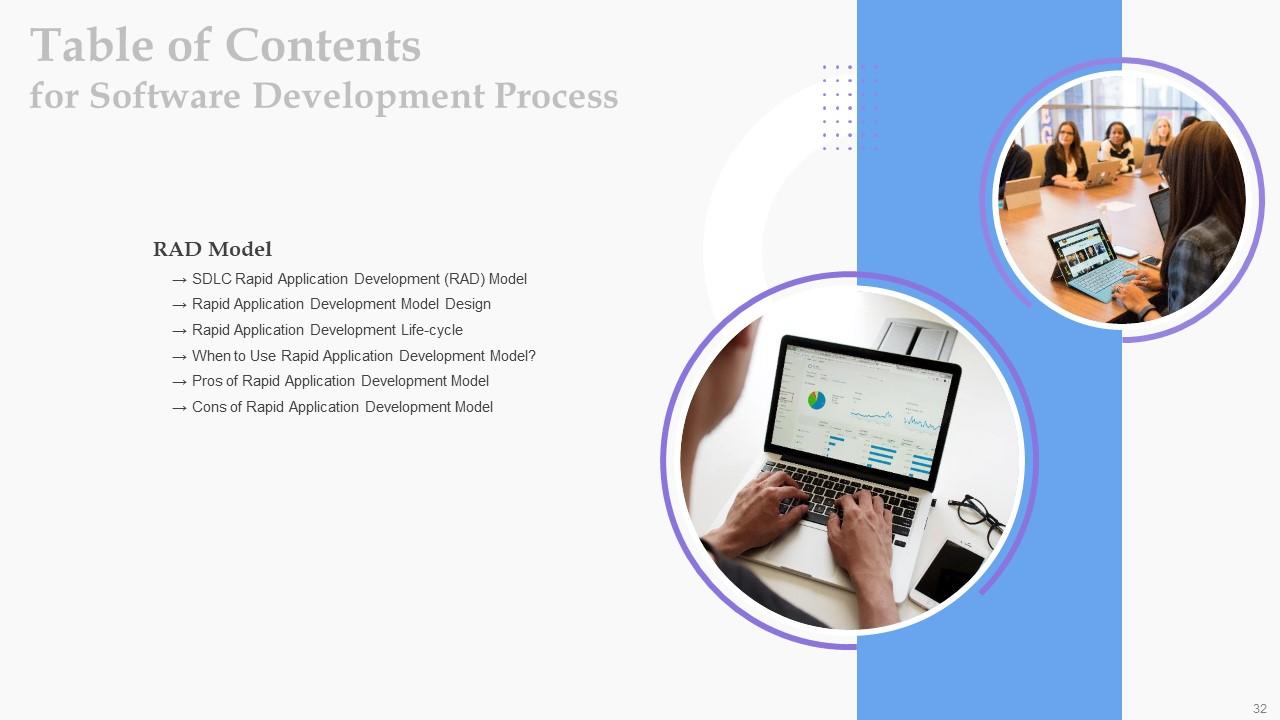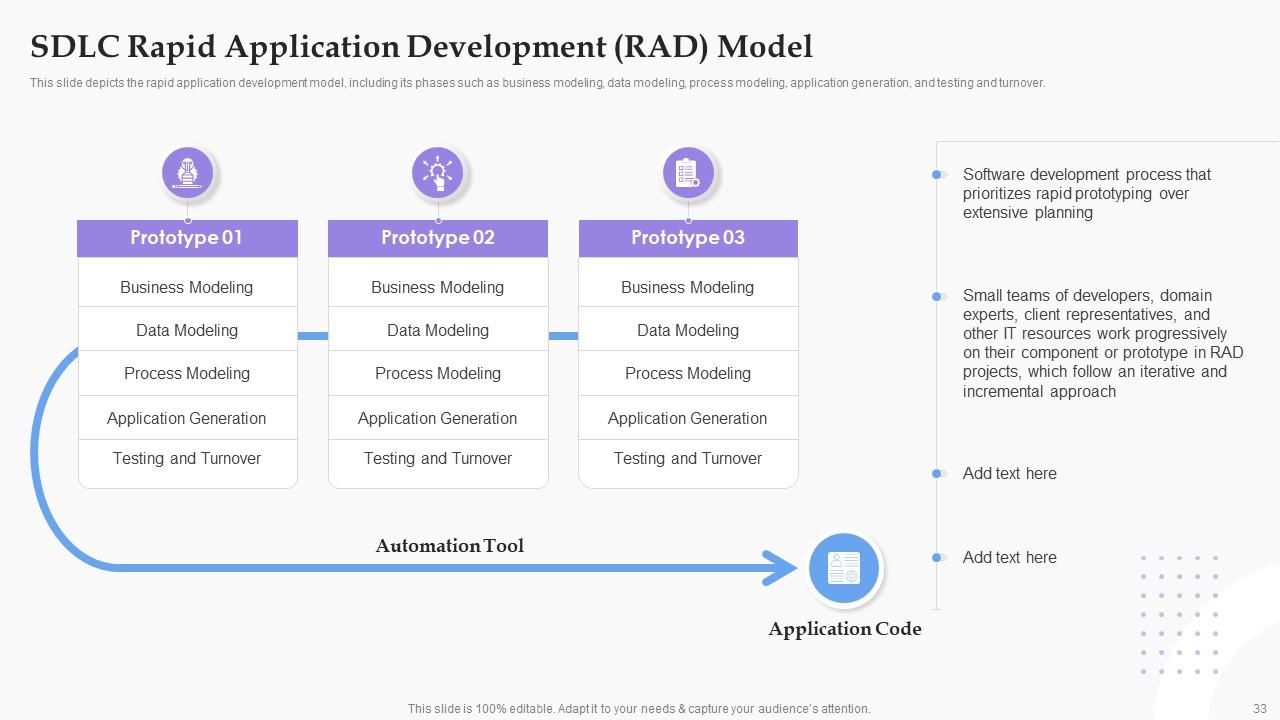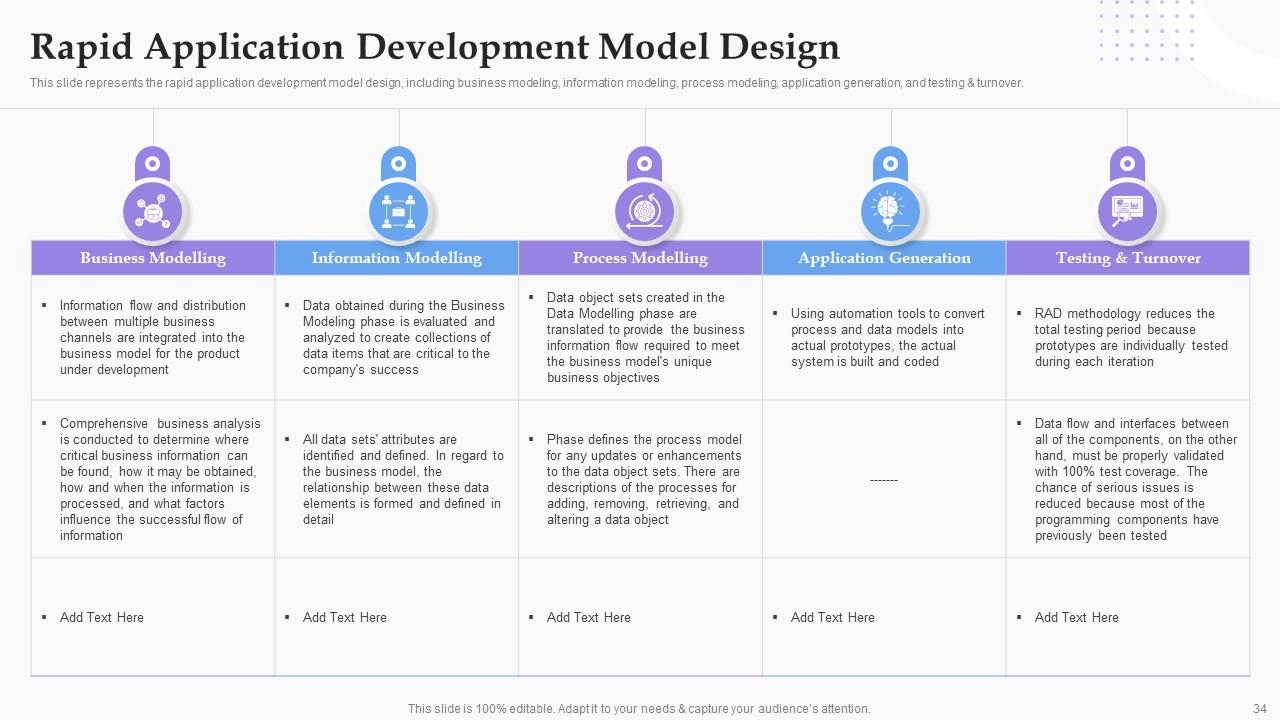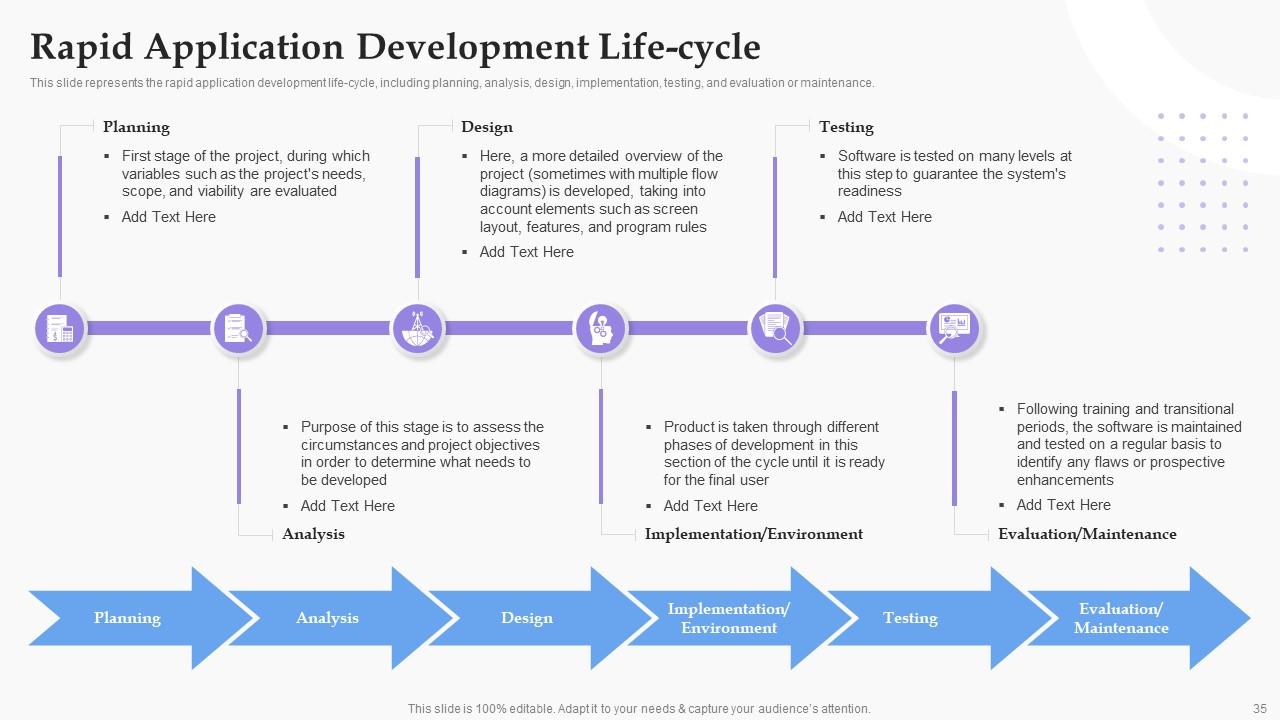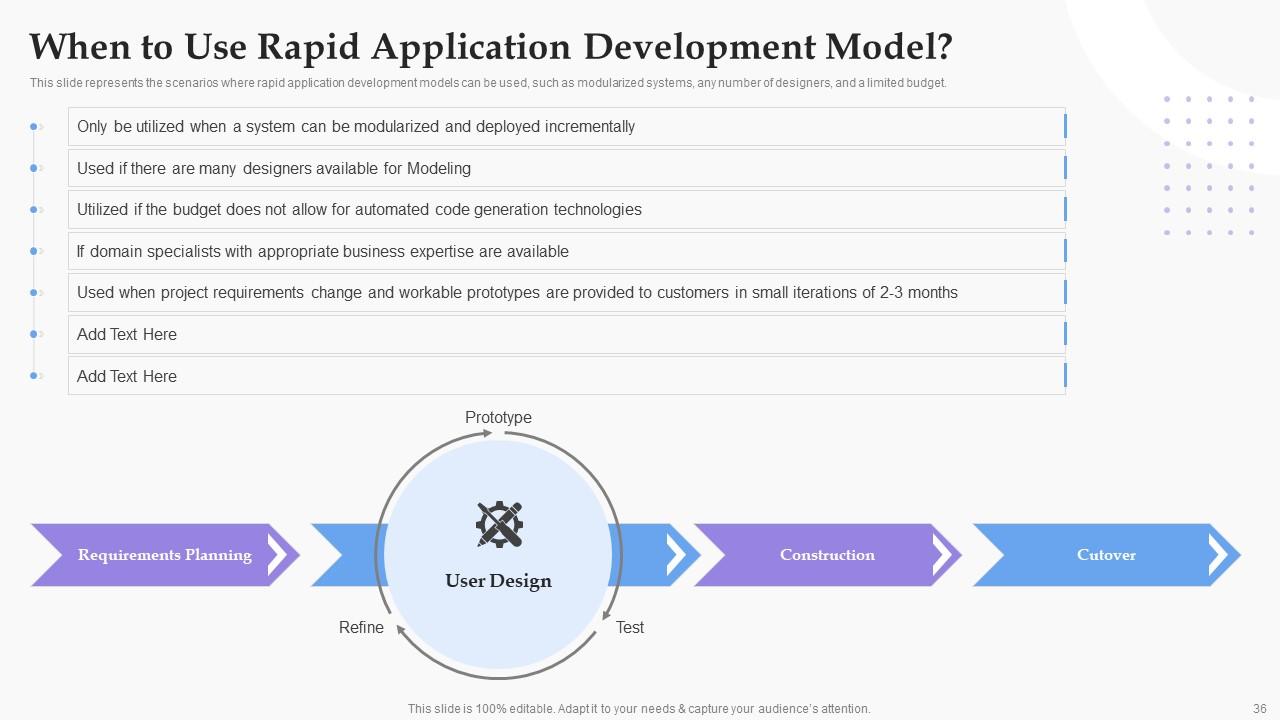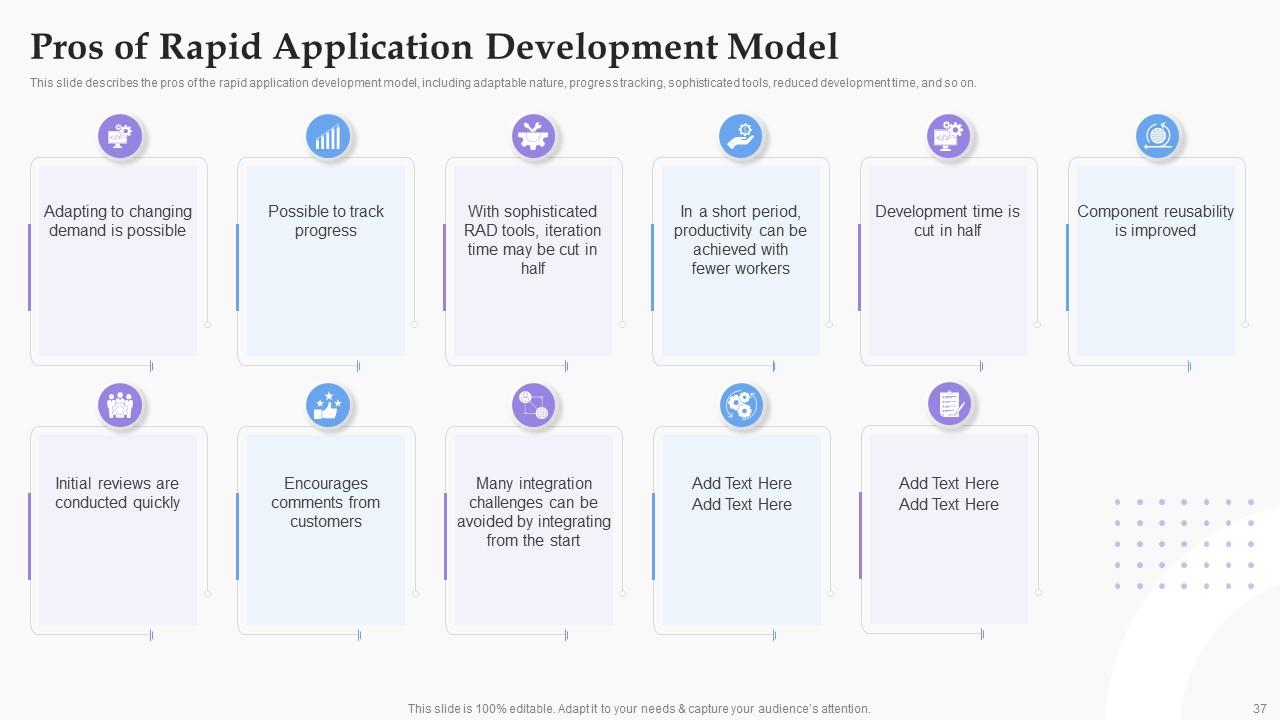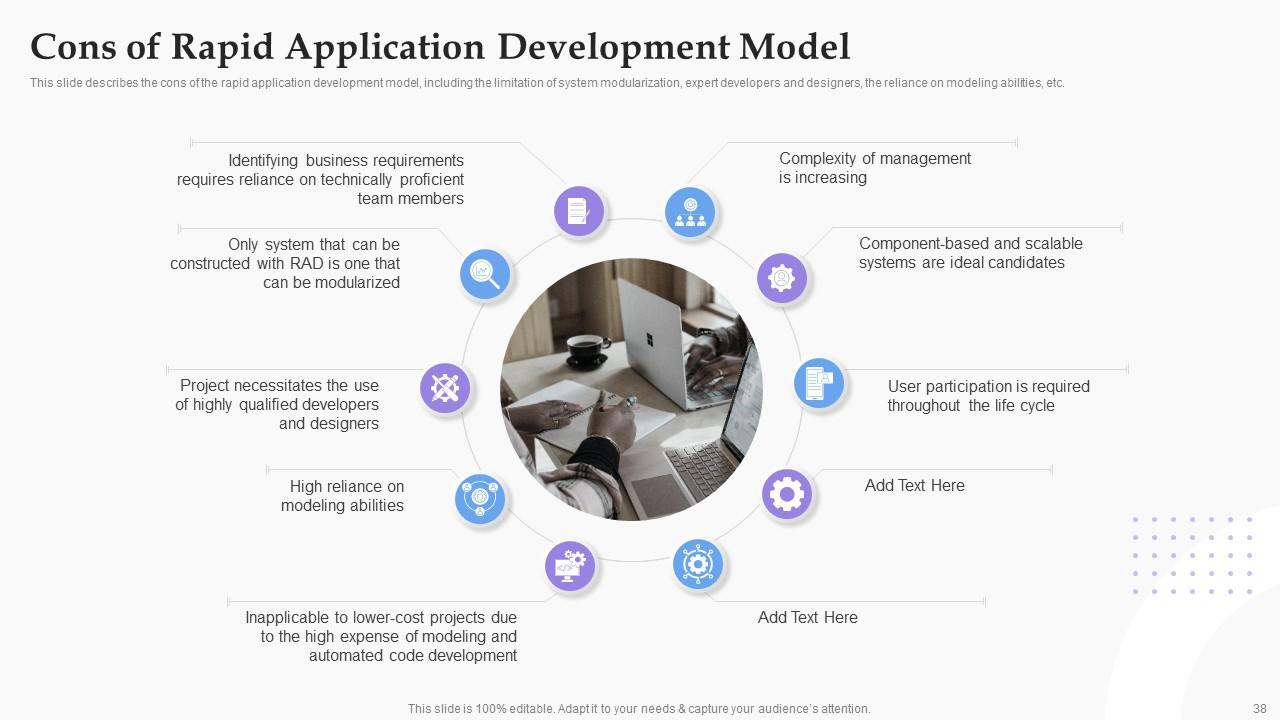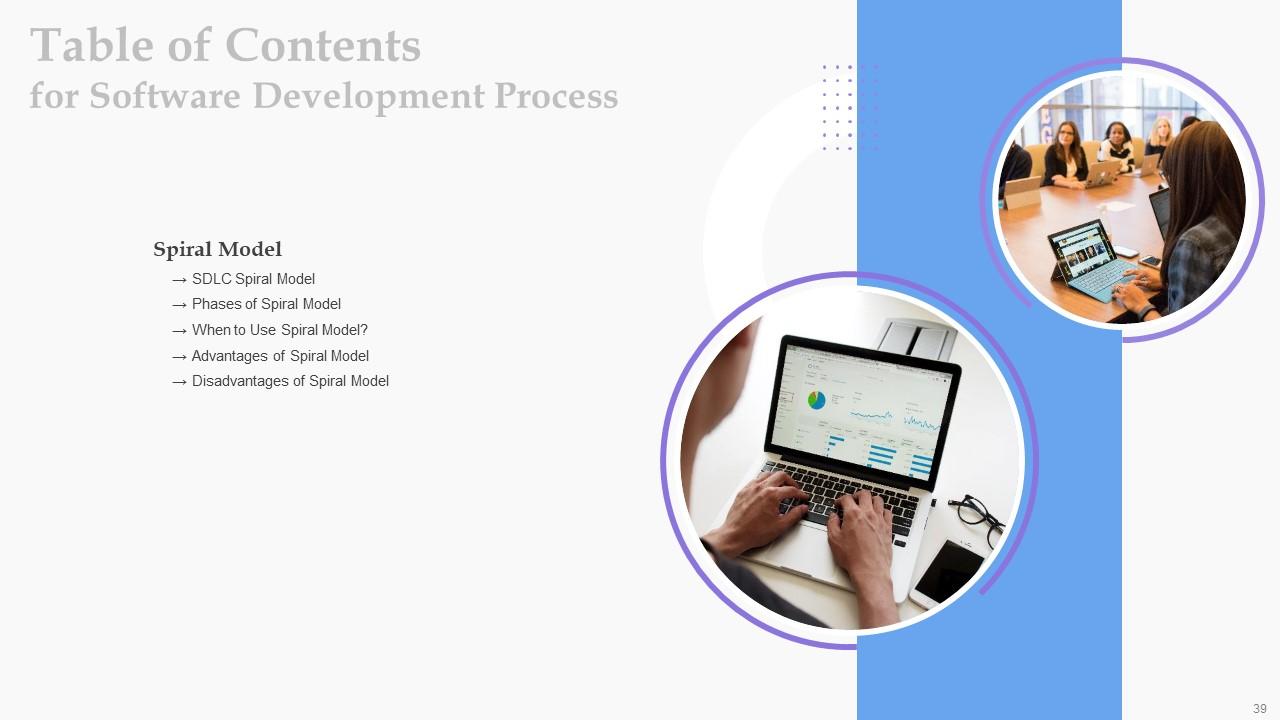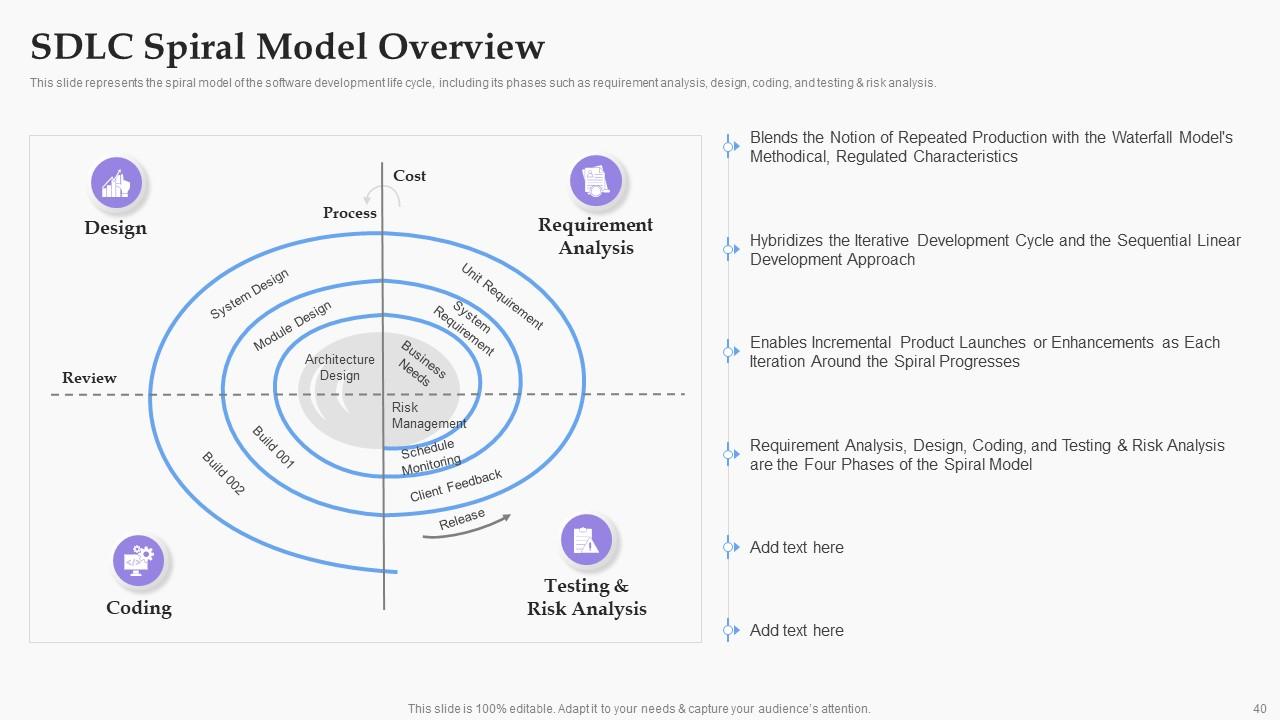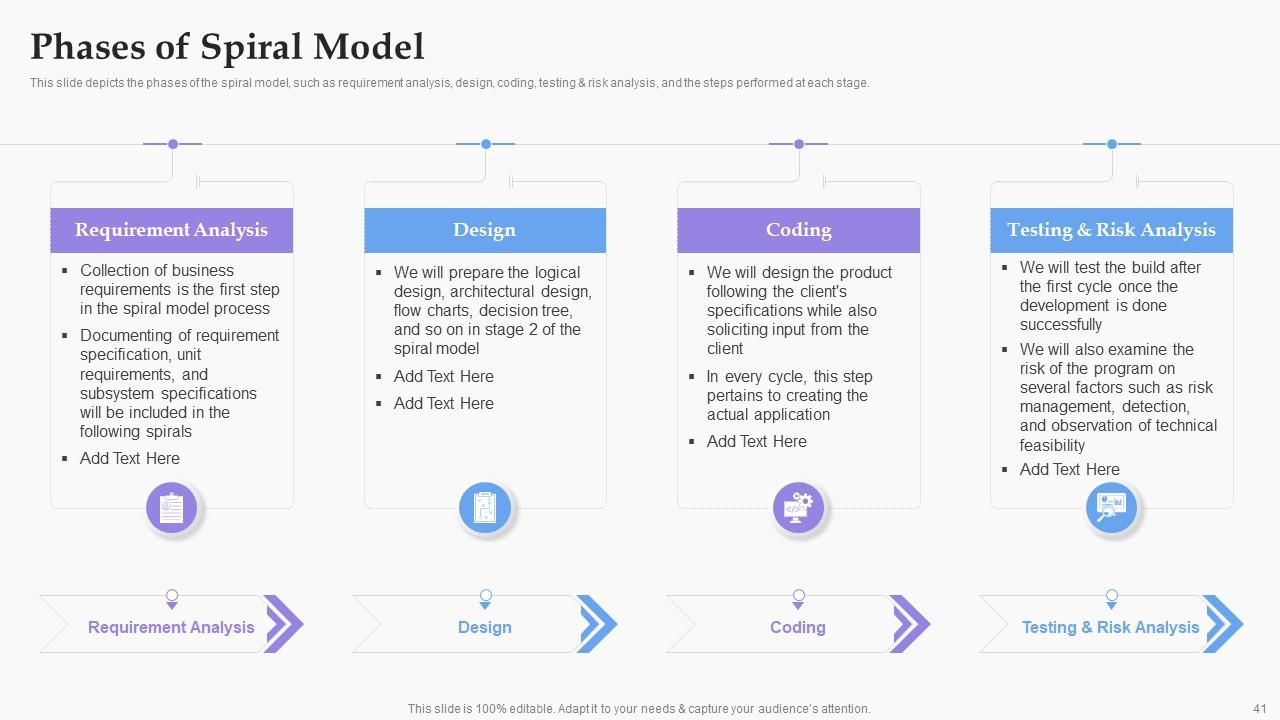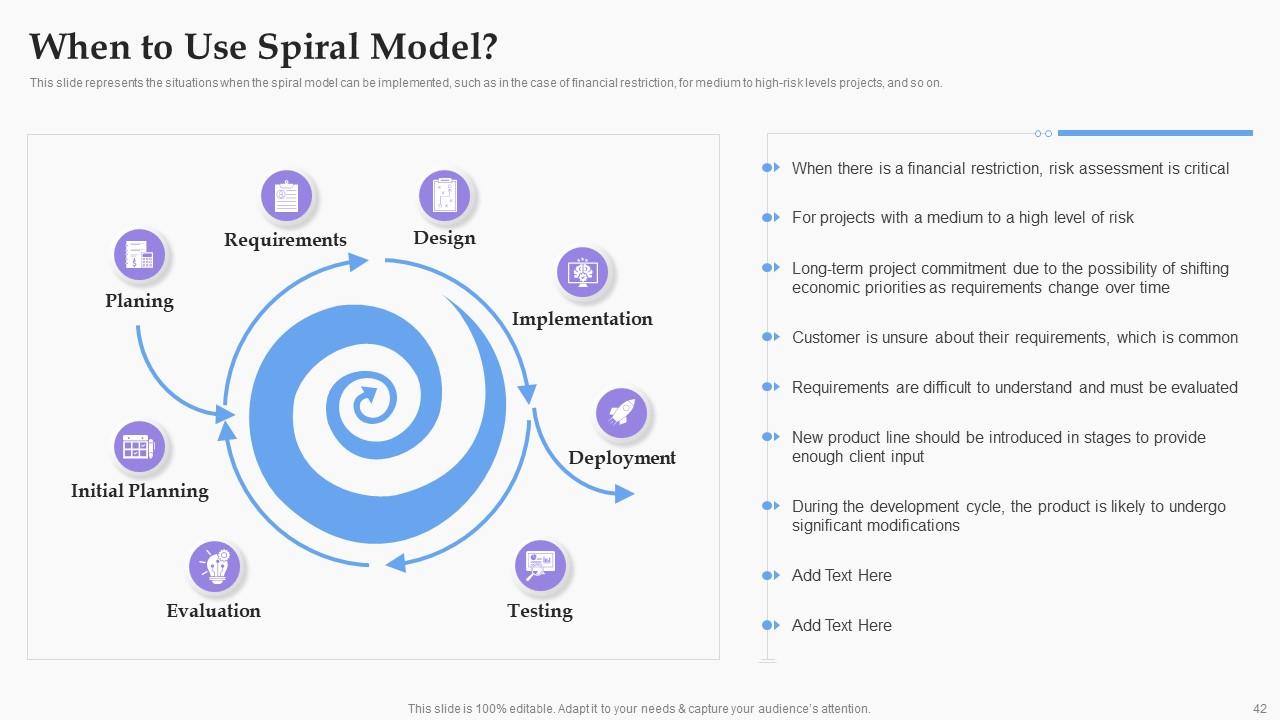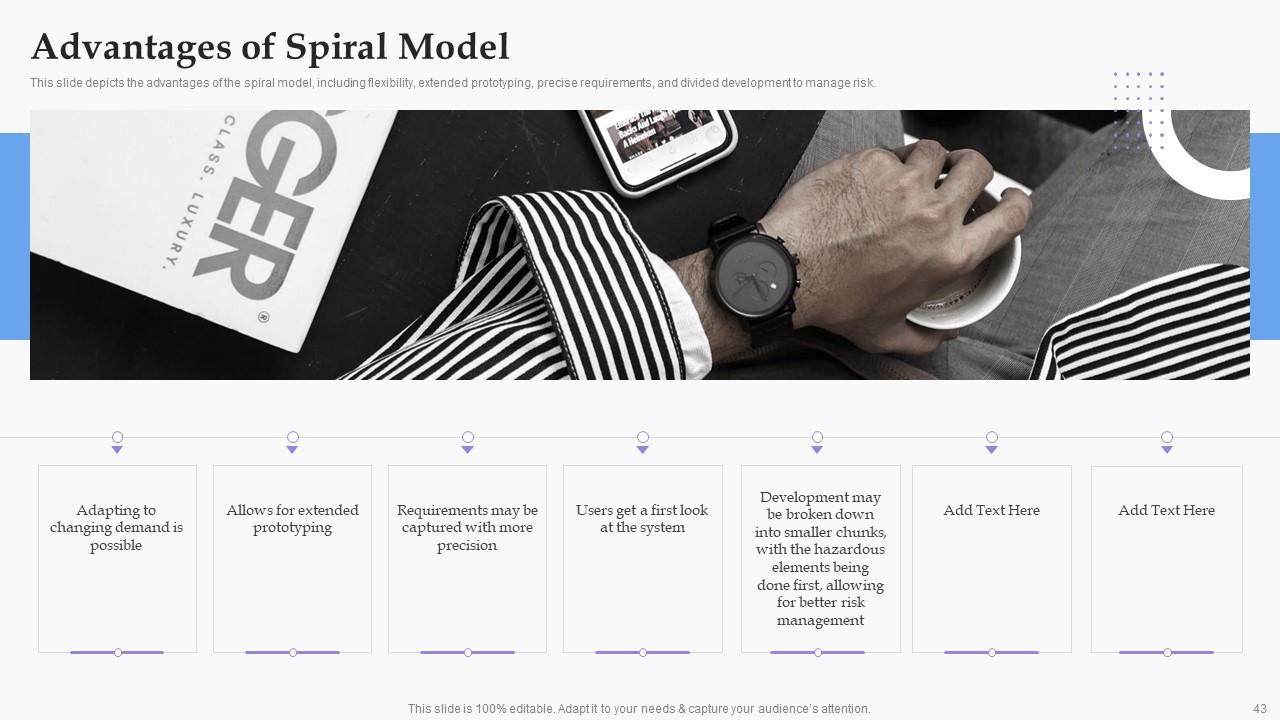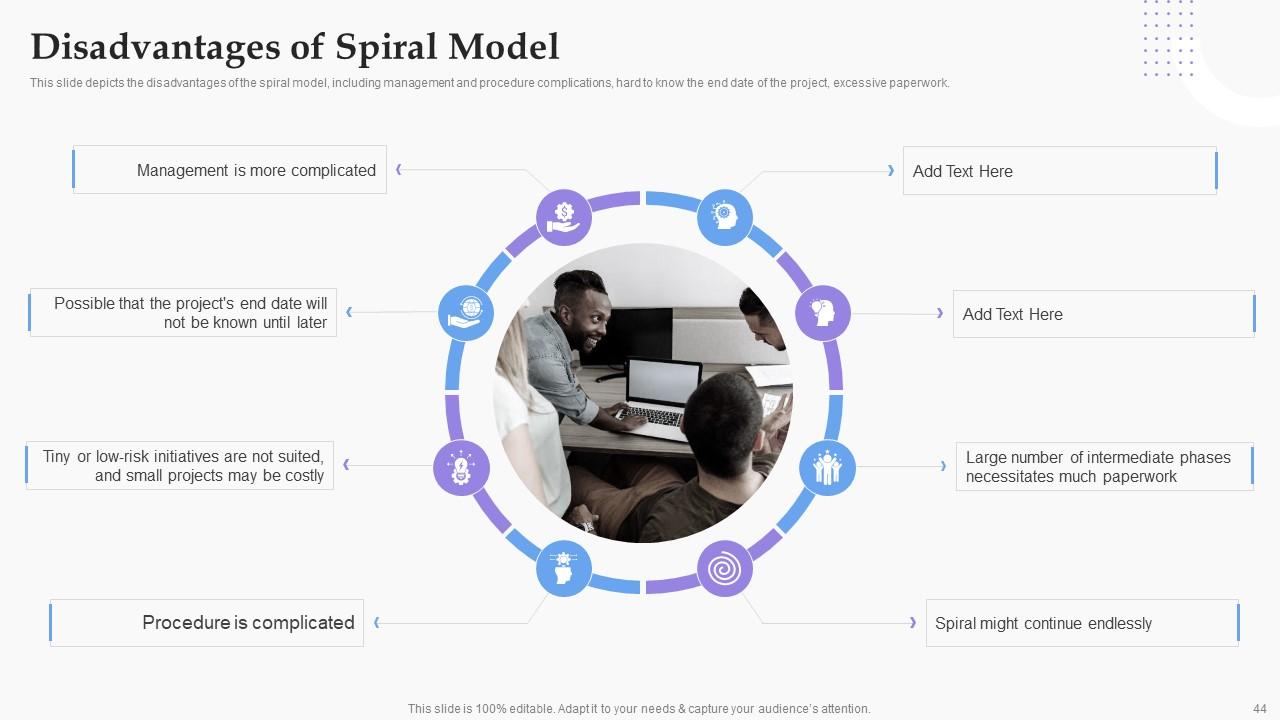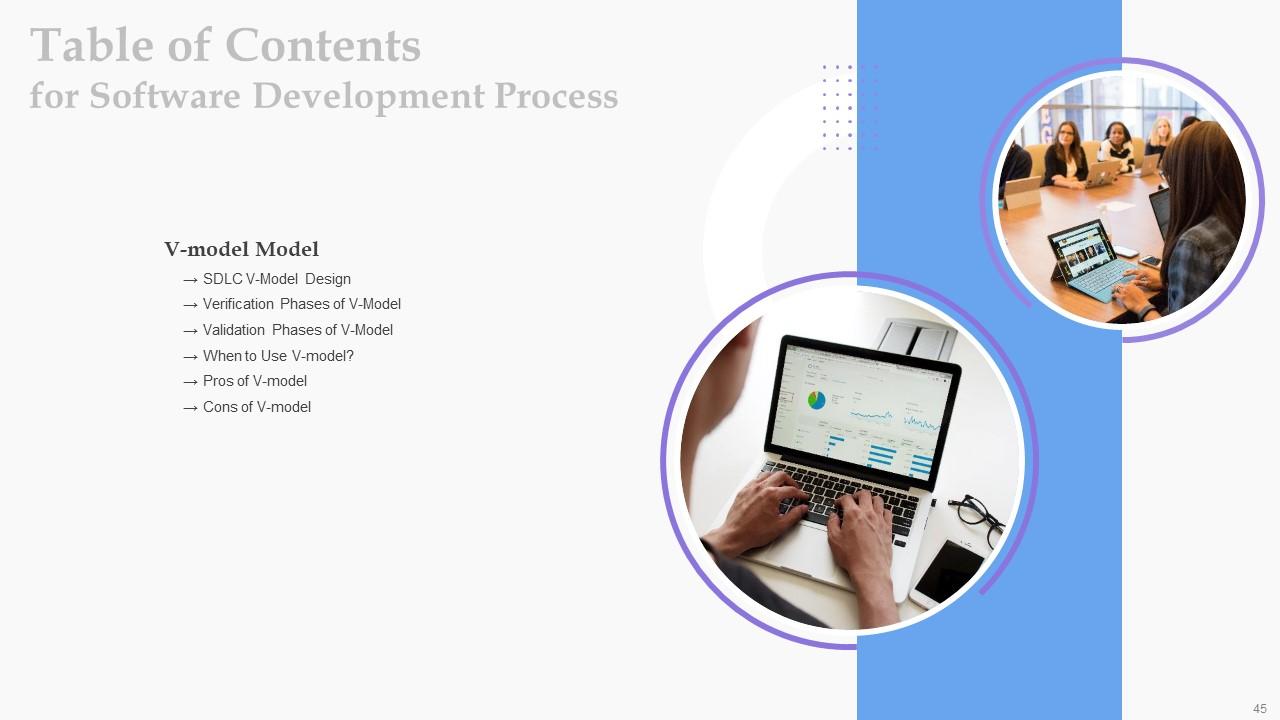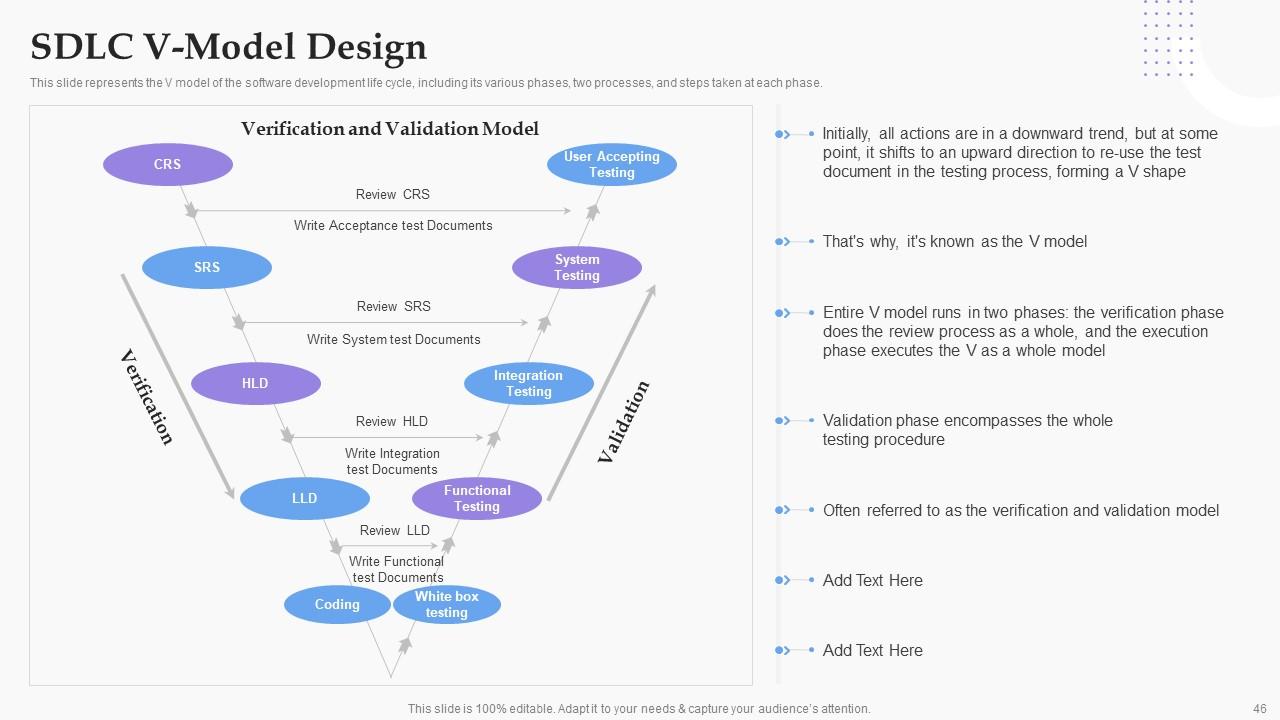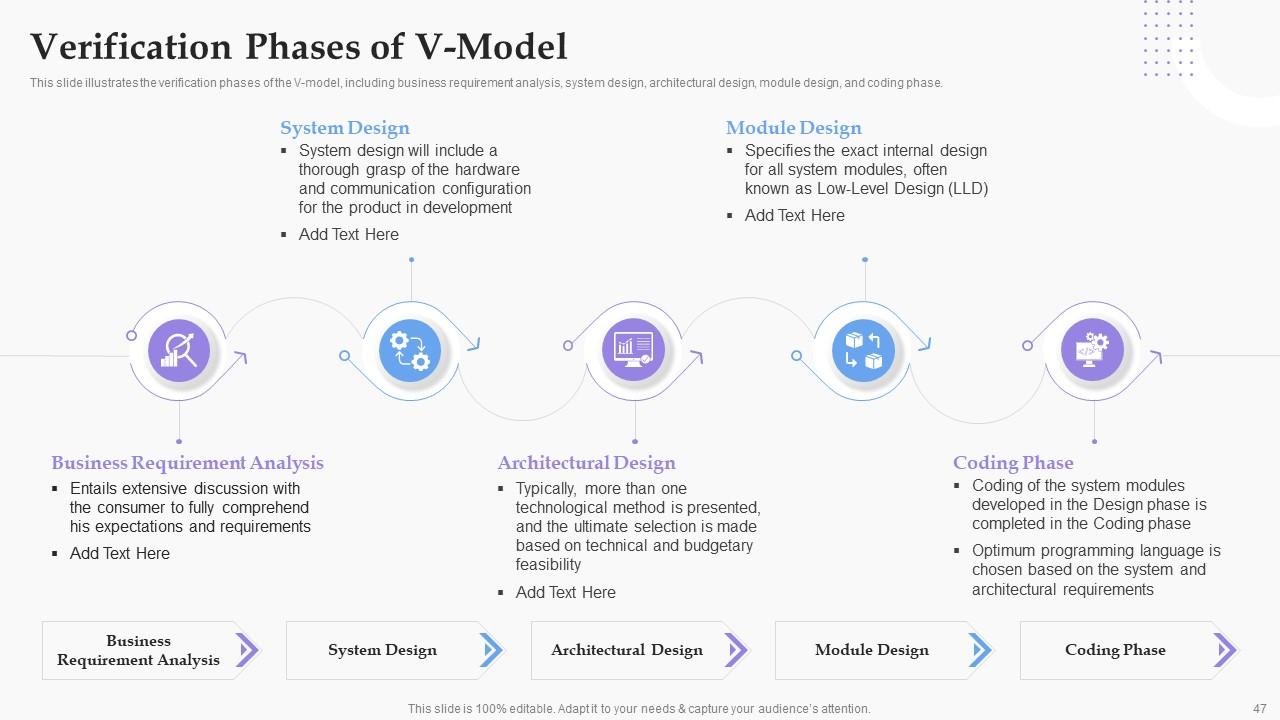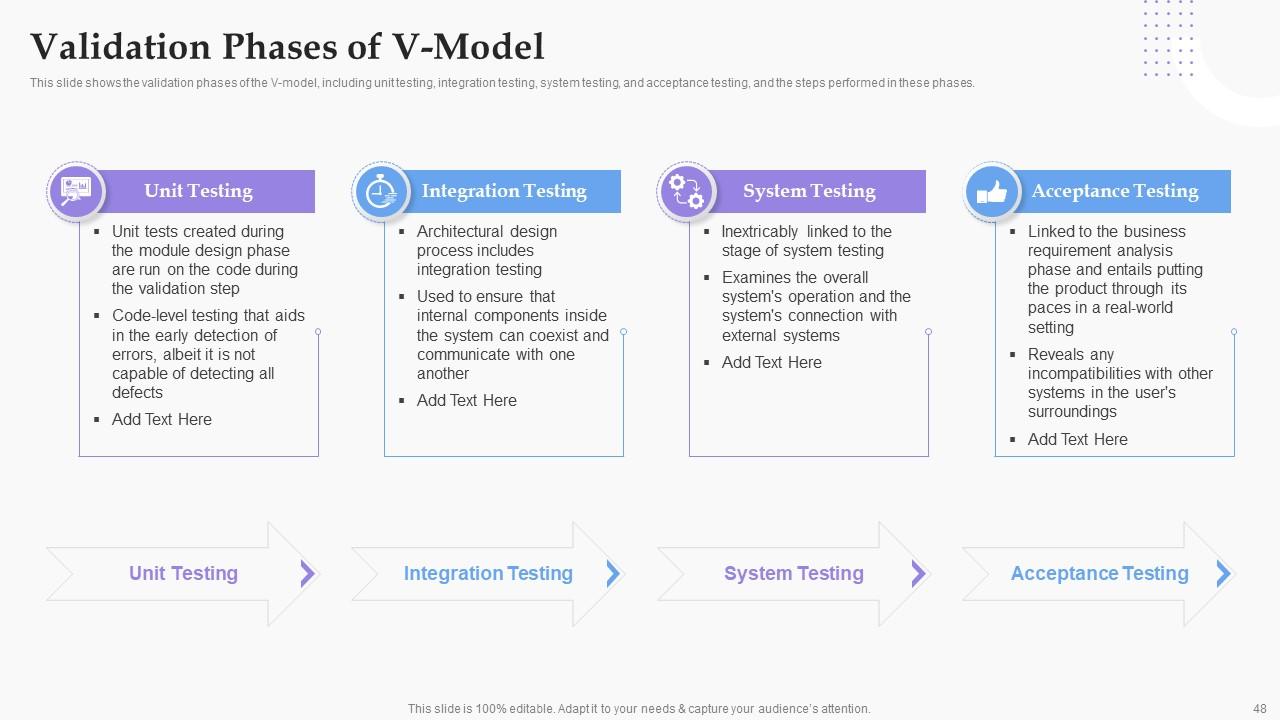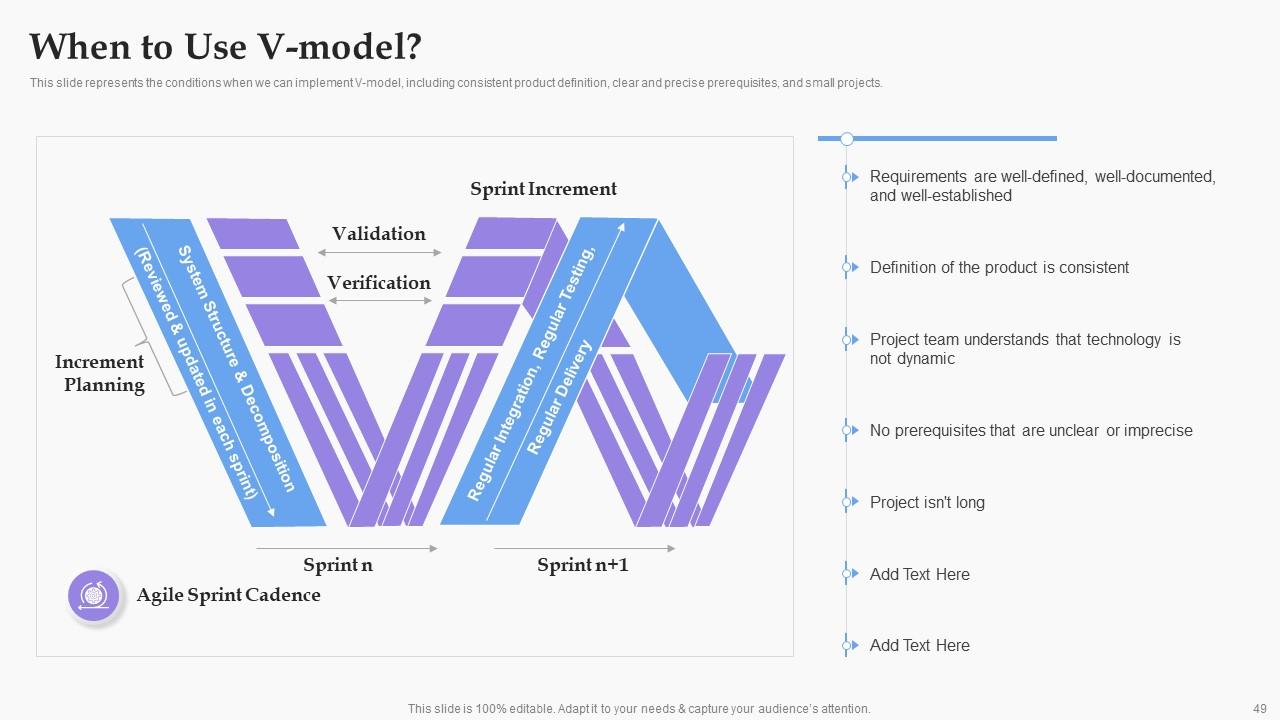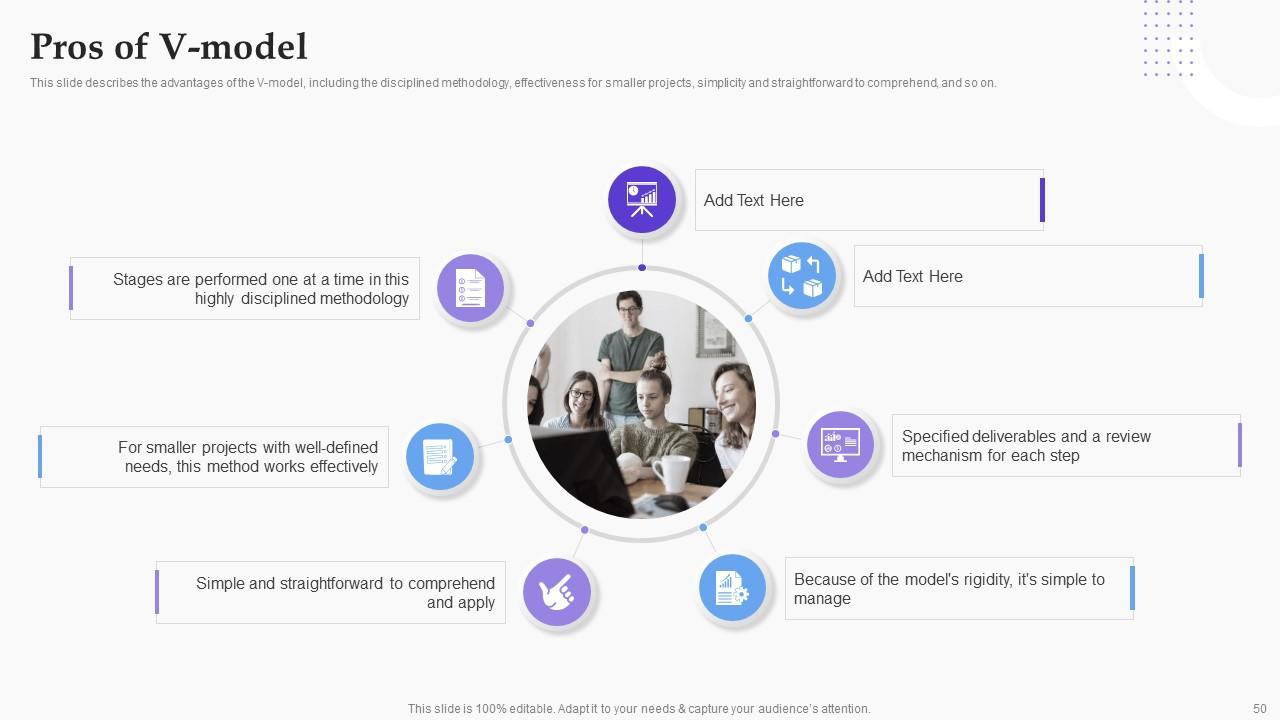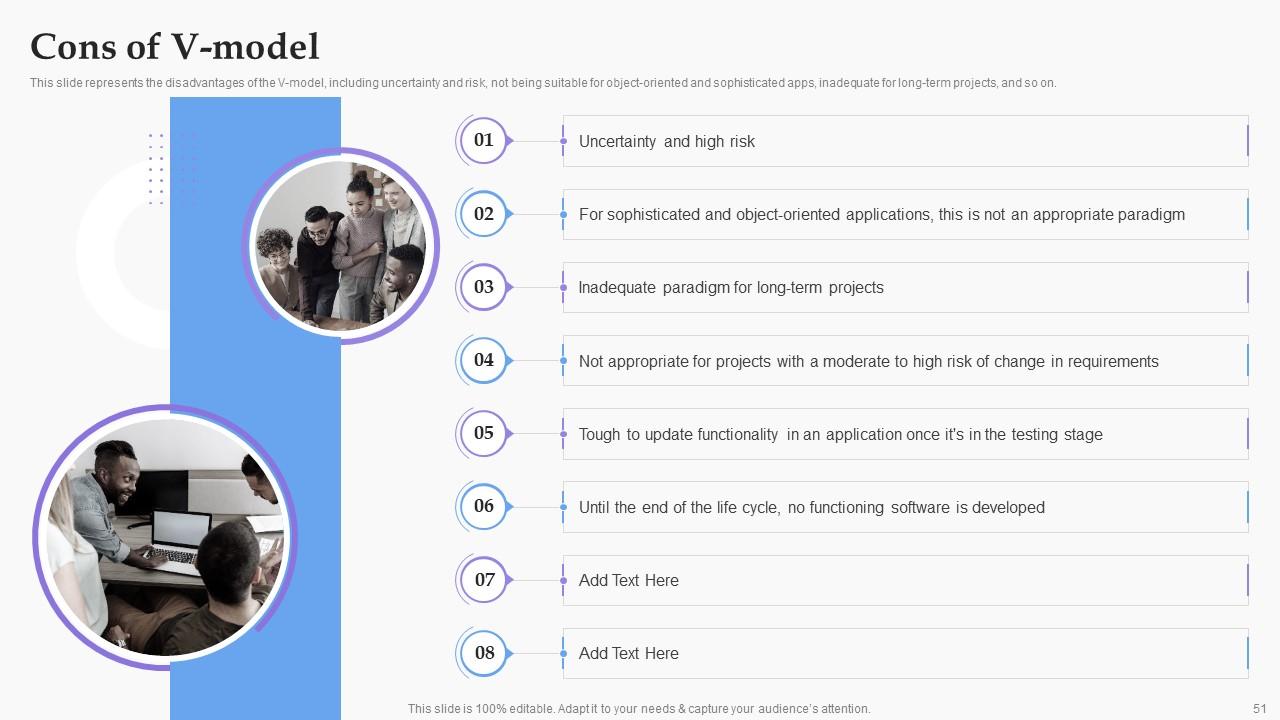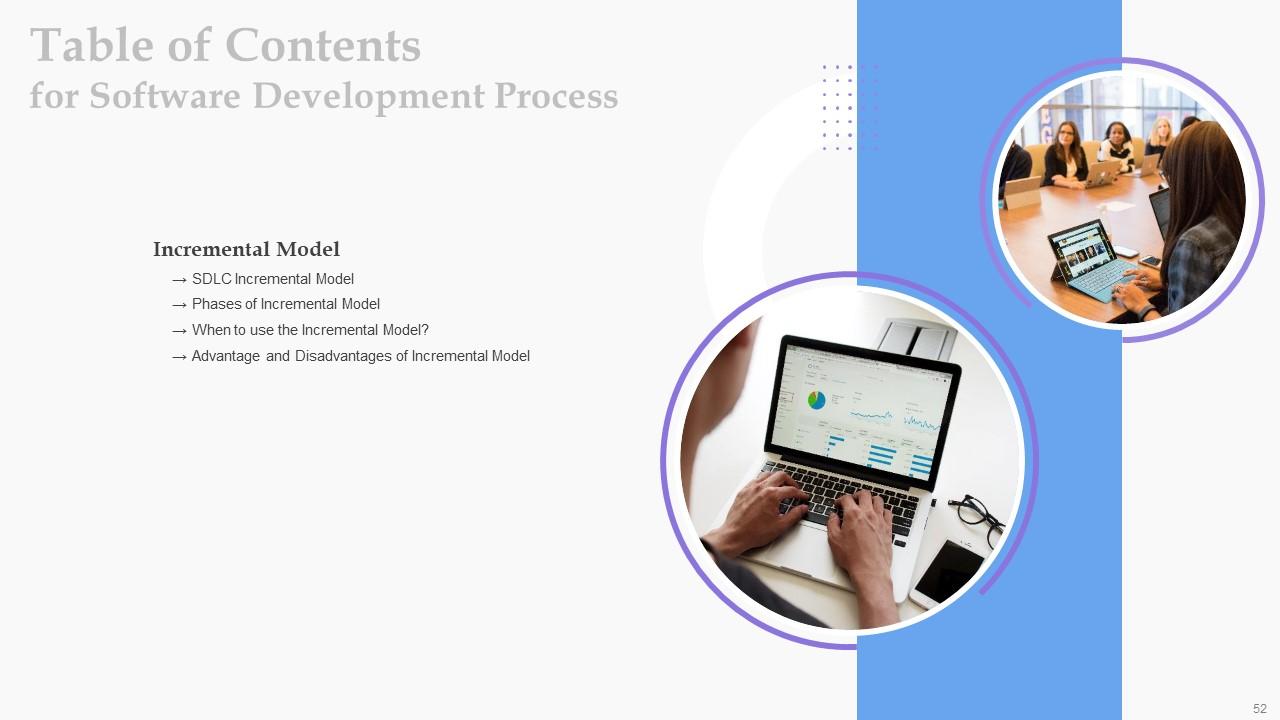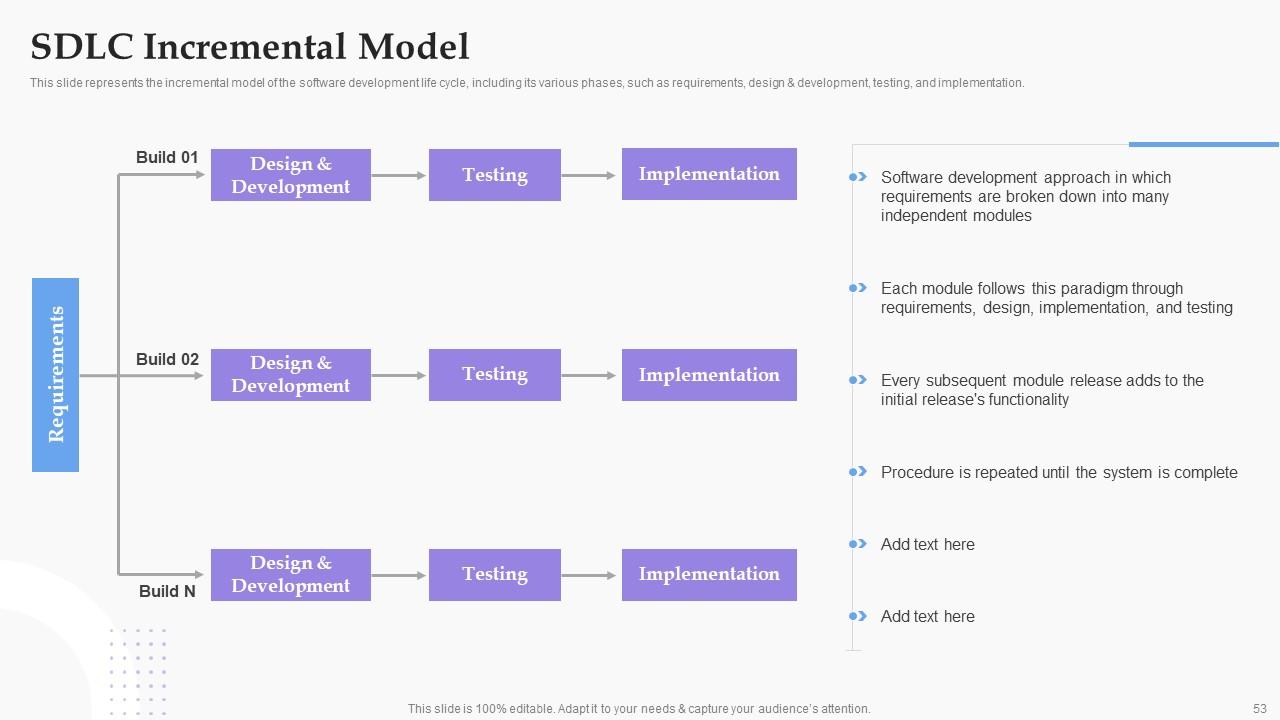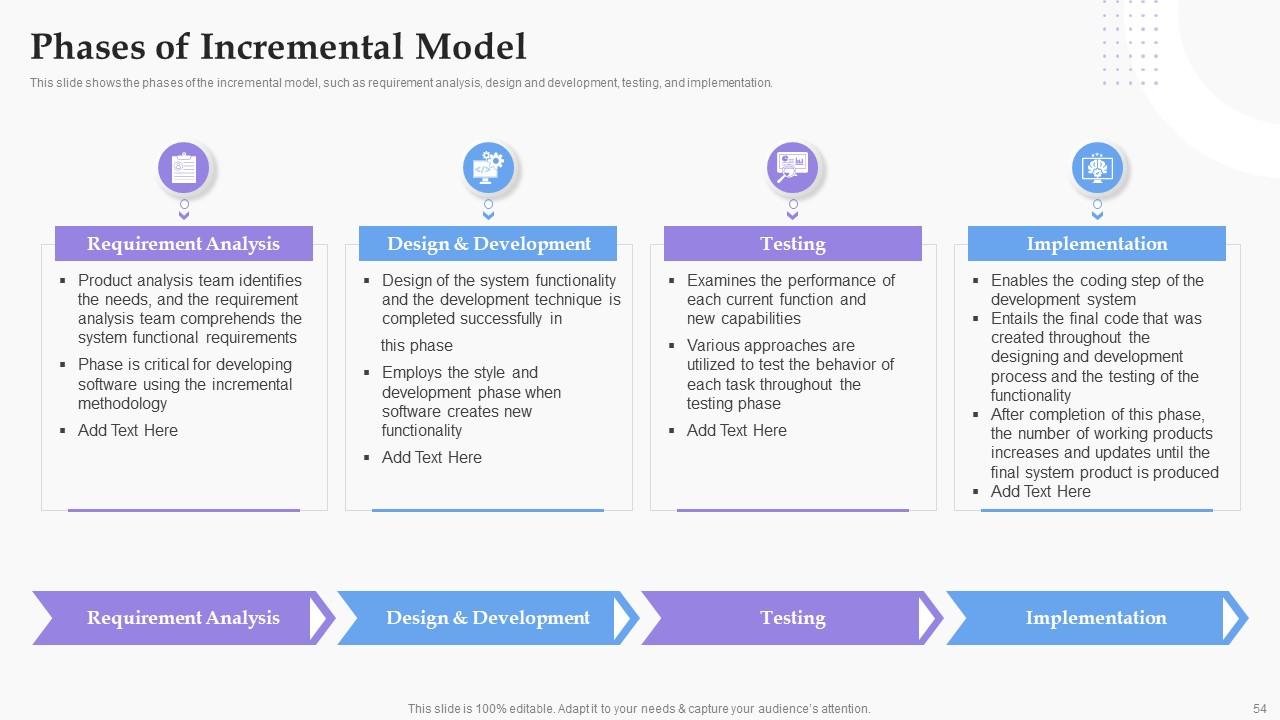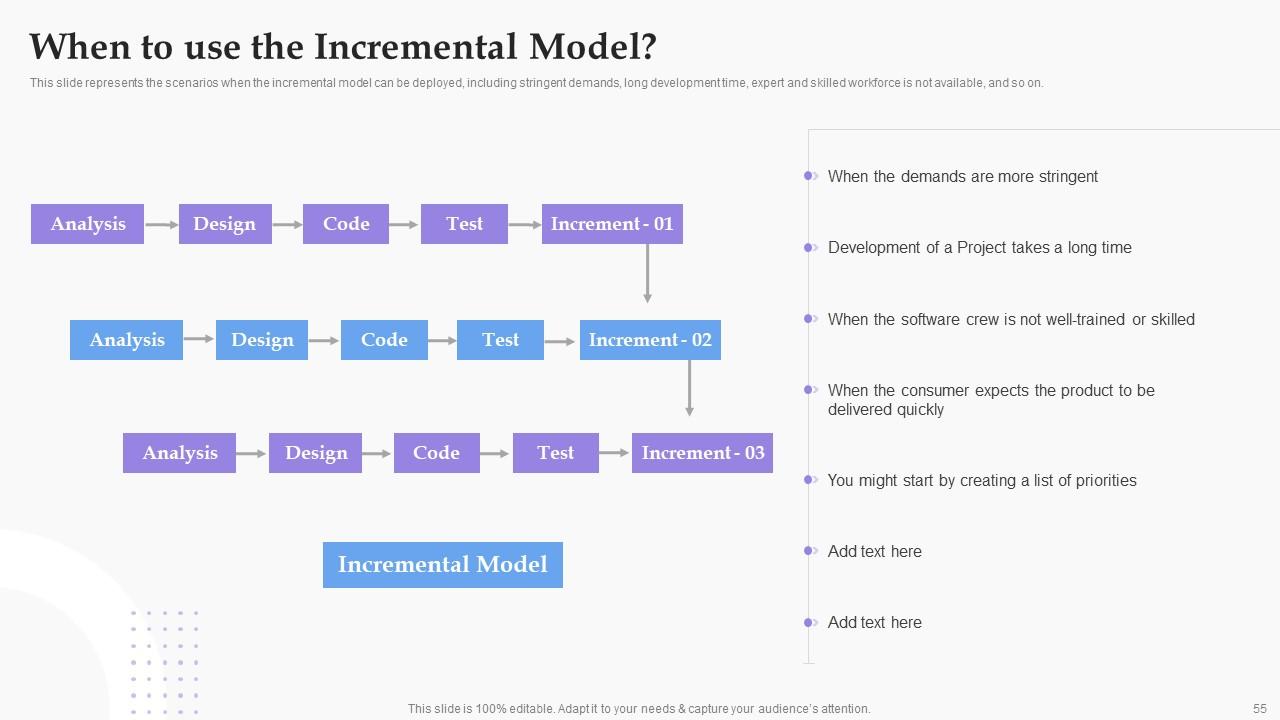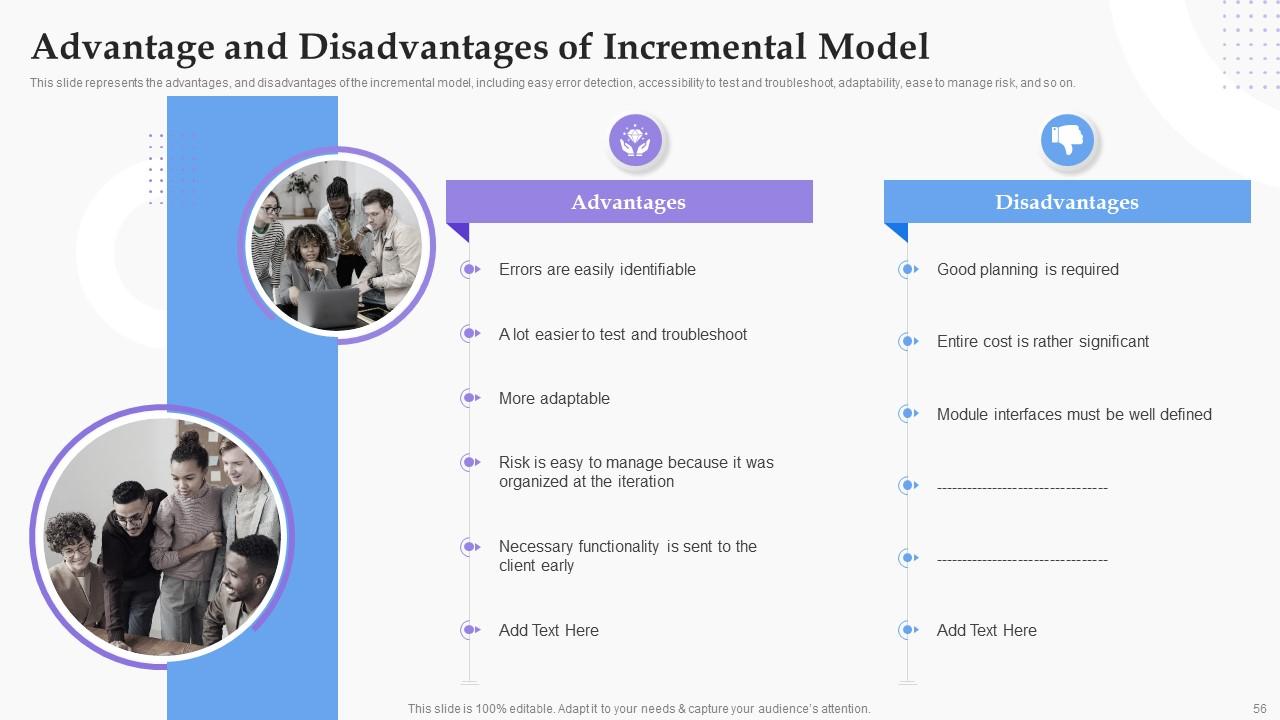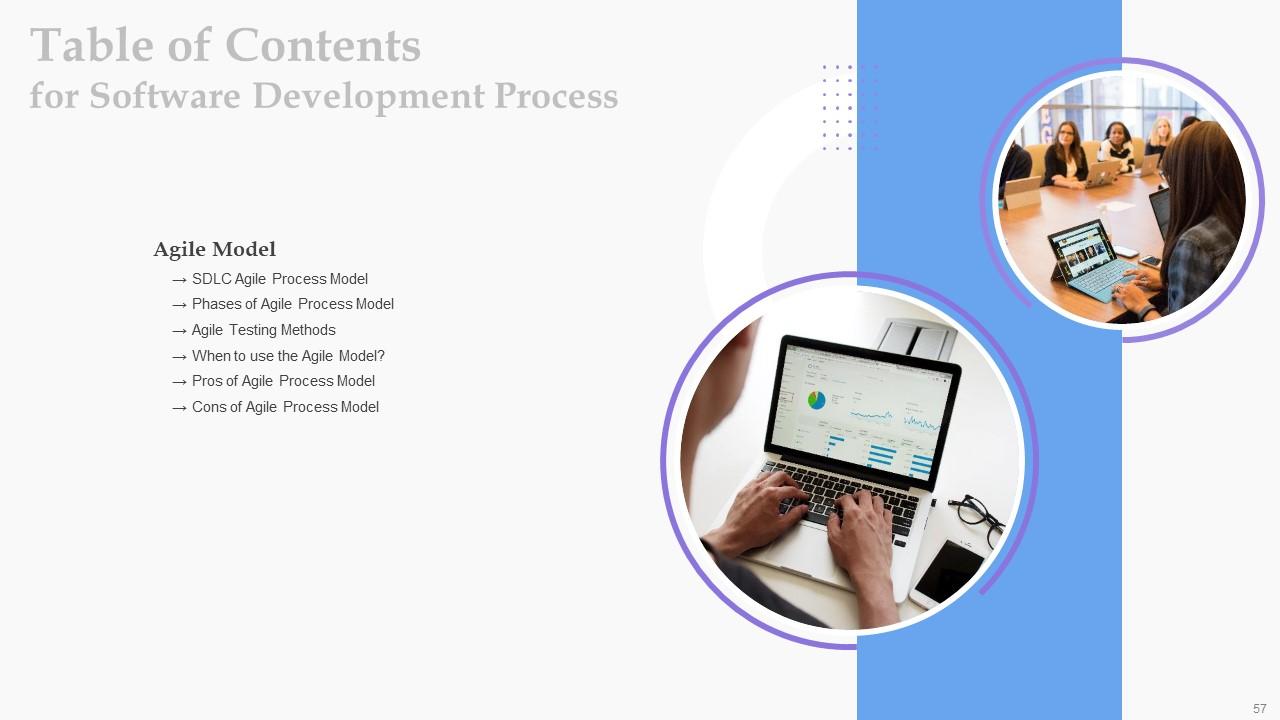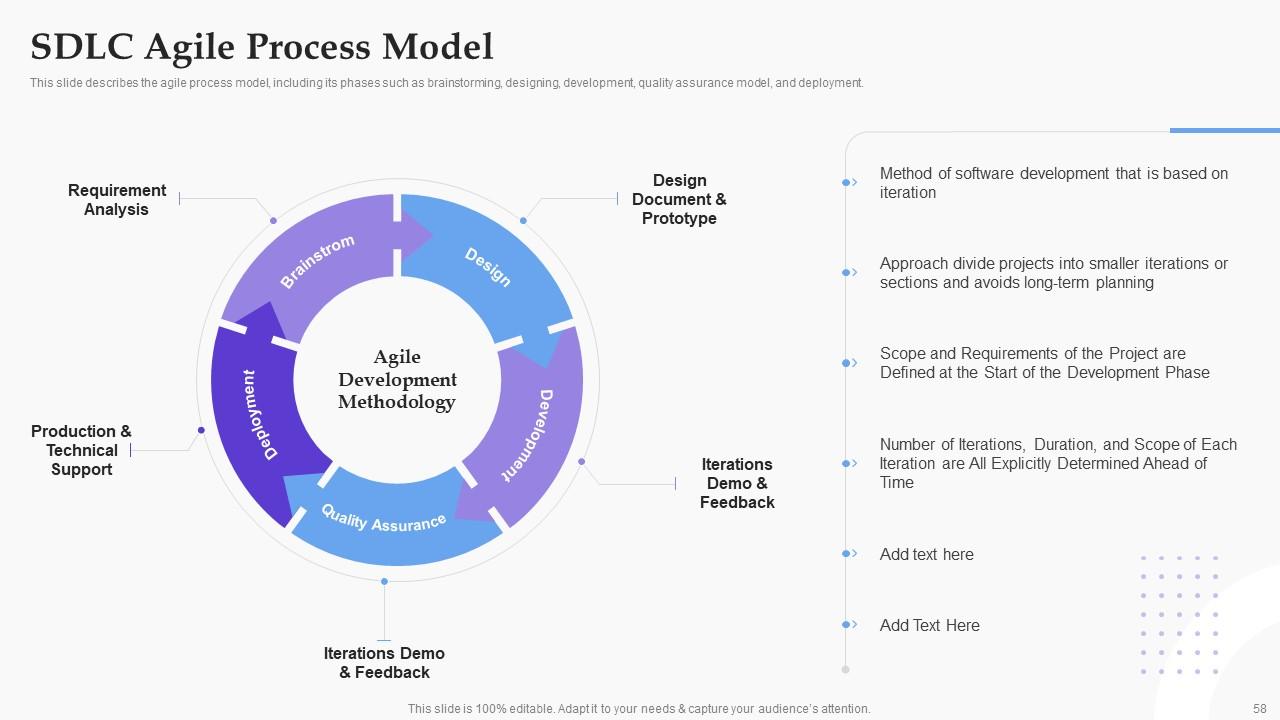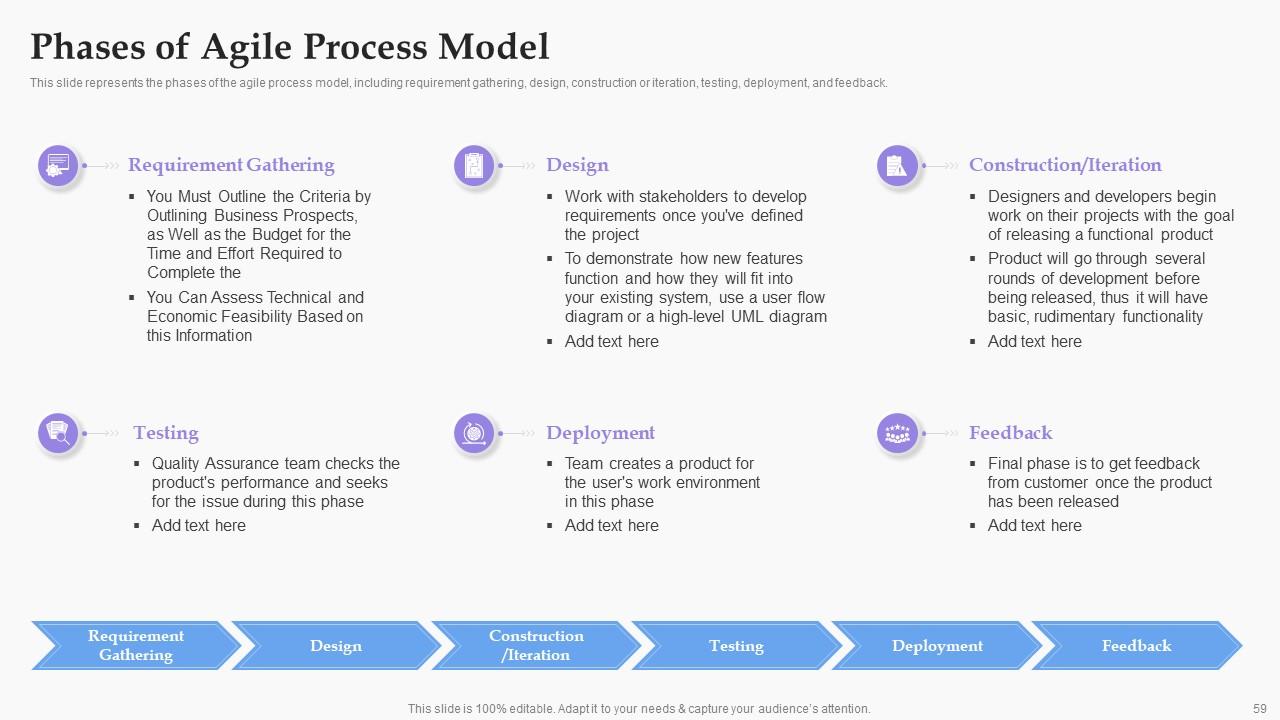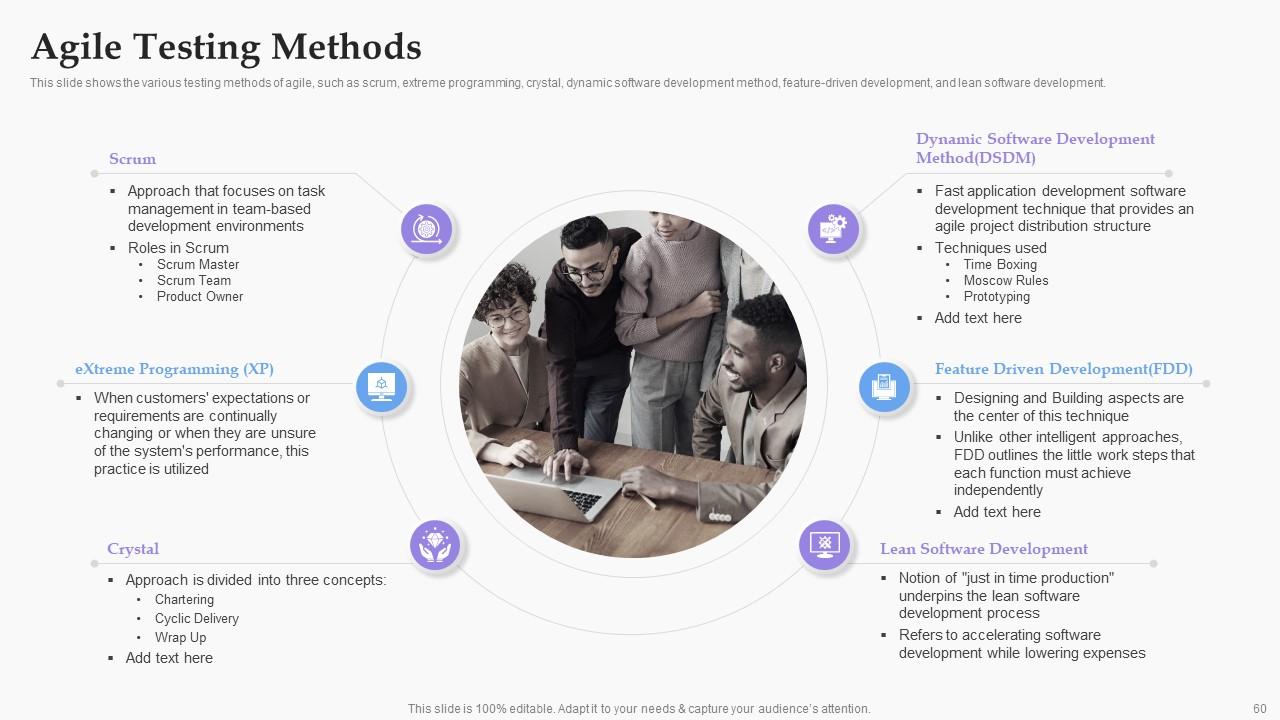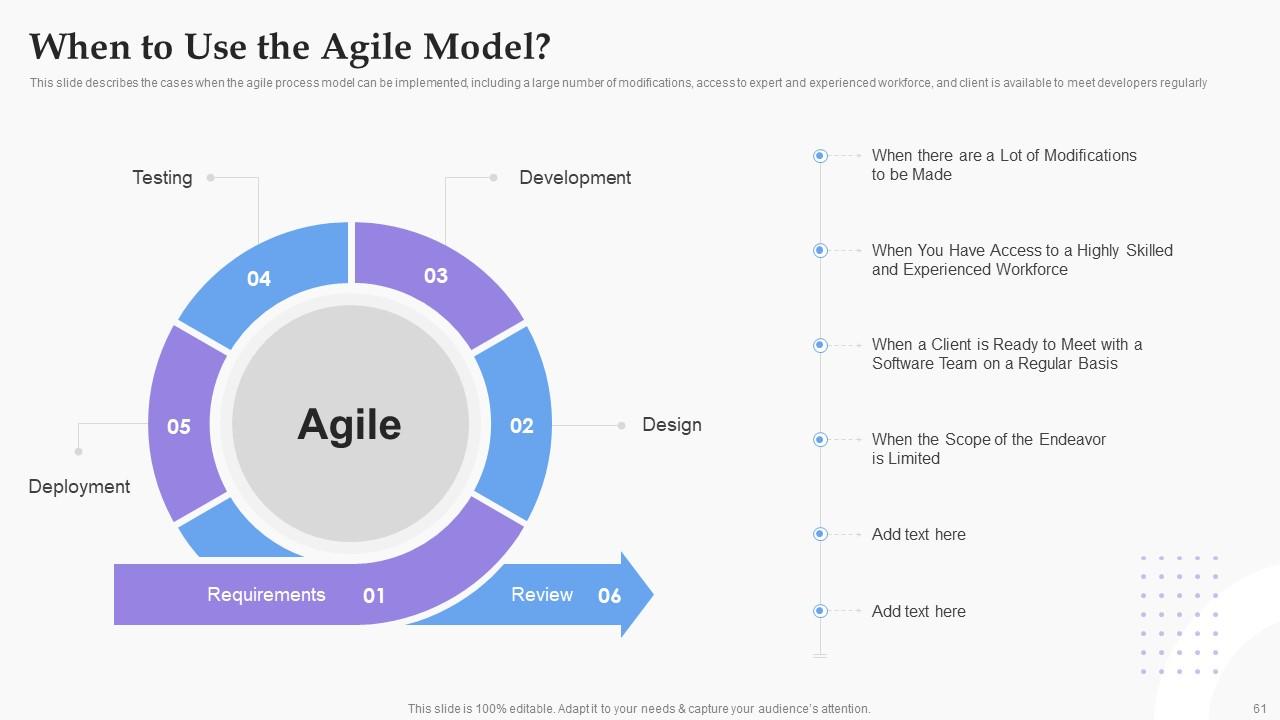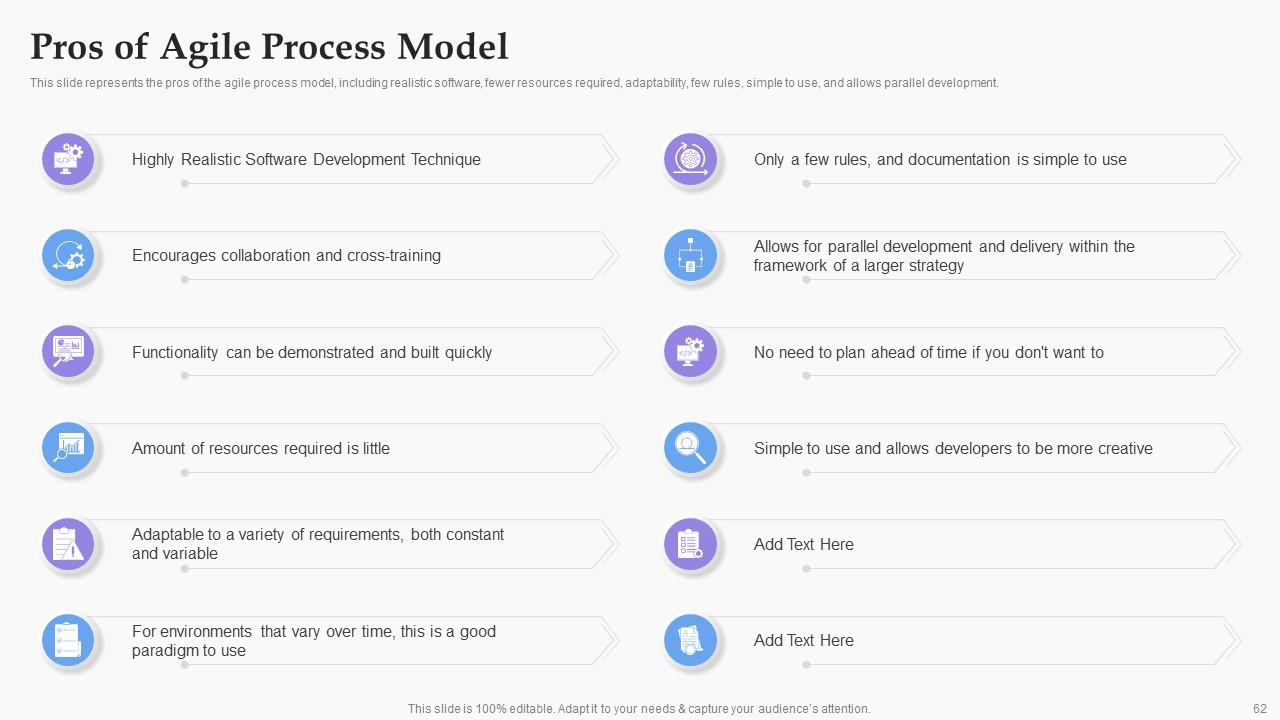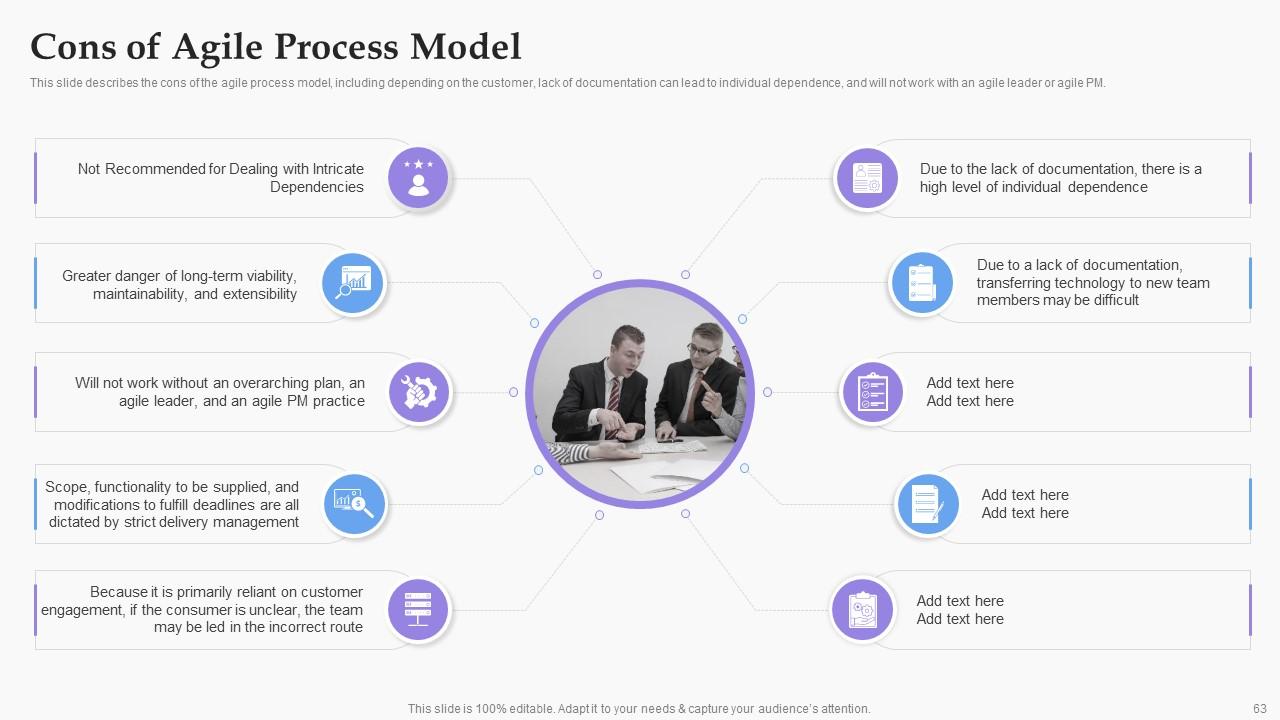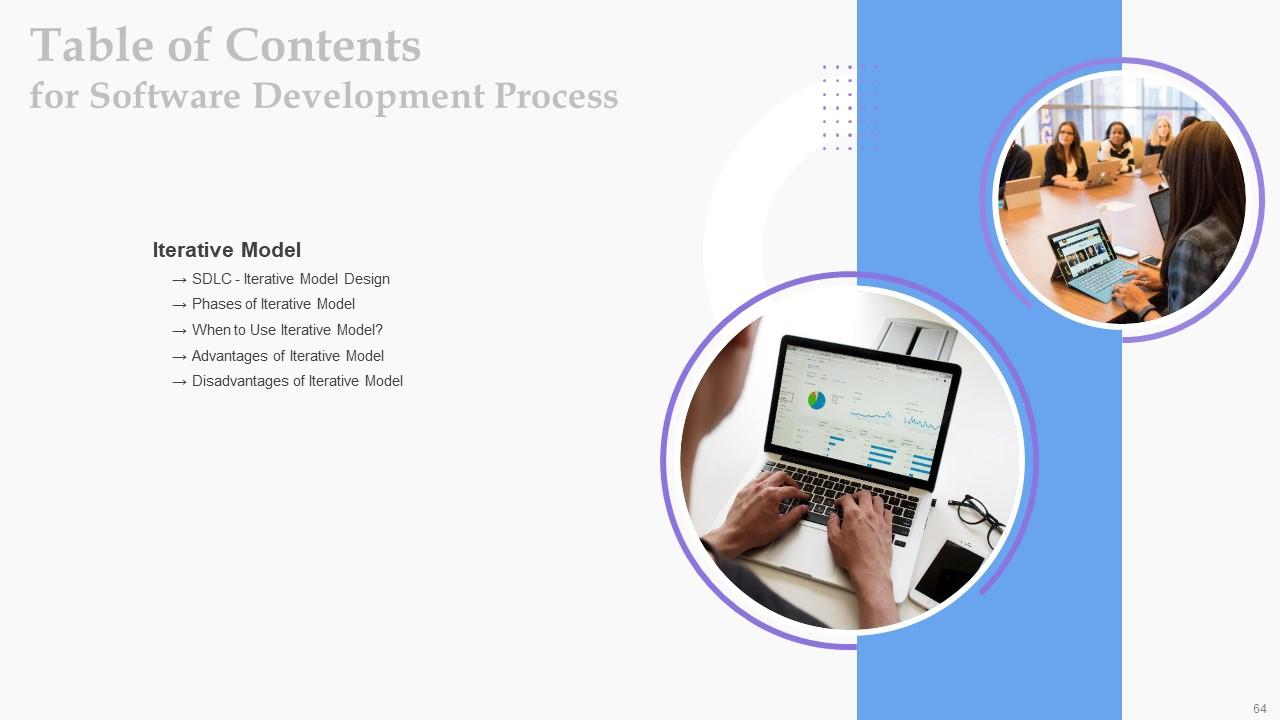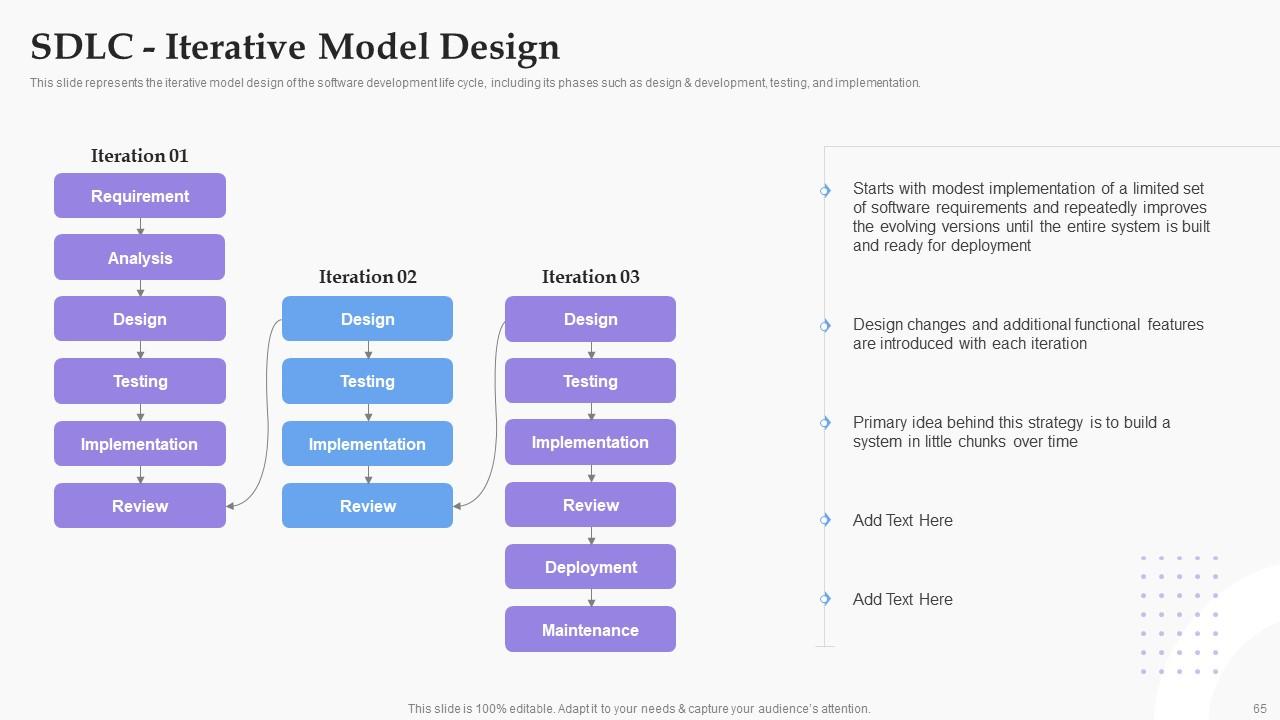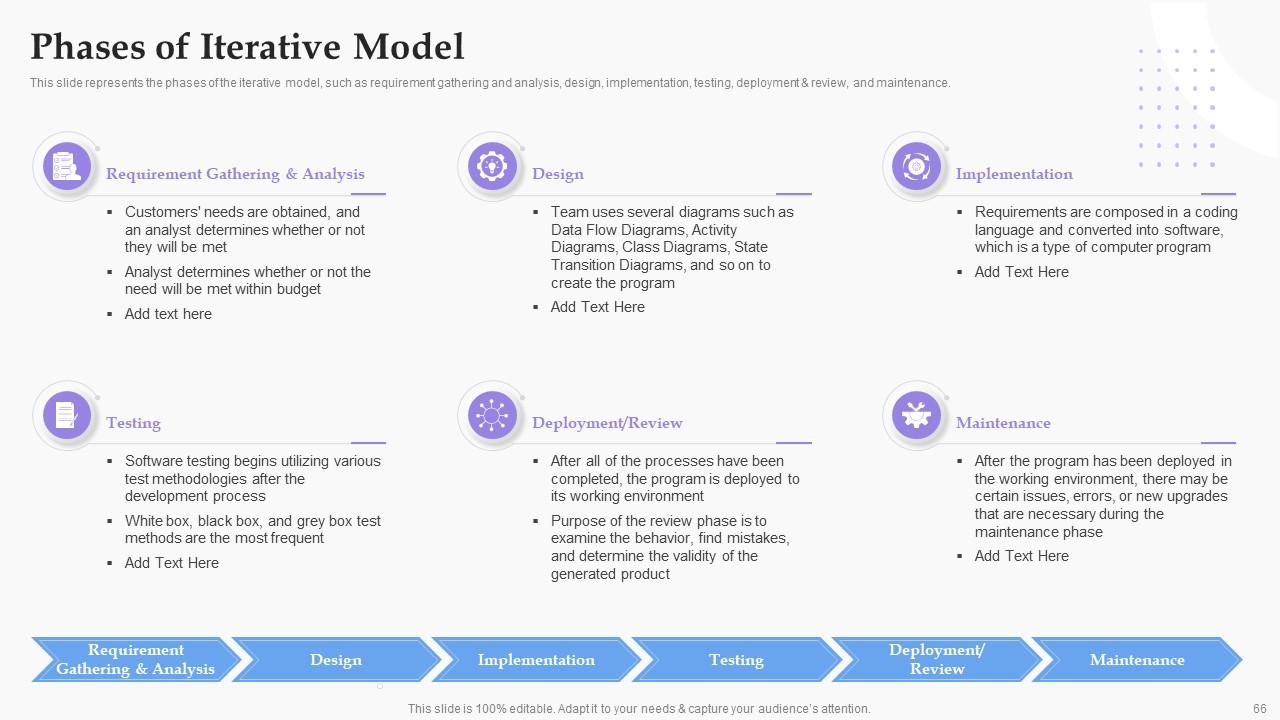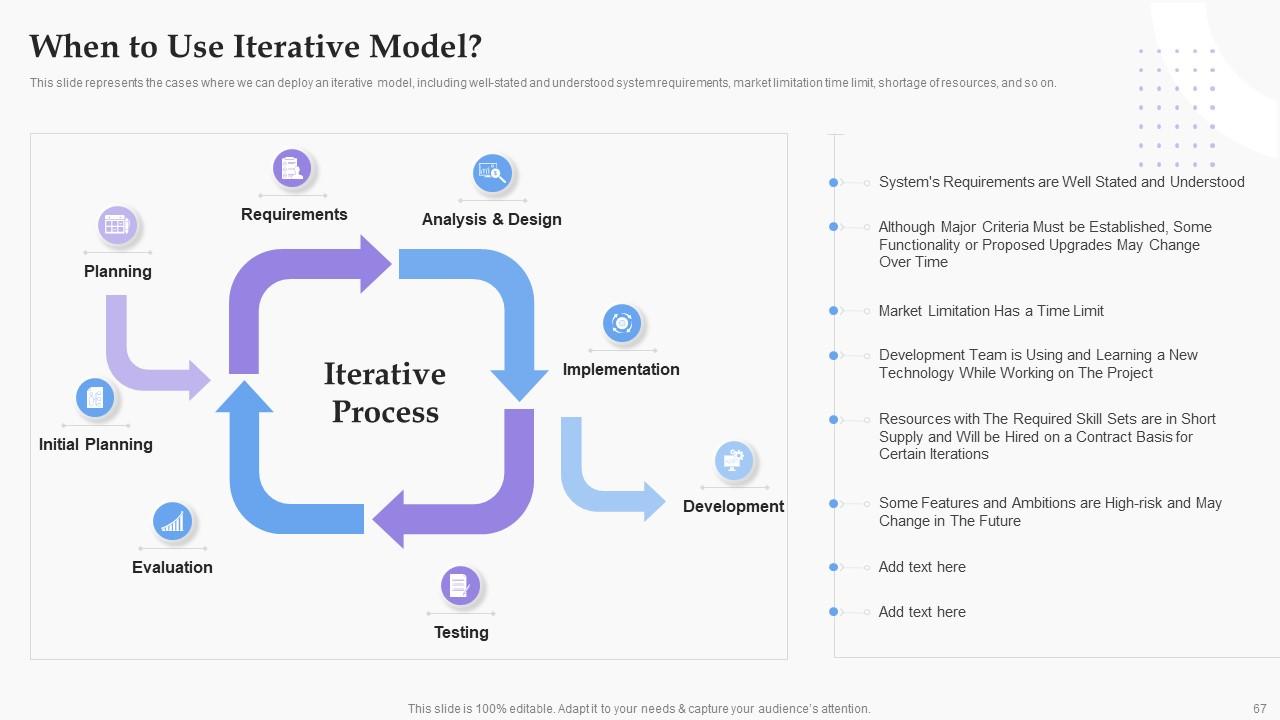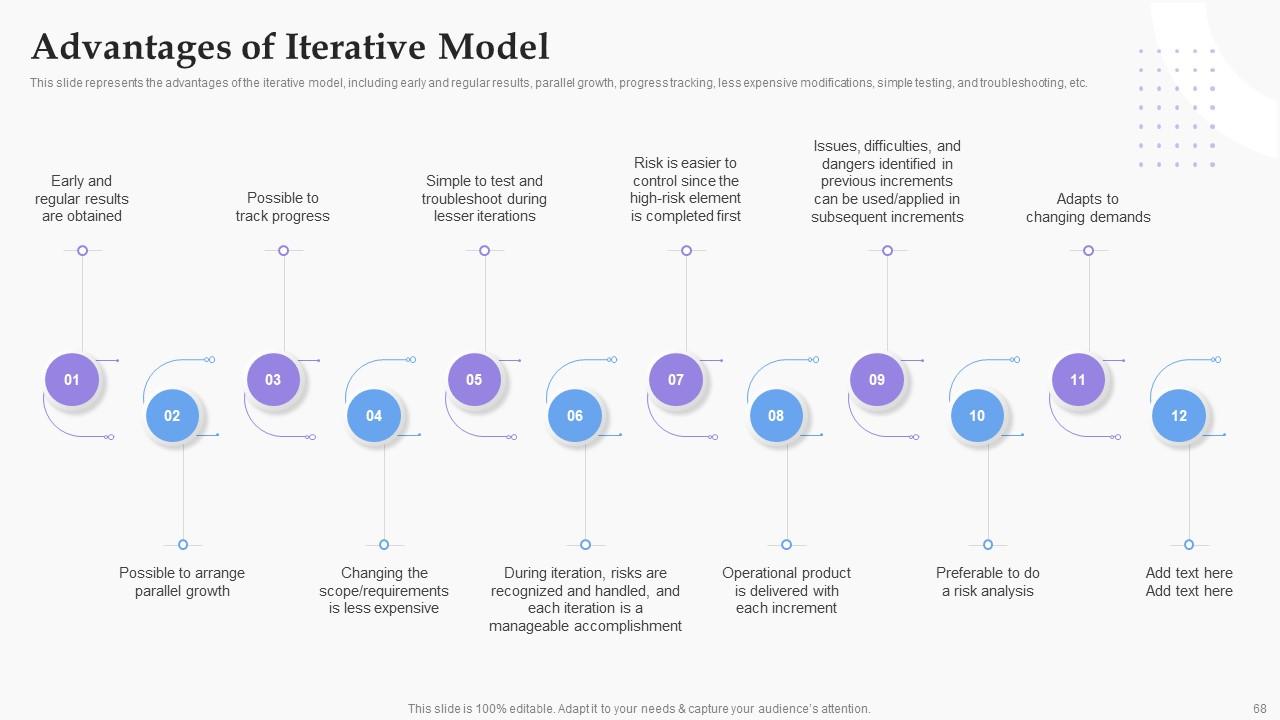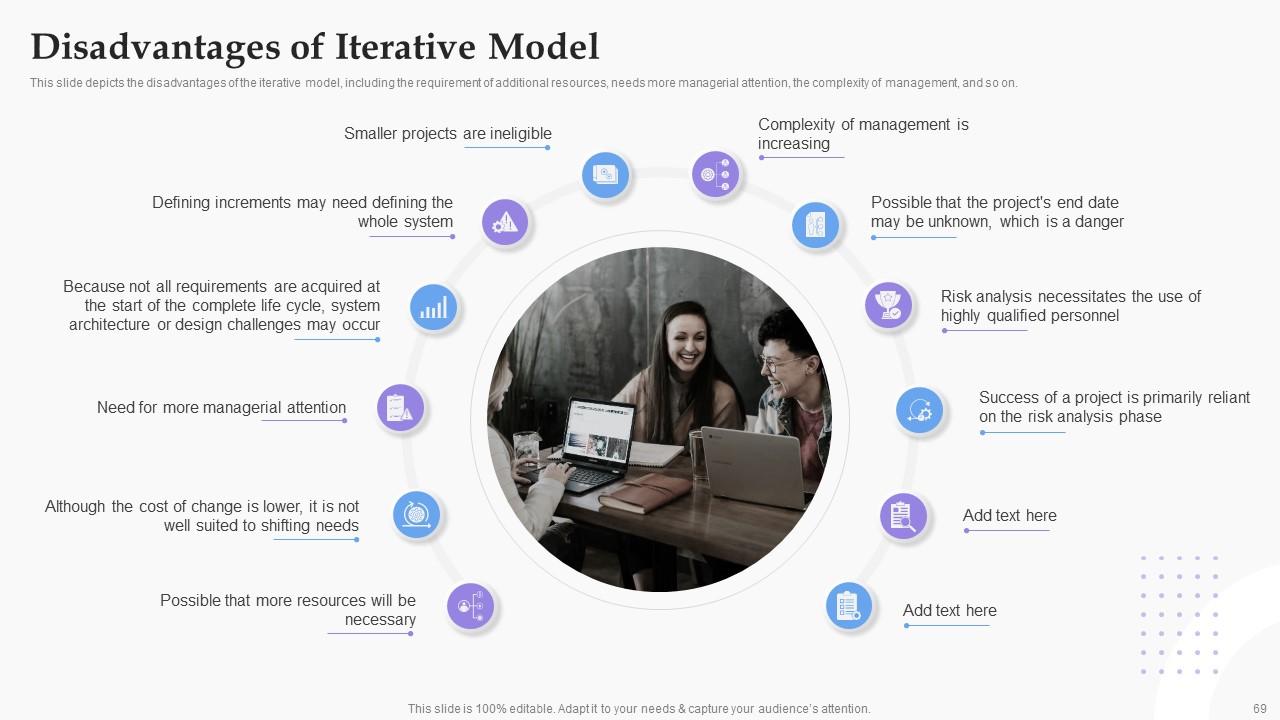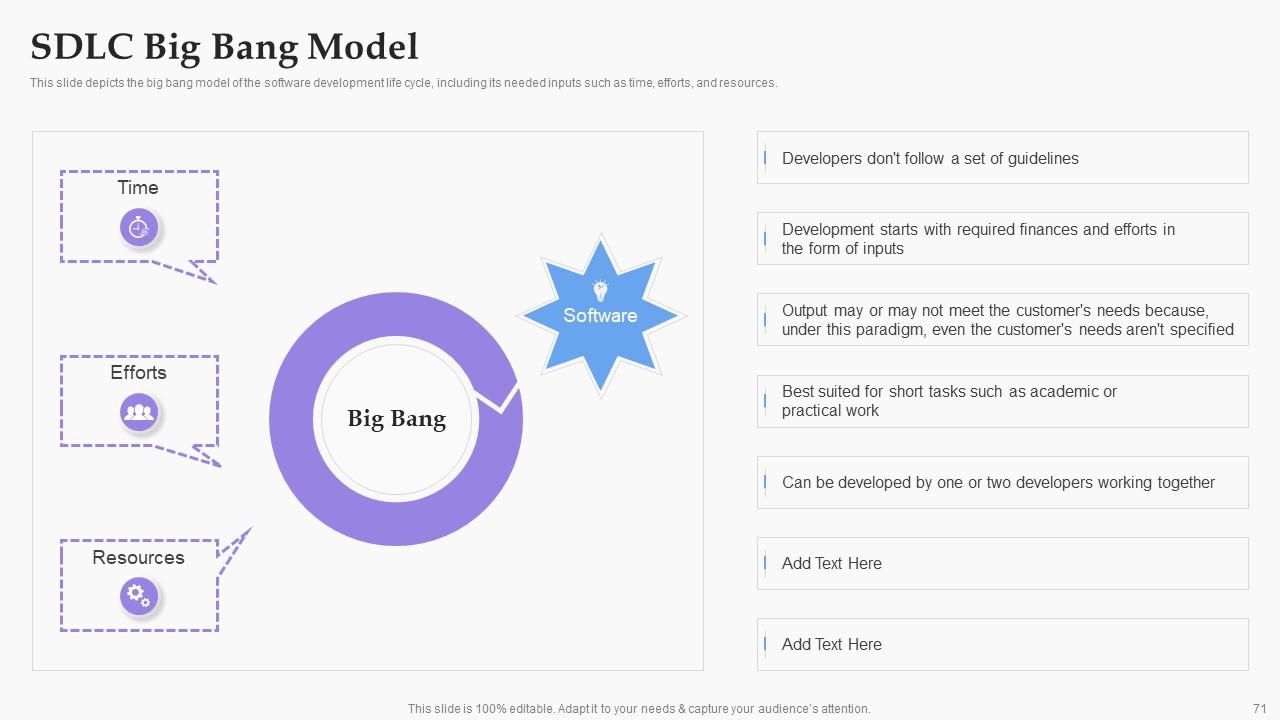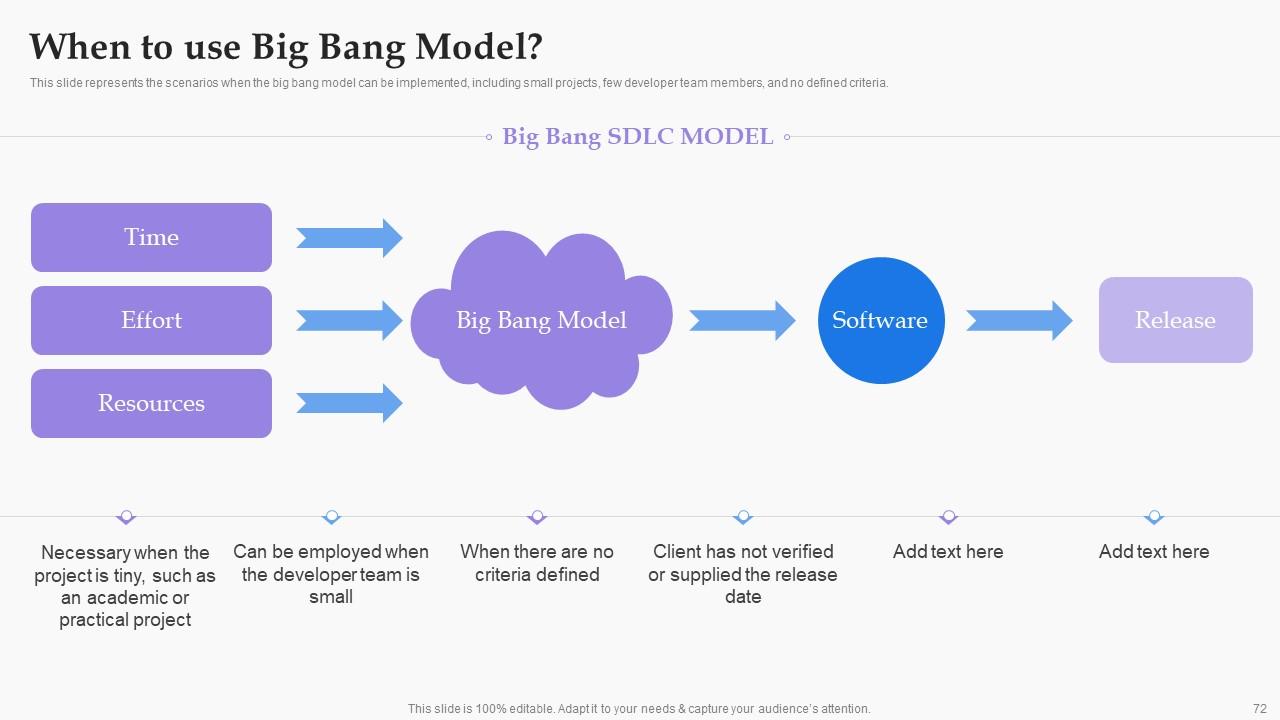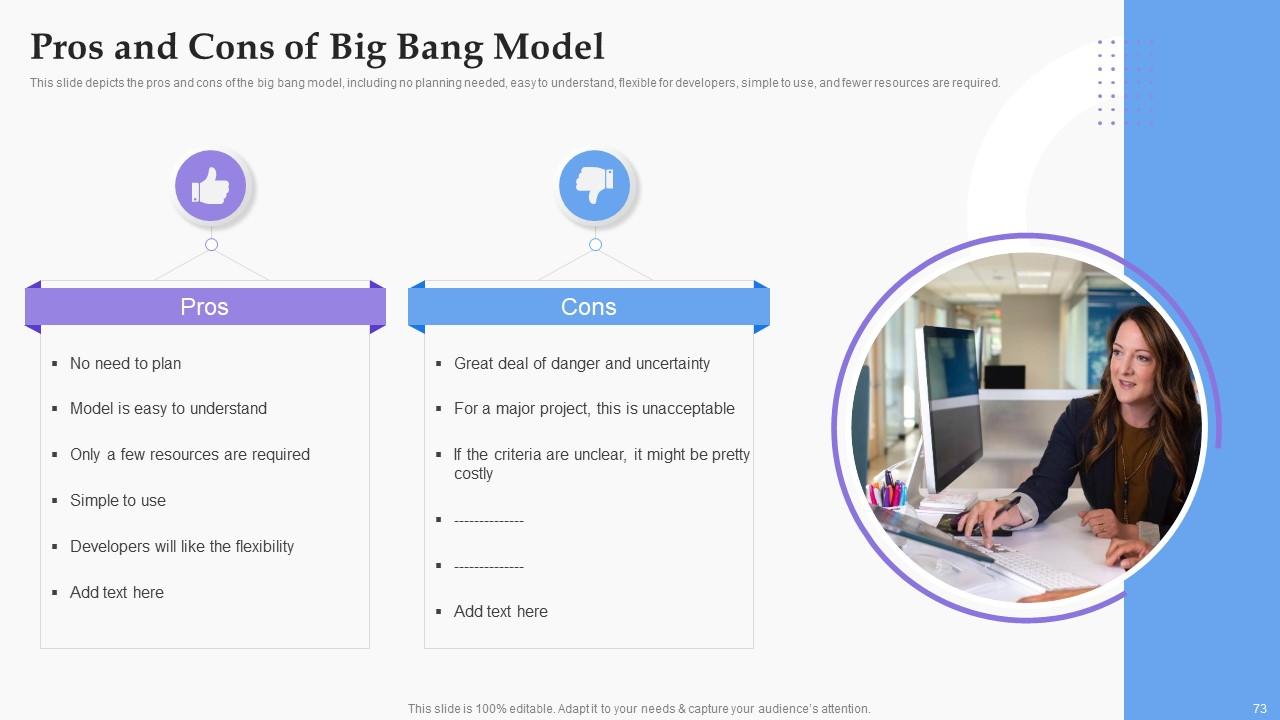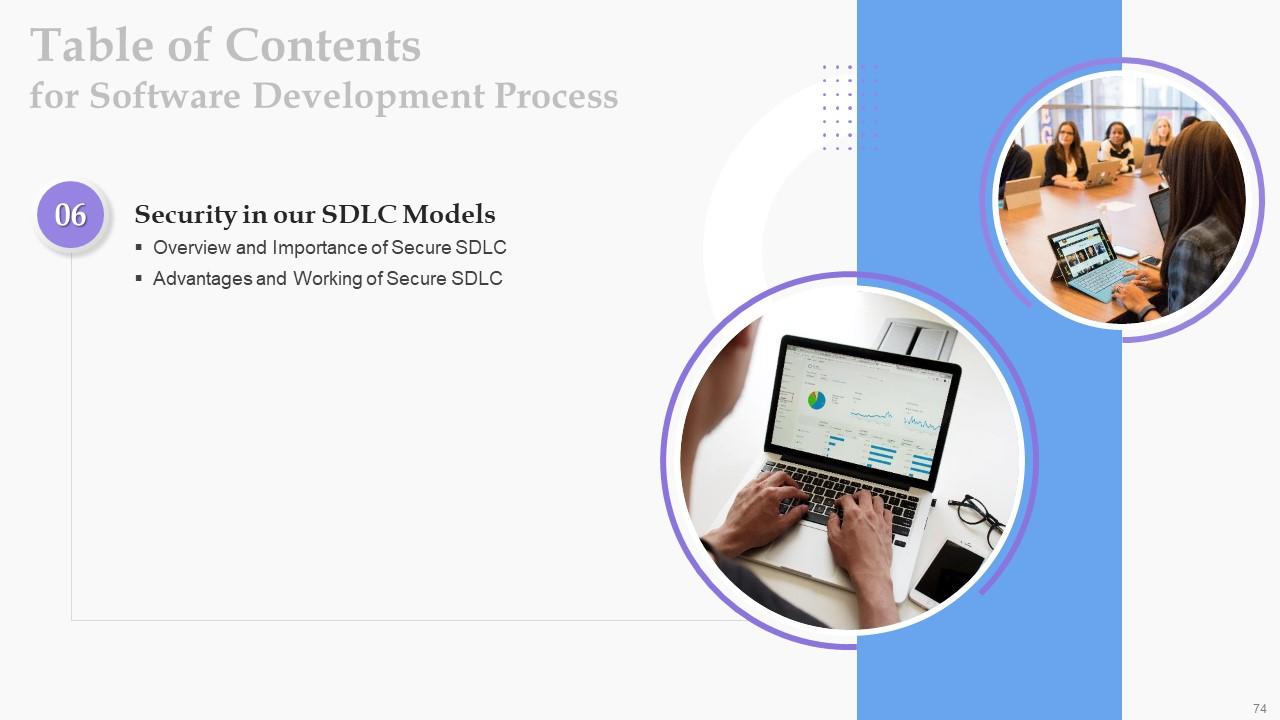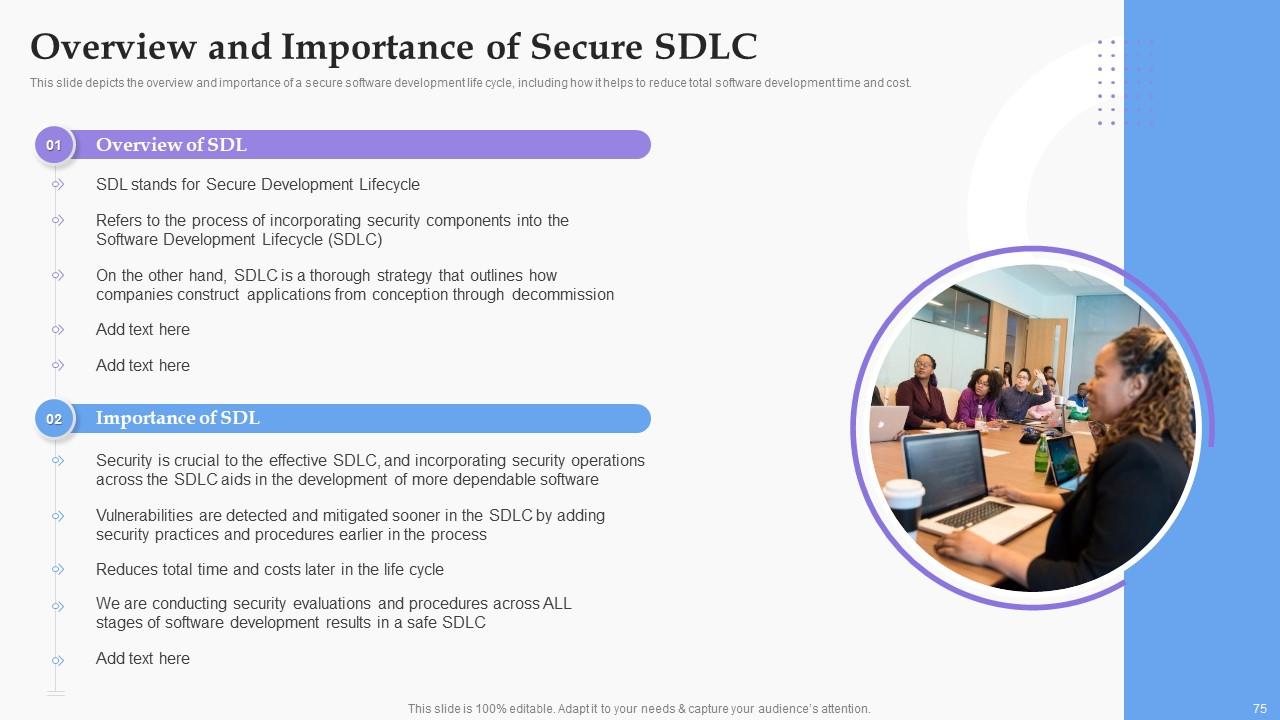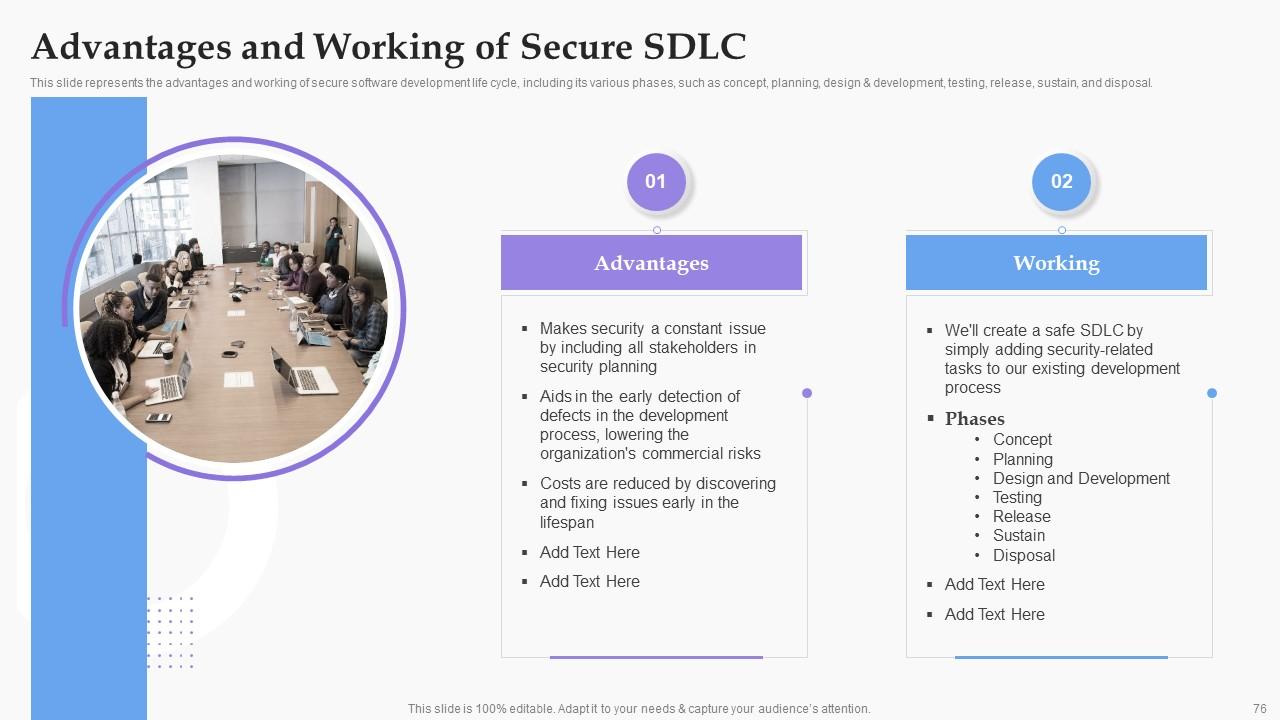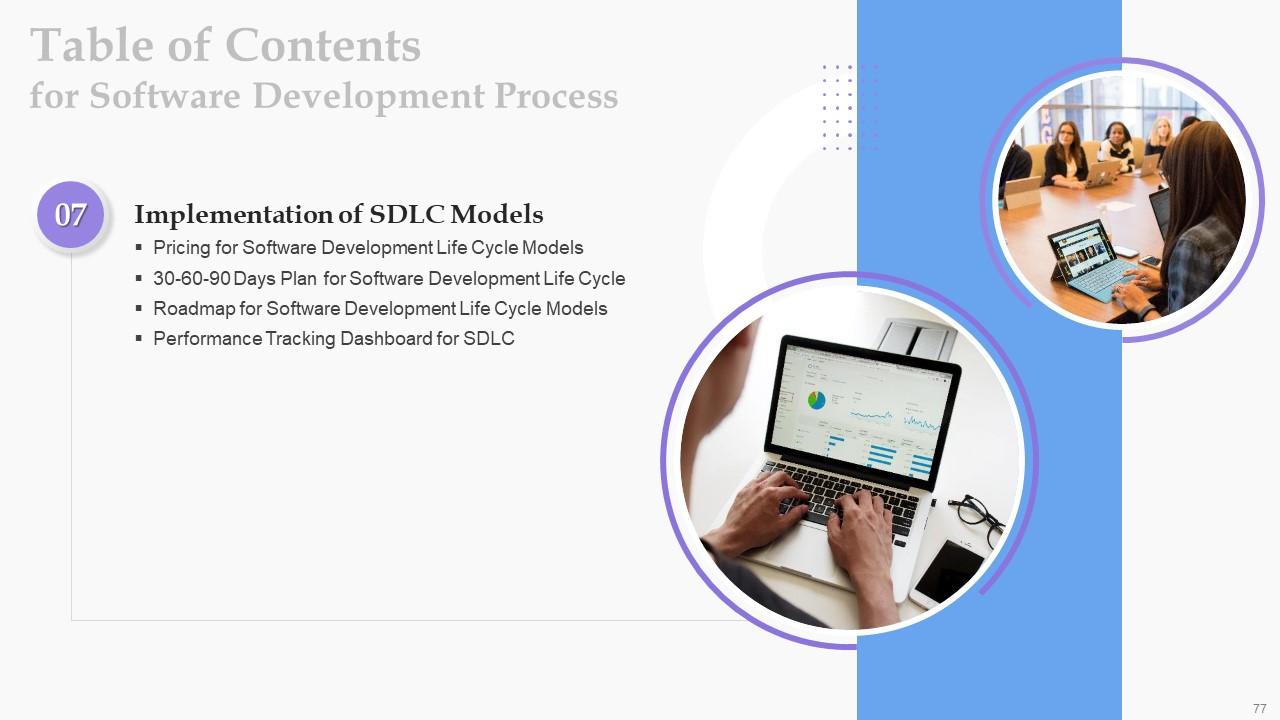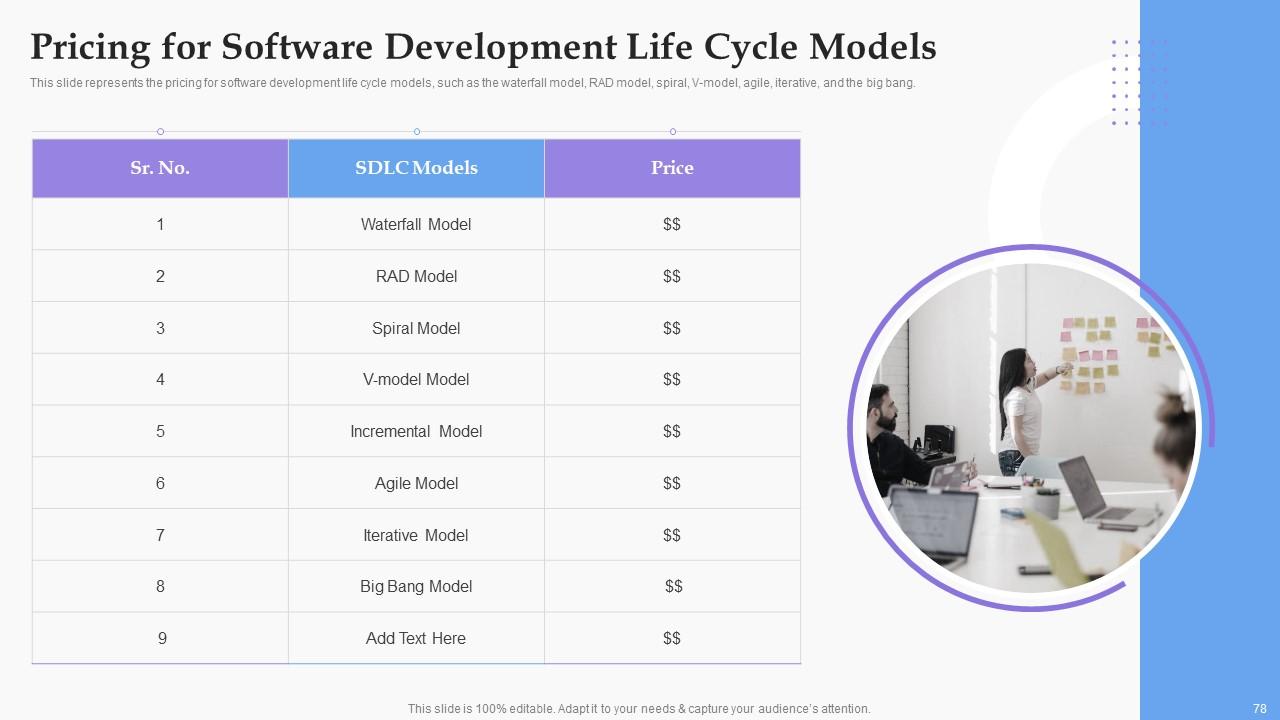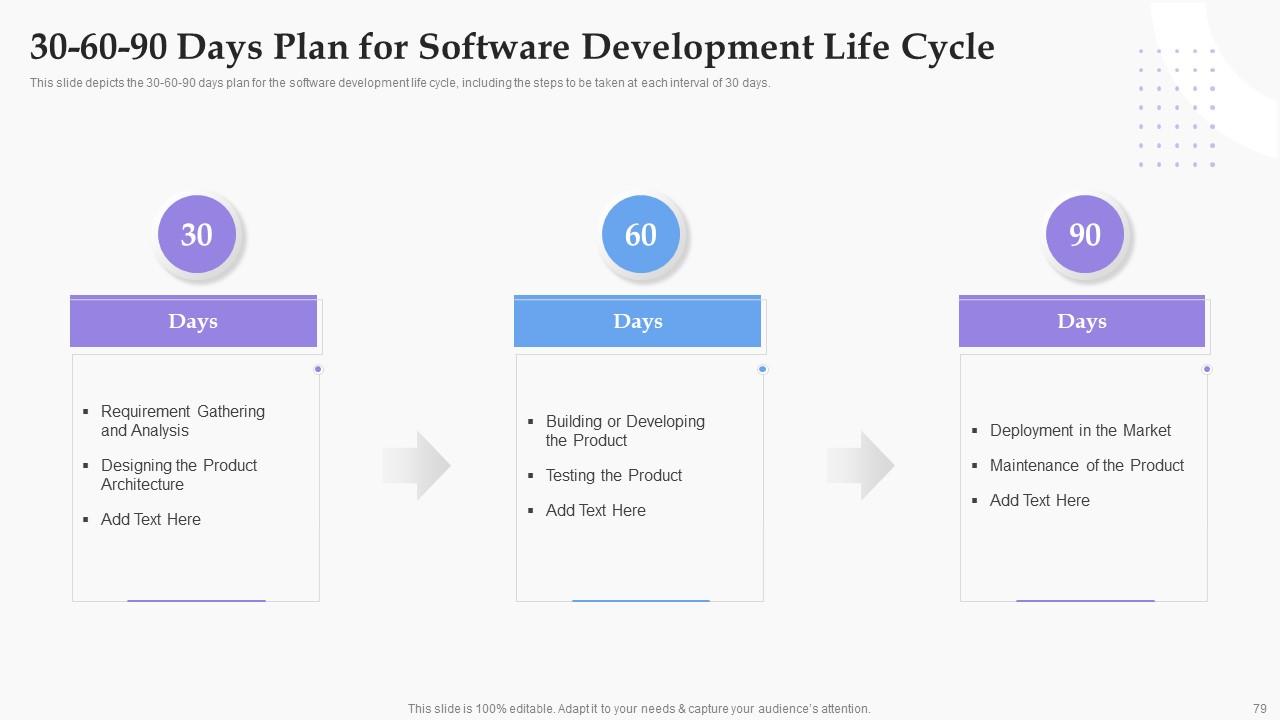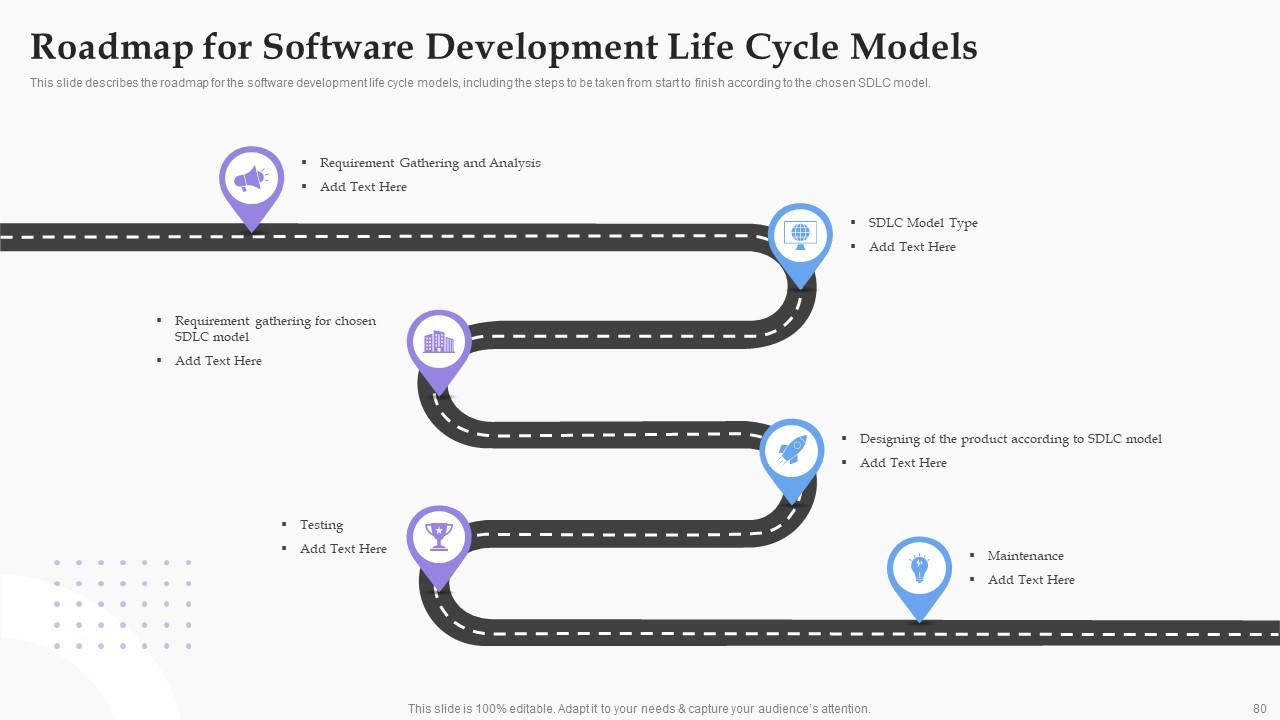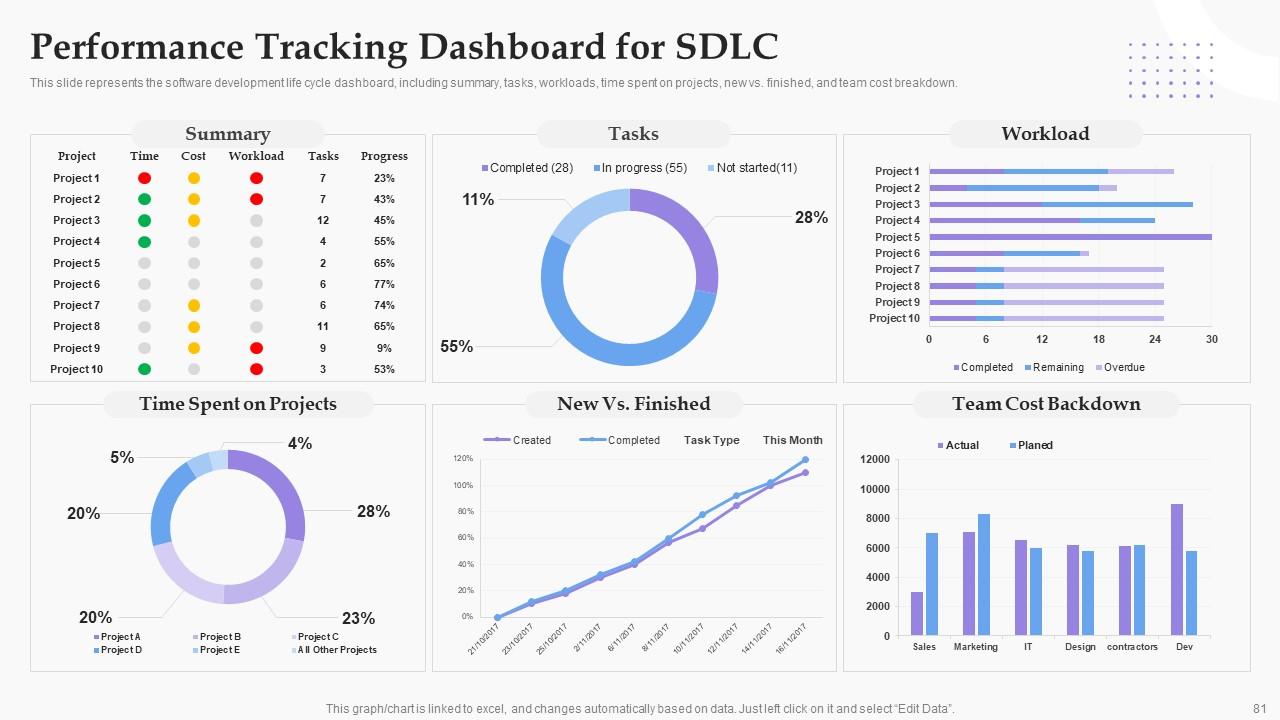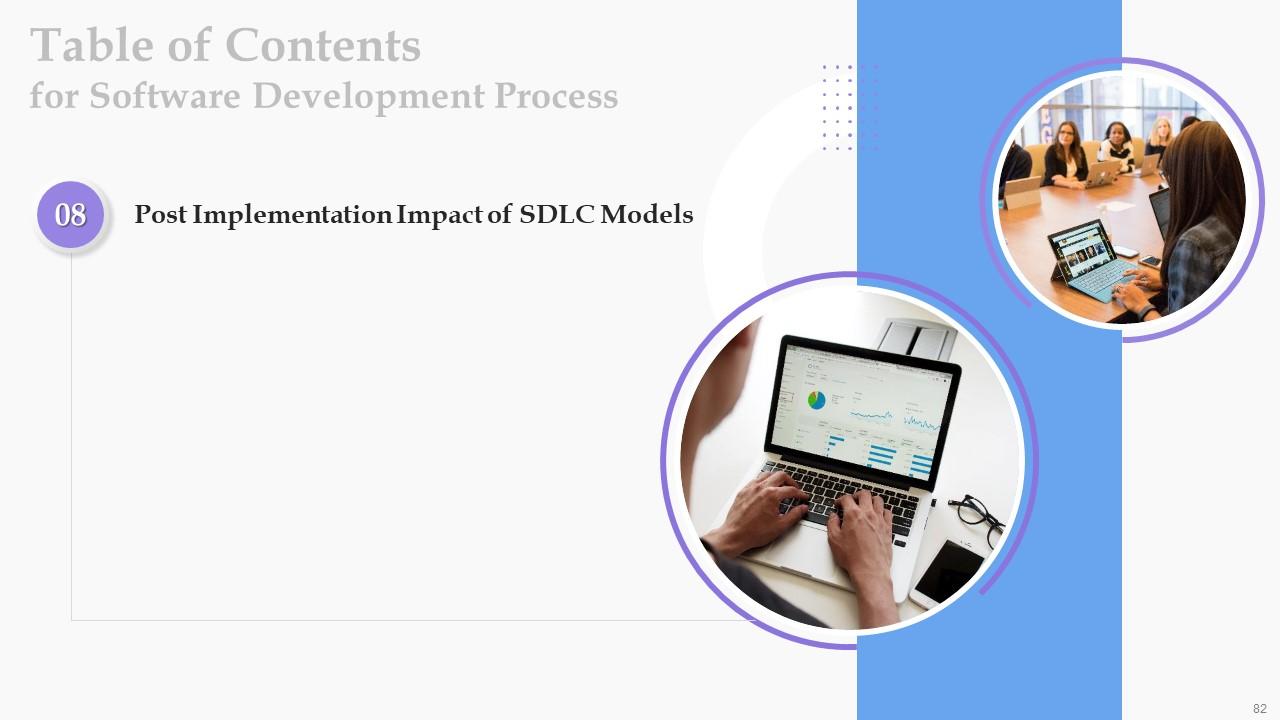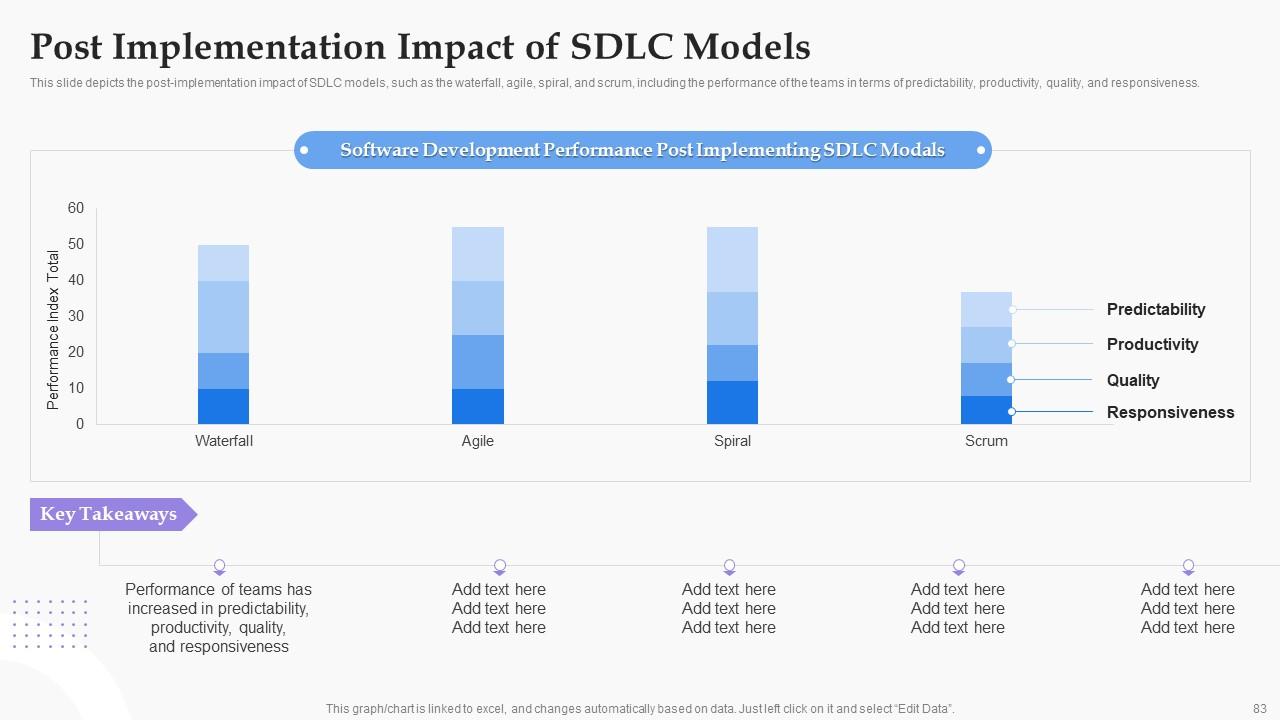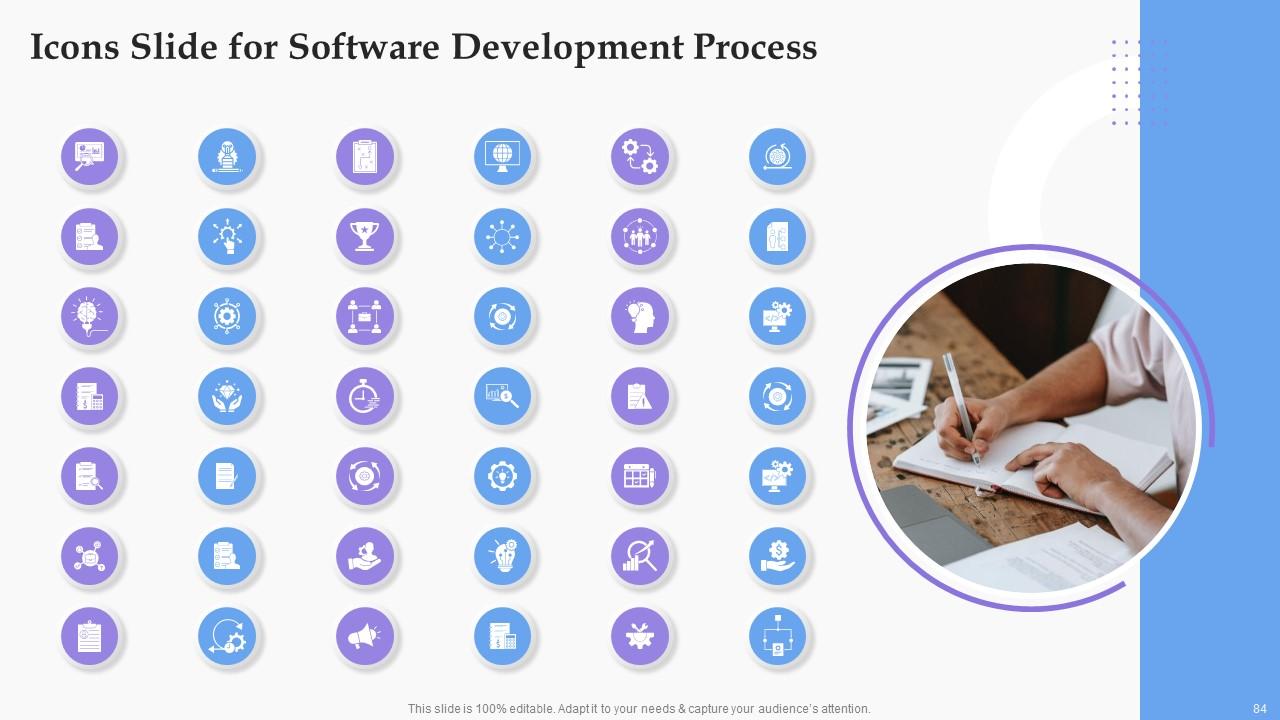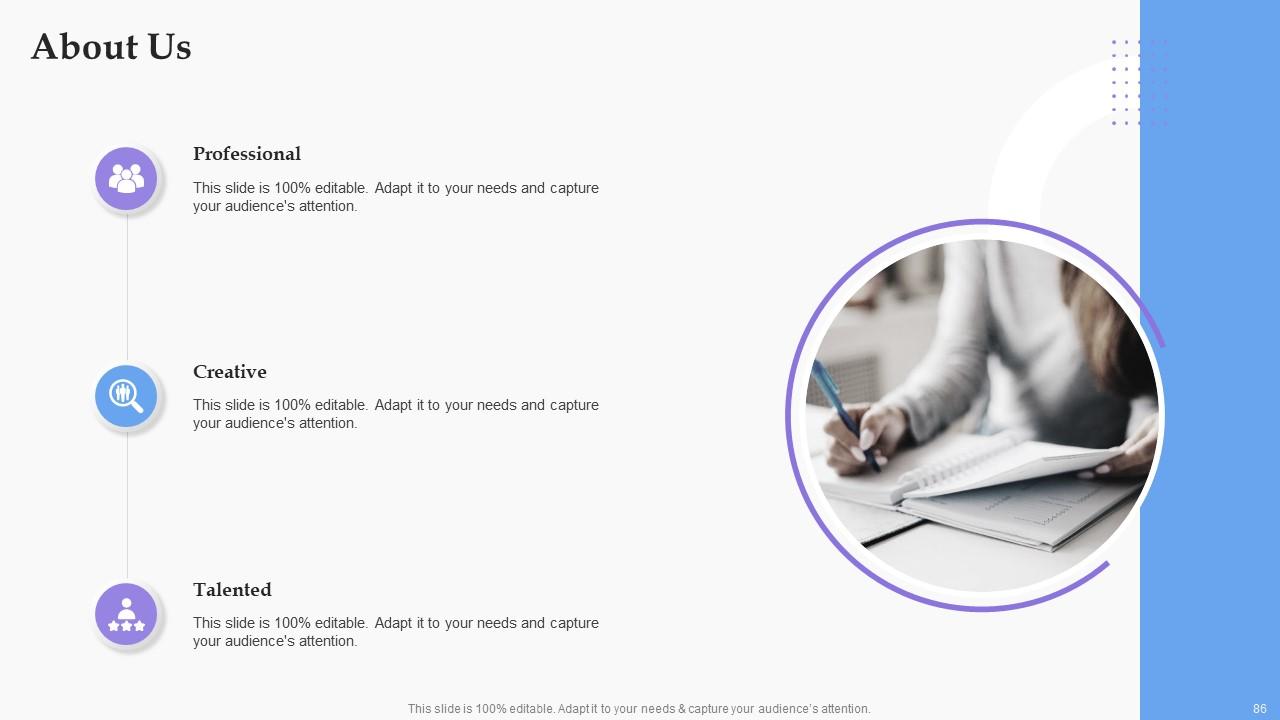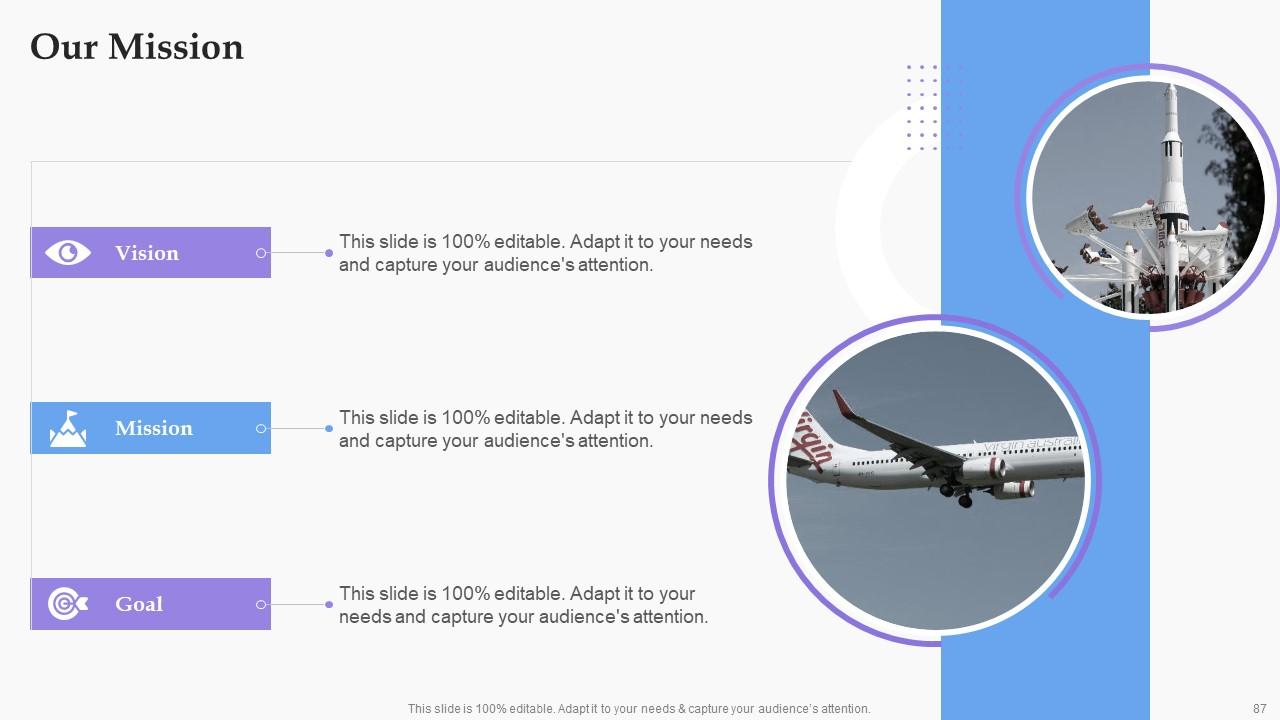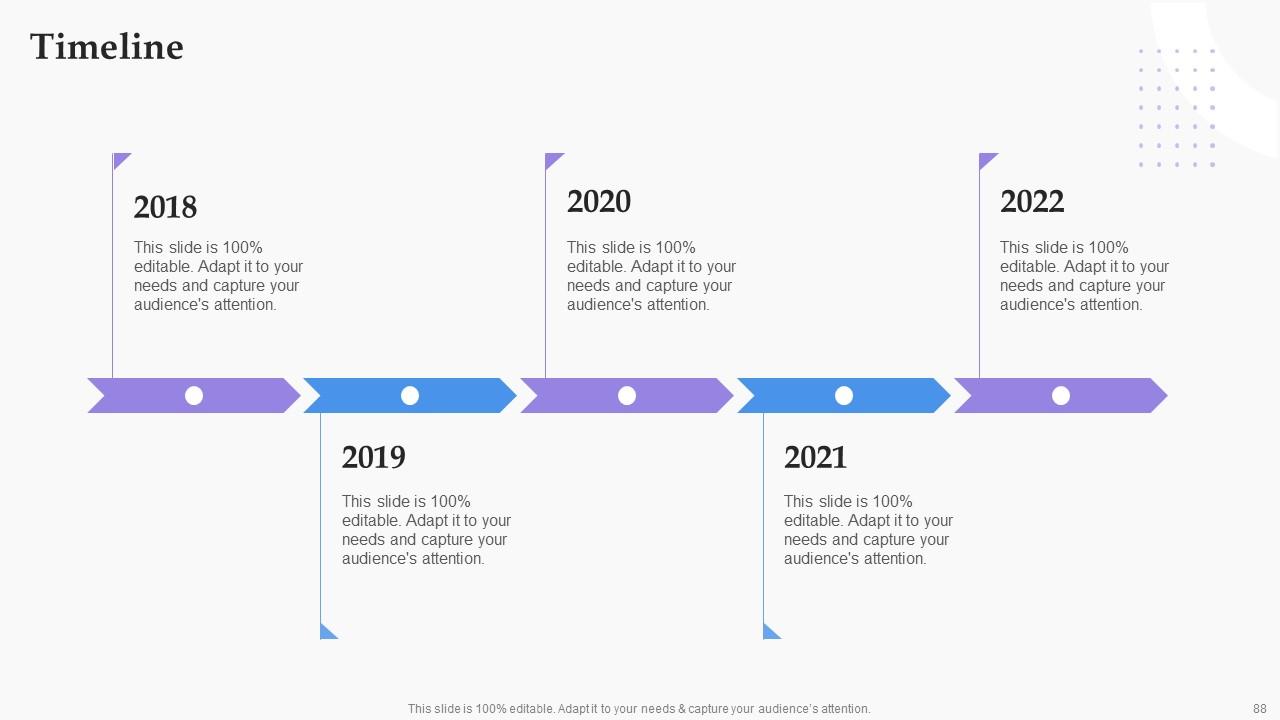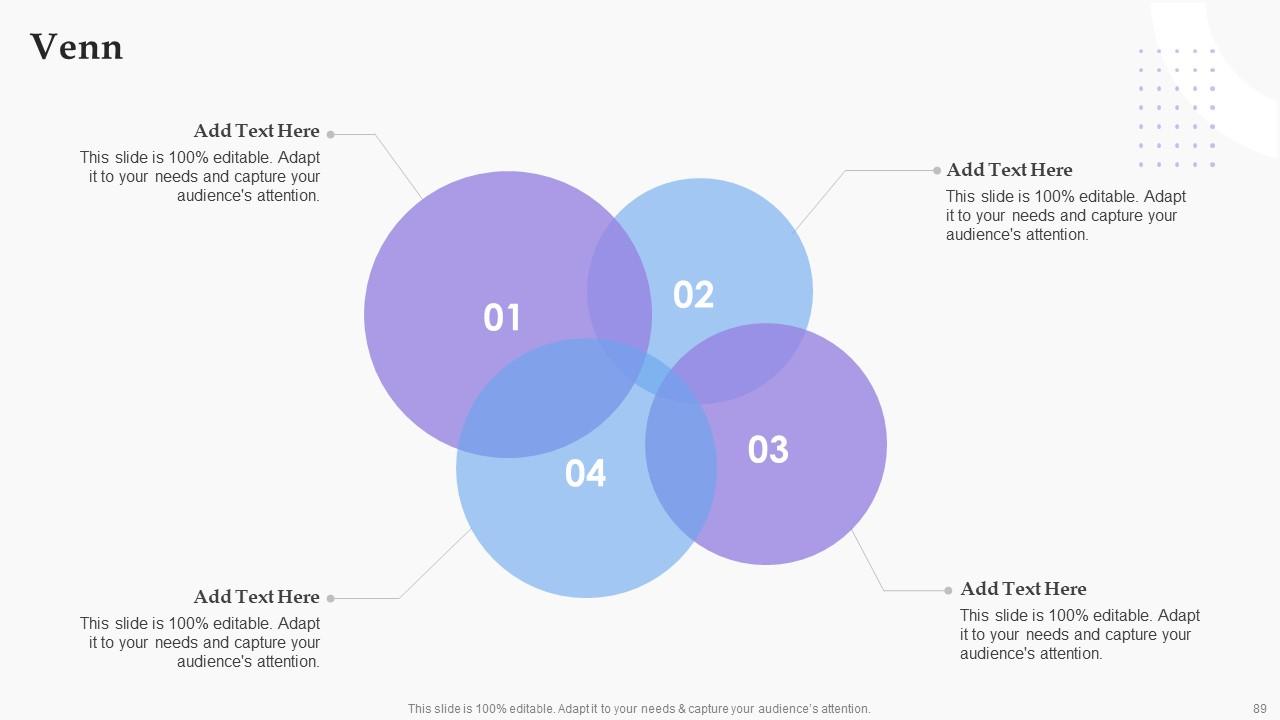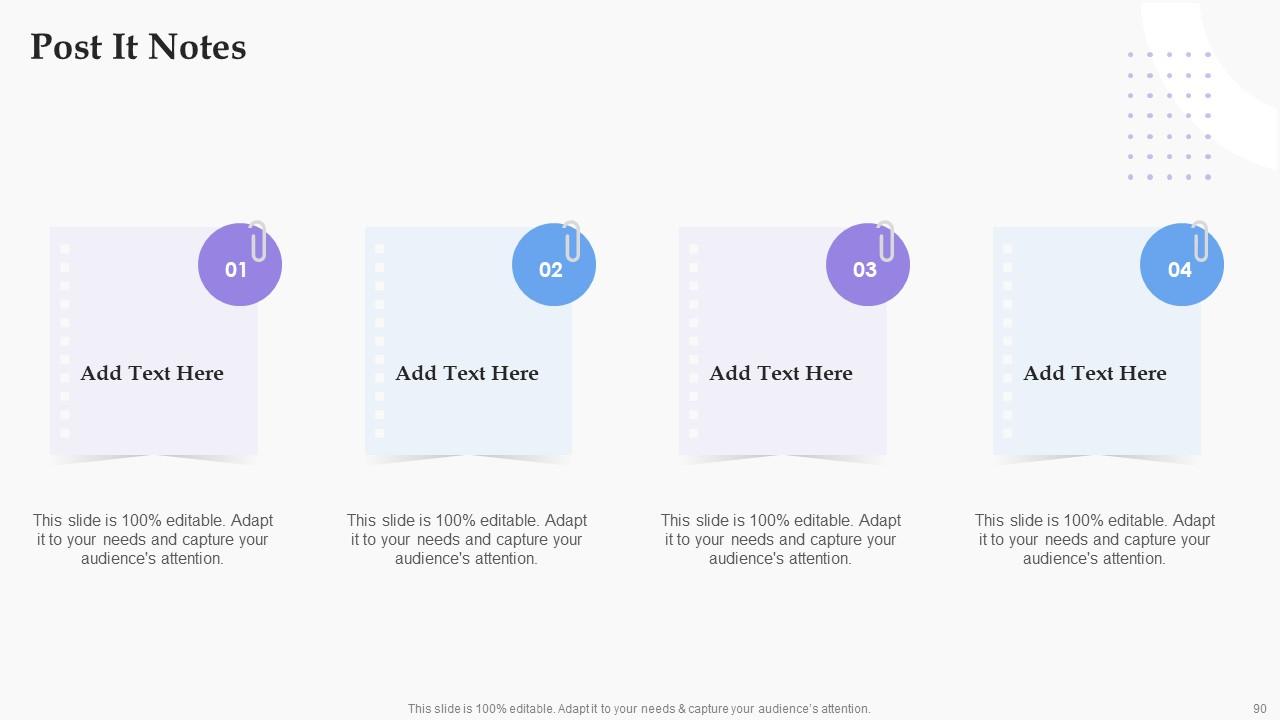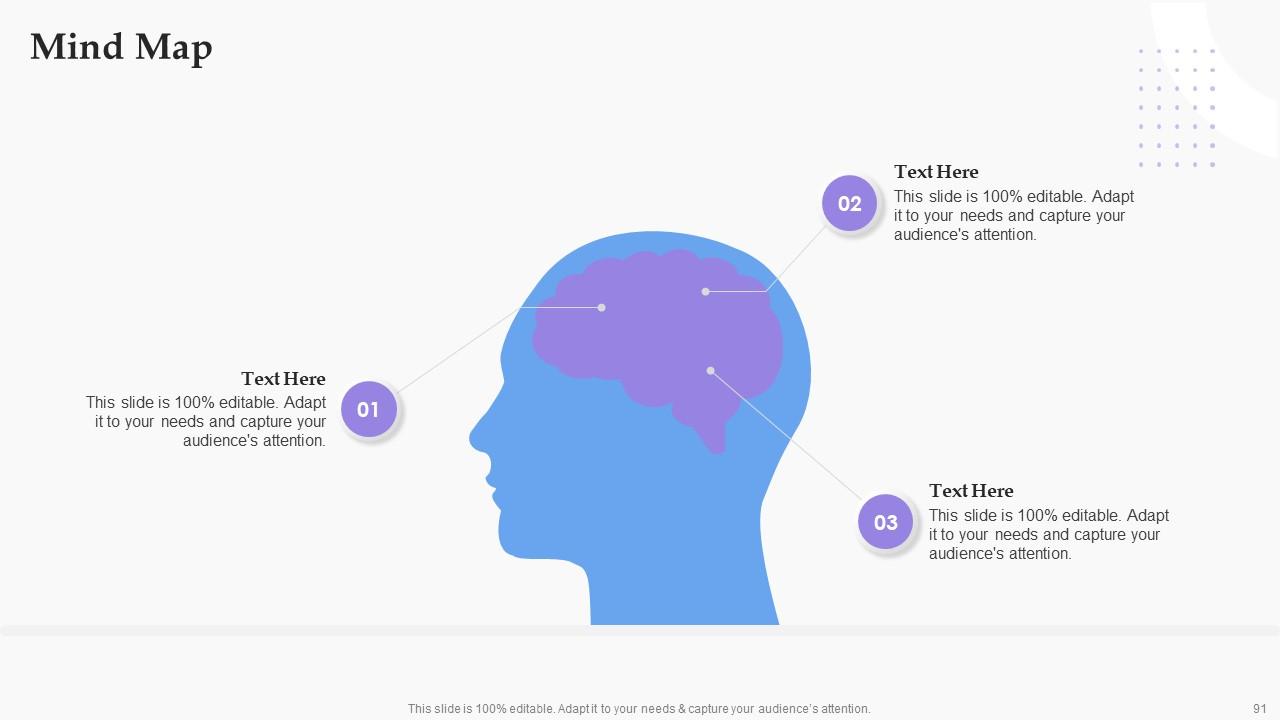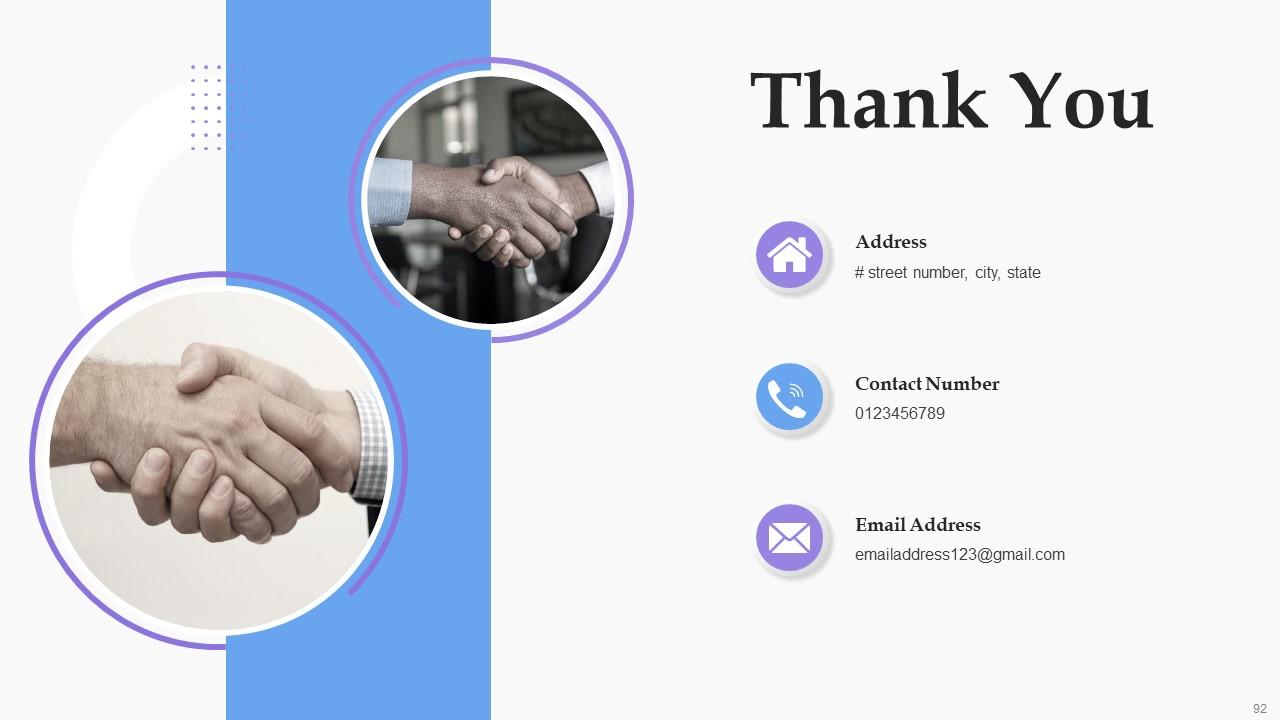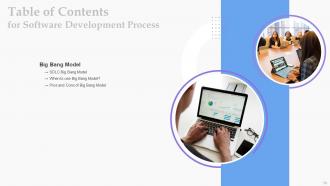Software Development Process Powerpoint Presentation Slides
In this Software Development Process PowerPoint presentation, we have covered an overview of the service provider company by including core values and strengths. This PowerPoint presentation is of significant assistance in learning about the SDLC Models service provider company, introduction to the Software Development Life Cycle, its need, working, and different models. In addition, Software Development Process PPT shows applications of SDLC models in other sectors, the need for software development lifecycle its working by covering its various phases such as requirement gathering, design, development, deployment, and maintenance. Moreover, this Software Development Life Cycle presentation represents the different SDLC models, including Waterfall, Rapid Application Development RAD, Spiral, V model, Incremental, Agile, Iterative, and Big Bang model, by covering their design, phases, applications, and advantages and disadvantages. Further, the Software Development Process template caters to the role of security in SDLC models by including its overview, importance, benefits, and working. Lastly, the SDLC deck comprises a pricing list for all services for SDLC models, a 30-60-90 days plan, a roadmap, a performance tracking dashboard, and the post-implementation impact of SDLC Models. Download it now.
In this Software Development Process PowerPoint presentation, we have covered an overview of the service provider company b..
- Google Slides is a new FREE Presentation software from Google.
- All our content is 100% compatible with Google Slides.
- Just download our designs, and upload them to Google Slides and they will work automatically.
- Amaze your audience with SlideTeam and Google Slides.
-
Want Changes to This PPT Slide? Check out our Presentation Design Services
- WideScreen Aspect ratio is becoming a very popular format. When you download this product, the downloaded ZIP will contain this product in both standard and widescreen format.
-

- Some older products that we have may only be in standard format, but they can easily be converted to widescreen.
- To do this, please open the SlideTeam product in Powerpoint, and go to
- Design ( On the top bar) -> Page Setup -> and select "On-screen Show (16:9)” in the drop down for "Slides Sized for".
- The slide or theme will change to widescreen, and all graphics will adjust automatically. You can similarly convert our content to any other desired screen aspect ratio.
Compatible With Google Slides

Get This In WideScreen
You must be logged in to download this presentation.
PowerPoint presentation slides
This complete deck covers various topics and highlights important concepts. It has PPT slides which cater to your business needs. This complete deck presentation emphasizes Software Development Process Powerpoint Presentation Slides and has templates with professional background images and relevant content. This deck consists of total of ninty two slides. Our designers have created customizable templates, keeping your convenience in mind. You can edit the color, text and font size with ease. Not just this, you can also add or delete the content if needed. Get access to this fully editable complete presentation by clicking the download button below.
People who downloaded this PowerPoint presentation also viewed the following :
Content of this Powerpoint Presentation
Slide 1: This slide introduces Software Development Process. State your company name and begin.
Slide 2: This slide states Agenda of the presentation.
Slide 3: This slide presents Table of Content for the presentation.
Slide 4: This is another slide continuing Table of Content for the presentation.
Slide 5: This slide highlights title for topics that are to be covered next in the template.
Slide 6: This slide shows Overview of the Software Development Life Cycle Company.
Slide 7: This slide represents the core values of the SDLC company.
Slide 8: This slide displays Strengths of Software Development Life Cycle Company.
Slide 9: This slide highlights title for topics that are to be covered next in the template.
Slide 10: This slide showcases Application of Software Development Life Cycle Models in Different Sectors.
Slide 11: This slide shows Software Development Life Cycle Models Applied by Industries.
Slide 12: This slide presents Time Usage of Software Development Life Cycle Models in Software Development.
Slide 13: This slide highlights title for topics that are to be covered next in the template.
Slide 14: This slide displays Overview of Software Development Life Cycle.
Slide 15: This slide describes the need for software development life cycle.
Slide 16: This slide depicts the importance of the software development life cycle to an organization.
Slide 17: This slide highlights title for topics that are to be covered next in the template.
Slide 18: This slide represents Phases of Software Development Life Cycle.
Slide 19: This slide showcases requirement gathering and analysis phase of the software development life cycle.
Slide 20: This slide depicts the designing of the product architecture phase of SDLC.
Slide 21: This slide describes the building or development of the product phase of SDLC.
Slide 22: This slide illustrates the testing phase of the software development life cycle.
Slide 23: This slide represents the deployment phase of the software development life cycle.
Slide 24: This slide depicts the maintenance phase of the software development life cycle.
Slide 25: This slide highlights title for topics that are to be covered next in the template.
Slide 26: This slide showcases Important Models of Software Development Life Cycle Life Cycle.
Slide 27: This slide shows Software Development Life Cycle Waterfall Model Design.
Slide 28: This slide presents waterfall model phases, including requirement gathering & analysis, system design, implementation, etc.
Slide 29: This slide represents the application of the waterfall model, including the conditions that should be fulfilled to use the waterfall model.
Slide 30: This slide describes the advantages of the waterfall model, including simplicity, straightness, stability, clearly defined stages, etc.
Slide 31: This slide depicts the disadvantages of the waterfall model, including risk & uncertainty, inadequate for long-term, etc.
Slide 32: This slide highlights title for topics that are to be covered next in the template.
Slide 33: This slide showcases Software Development Life Cycle Rapid Application Development (RAD) Model.
Slide 34: This slide shows Rapid Application Development Model Design.
Slide 35: This slide presents Rapid Application Development Life-cycle.
Slide 36: This slide represents the scenarios where rapid application development models can be used.
Slide 37: This slide showcases Pros of Rapid Application Development Model.
Slide 38: This slide shows Cons of Rapid Application Development Model.
Slide 39: This slide highlights title for topics that are to be covered next in the template.
Slide 40: This slide represents the spiral model of the software development life cycle.
Slide 41: This slide depicts the phases of the spiral model, such as requirement analysis, design, coding, testing & risk analysis, etc.
Slide 42: This slide represents the situations when the spiral model can be implemented.
Slide 43: This slide depicts the advantages of the spiral model, including flexibility, extended prototyping, precise requirements, etc.
Slide 44: This slide represents disadvantages of the spiral model, including management and procedure complications, hard to know the end date, etc.
Slide 45: This slide highlights title for topics that are to be covered next in the template.
Slide 46: This slide showcases Software Development Life Cycle V-Model Design.
Slide 47: This slide illustrates the verification phases of the V-model, including business requirement analysis, system design, etc.
Slide 48: This slide shows the validation phases of the V-model, including unit testing, integration testing, system testing, etc.
Slide 49: This slide represents the conditions when we can implement V-model, including consistent product definition, clear and precise prerequisites, etc.
Slide 50: This slide describes the advantages of the V-model, including the disciplined methodology, effectiveness for smaller projects, etc.
Slide 51: This slide represents the disadvantages of the V-model, including uncertainty and risk.
Slide 52: This slide highlights title for topics that are to be covered next in the template.
Slide 53: This slide showcases Software Development Life Cycle Incremental Model.
Slide 54: This slide shows the phases of the incremental model, such as requirement analysis, design and development, etc.
Slide 55: This slide represents the scenarios when the incremental model can be deployed.
Slide 56: This slide showcases Advantage and Disadvantages of Incremental Model.
Slide 57: This slide highlights title for topics that are to be covered next in the template.
Slide 58: This slide shows Software Development Life Cycle Agile Process Model.
Slide 59: This slide represents the phases of the agile process model, including requirement gathering, design, etc.
Slide 60: This slide shows the various testing methods of agile, such as scrum, extreme programming, crystal, etc.
Slide 61: This slide describes the cases when the agile process model can be implemented.
Slide 62: This slide represents the pros of the agile process model, including realistic software, fewer resources required, etc.
Slide 63: This slide describes the cons of the agile process model.
Slide 64: This slide highlights title for topics that are to be covered next in the template.
Slide 65: This slide represents the iterative model design of the software development life cycle.
Slide 66: This slide represents the phases of the iterative model, such as requirement gathering and analysis, design, implementation, etc.
Slide 67: This slide displays cases where we can deploy an iterative model.
Slide 68: This slide represents Advantages of Iterative Model.
Slide 69: This slide depicts the disadvantages of the iterative model.
Slide 70: This slide highlights title for topics that are to be covered next in the template.
Slide 71: This slide shows Software Development Life Cycle Big Bang Model.
Slide 72: This slide represents the scenarios when the big bang model can be implemented.
Slide 73: This slide depicts the pros and cons of the big bang model.
Slide 74: This slide highlights title for topics that are to be covered next in the template.
Slide 75: This slide depicts the overview and importance of a secure software development life cycle.
Slide 76: This slide showcases Advantages and Working of Secure SDLC.
Slide 77: This slide highlights title for topics that are to be covered next in the template.
Slide 78: This slide shows Pricing for Software Development Life Cycle Models.
Slide 79: This slide presents 30-60-90 Days Plan for Software Development Life Cycle.
Slide 80: This slide displays Roadmap for Software Development Life Cycle Models.
Slide 81: This slide represents Performance Tracking Dashboard for Software Development Life Cycle.
Slide 82: This slide highlights title for topics that are to be covered next in the template.
Slide 83: This slide showcases Post Implementation Impact of Software Development Life Cycle Models.
Slide 84: This slide contains all the icons used in this presentation.
Slide 85: This slide is titled as Additional Slides for moving forward.
Slide 86: This is About Us slide to show company specifications etc.
Slide 87: This is Our Mission slide with related imagery and text.
Slide 88: This is a Timeline slide. Show data related to time intervals here.
Slide 89: This slide depicts Venn diagram with text boxes.
Slide 90: This slide shows Post It Notes. Post your important notes here.
Slide 91: This slide displays Mind Map with related imagery.
Slide 92: This is a Thank You slide with address, contact numbers and email address.
Software Development Process Powerpoint Presentation Slides with all 97 slides:
Use our Software Development Process Powerpoint Presentation Slides to effectively help you save your valuable time. They are readymade to fit into any presentation structure.
FAQs
SDLC stands for Software Development Life Cycle. It is a structured approach to software development that includes various phases, such as requirement gathering, design, development, testing, deployment, and maintenance. It is important for an organization because it helps ensure that the software is developed efficiently, effectively, and in a timely manner and meets user requirements and quality standards.
The core values of the SDLC (Software Development Life Cycle) company are excellence, innovation, customer satisfaction, teamwork, and integrity. These values guide the company's operations, decision-making processes, and client and stakeholder relationships.
The SDLC (Software Development Life Cycle) phases include requirement gathering and analysis, product architecture and design, product development, testing, deployment, and maintenance. These phases are followed sequentially, and each phase must be completed before moving on to the next one.
There are several software development life cycle models, including the waterfall, rapid application development (RAD), spiral, V-model, and agile process models. Each model has its own advantages and disadvantages, and the choice of model depends on the specific needs of the project and the organization.
The advantages of the waterfall model include simplicity, clearly defined stages, and stability. The disadvantages include risk and uncertainty, inadequate long-term projects, and difficulties in accommodating changes or modifications.
-
Wow! The design and quality of templates on SlideTeam are simply the best.
-
Qualitative and comprehensive slides.


